

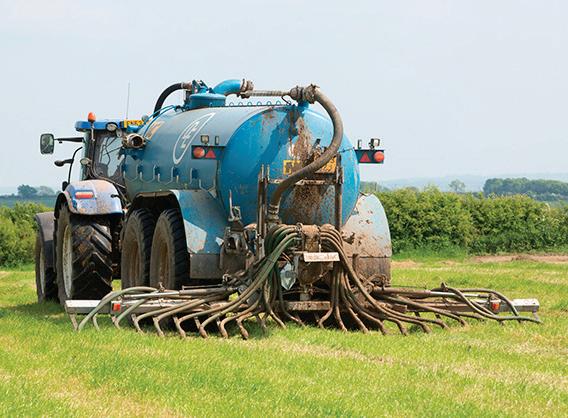


















































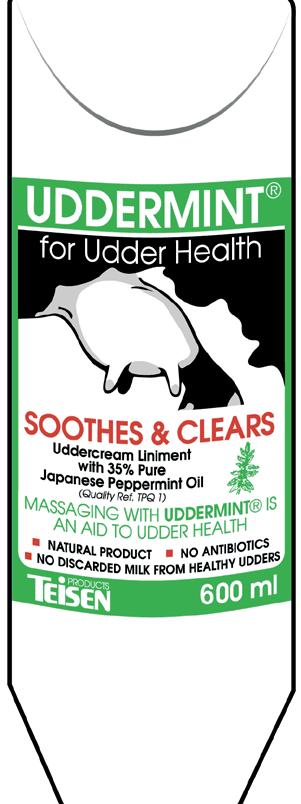






UDDERMINT ® www.uddermint.com
Christmas from Pages 44-55
30-43 MILKING MUCK AND SLURRY
the
parlour technology
options, grants
automated scrapers
10-12 ON FARM FEATURE MILK PRICES
60-62
forage figures TIP OF THE MONTH: Reed beds an option to manage dirty water – p54 December 2023 Volume 70 Issue 12 Pages 16-17 Vet’s View Sole depth critical for lameness prevention
Happy
Pages
Exploring
benefits of
Storage
and
Pages
Pages
Grassland focus drives milk from


LEGAL CATEGORY: UK: POM-V. Veterinary medicinal product subject to veterinary prescription. Use medicines responsibly. Under veterinary prescription, advice should be sought from veterinary prescriber.
HIPRABov1s·�: Inactivated vaccine with Histophi/us somni and Mannheimia haemolytica leukotoxoid in injectable emulsion for cattle. INDICATIONS: For the reduction of clinical signs and lung lesions caused by Mannheimia haemolytica serotype Al and Histophilus somni in calves from 2 months of age. For more

Nottingham,
IS BRD BOTHERING YOU? HIPRABOVIS ® SOMNI/Lkt NASYM ® BREATHE EASY NASYM" : lyophilisate and solvent for suspension for injection or nasal spray for cattle. Each 2ml dose contains: Live attenuated bovine respiratory syncytial virus (BRSV), strain Lym-56 10 4.7 - 6.5 CCIDS0. INDICATIONS: Active immunisation of cattle to reduce virus shedding and respiratory clinical signs caused by bovine respiratory syncytial virus. For more information about side-effects, precautions, warnings and contra-indications please refer to the packaging or product leaflet. Further information available from SPC or on www.hipra.com. MARKETING AUTHORISATION NUMBERS: UK(GB) Vm17533/5008, UK(NI): EU/2/19/241/001-2. MARKETING AUTHORISATION HOLDER: Laboratories Hipra, S.A. Amer (Girona), SPAIN. LOCAL REPRESENTATIVE: HIPRA UK&IRELAND, Foxhall Lodge, Foxhall Road, NG7 6LH, Nottingham, United Kingdom, Tel.: (+44) 0115 845 6486, ukandireland@hipra.com, www.hipra.com.
information about side-effects, precautions, warnings and contra-indications please refer to the packaging or product leaflet. Further information available from SPC or on www.hipra.com. MARKETING AUTHORIZATION NUMBER: UK: Vm 17533/4005 MARKETING AUTHORIZATION
HIPRA, S.A. Avda. La Selva, 135. 17170Amer (Girona) Spain.
(972) 430660 -
(972) 430661. LOCAL REPRESENTATIVE: HIPRA UK&IRELAND, Ltd. Foxhall Business Centre, Foxhall Lodge, Foxhall Road, Nottingham - NG7 6LH - UNITED KINGDOM. LEGAL CATEGORY: UK: POM-V. Use medicines responsibly. Under veterinary prescription, consult your veterinary prescriber for further advice. Safety and efficacy of these products together have not been evaluated. A decision to use either of these vaccines before or after any other veterinary medicinal product therefore needs to be made on a case-by-case basis. HIPRA UK AND IRELAND Foxhall Lodge, Foxhall
NG7 6LH,
United Kingdom Tel (+44) 0115 845 6486 · ukandireland@hipra.com · www.hipra.com
HOLDER: LABORATORIOS
Tel.
Fax
Road,

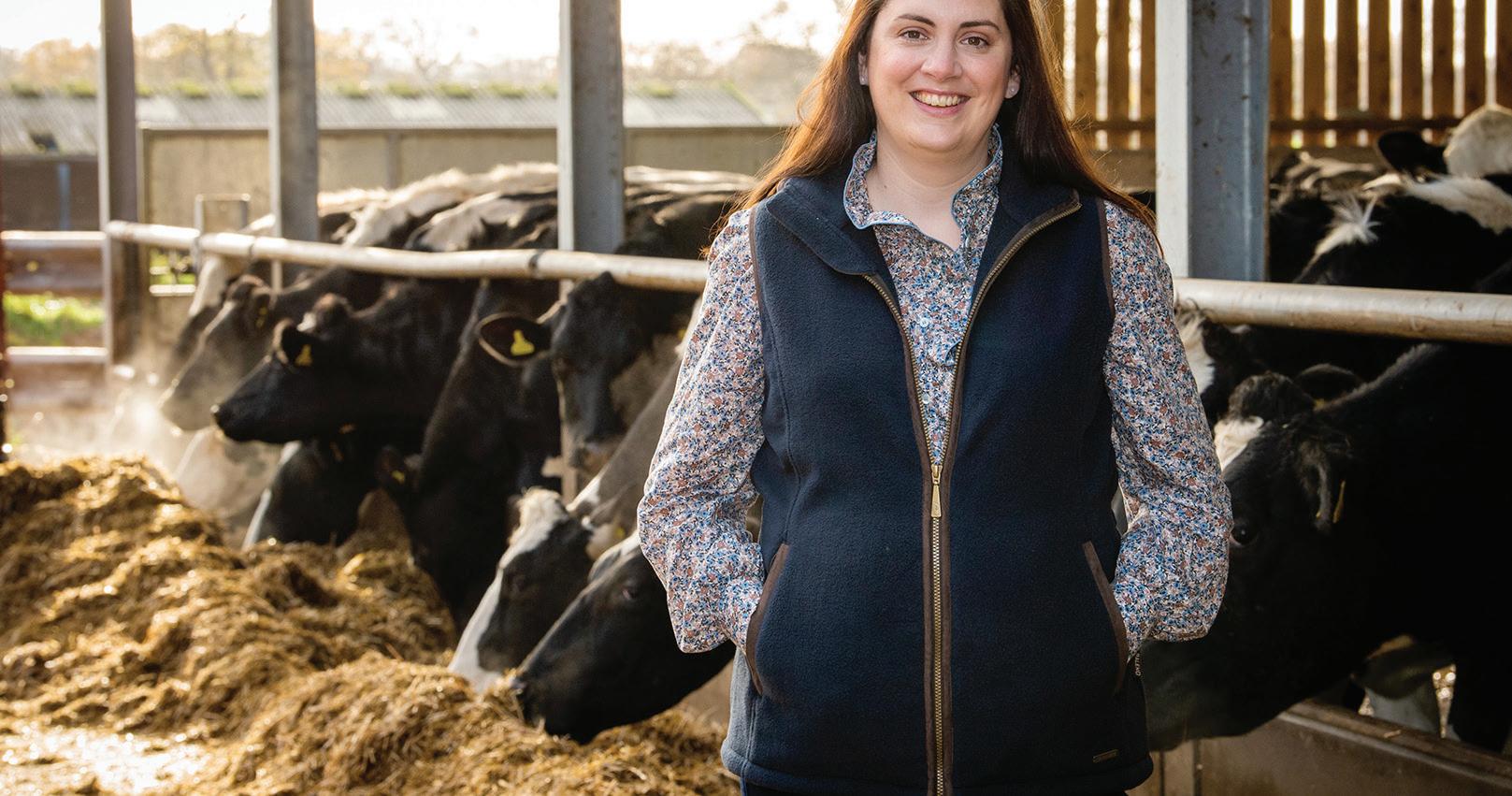
As we hurtle towards the end of the year, it is a good time to take stock on what has been another whirlwind of a 12 months in the dairy sector.
is time last year, there were warnings suggesting milk prices were going to drop, and those warnings played out to be true. Unfortunately, this was not matched by a rapid drop in costs of production and it looks like these increased costs are here to stay.

ere are now some signs that there might be greater stability to the milk price, which is indeed welcome news, but there is still some way to go it seems.
ere has also been plenty going on in the political world with us having to learn more about yet another Defra Secretary.



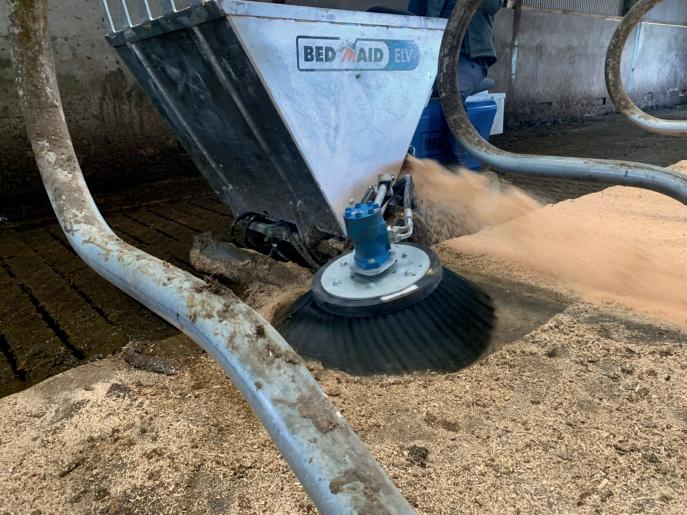
Steve Barclay will be the eighth Secretary of State in just seven years. is perhaps tells us all we need to know about the state the Government is in at the moment.
But on the ip side, as I have a ended shows, events and conferences around the country over the last 12 months, there is also a great deal to be positive about, despite everything else which is going on.
Investment
ere is still plenty of investment to be seen on dairy farms around the country, a avour of this is given in this month’s milking technology special (p30-43) and there are still plenty who remain passionate and positive about this industry.
As we approach Christmas, I would like to wish you all a Merry Christmas and a prosperous 2024.
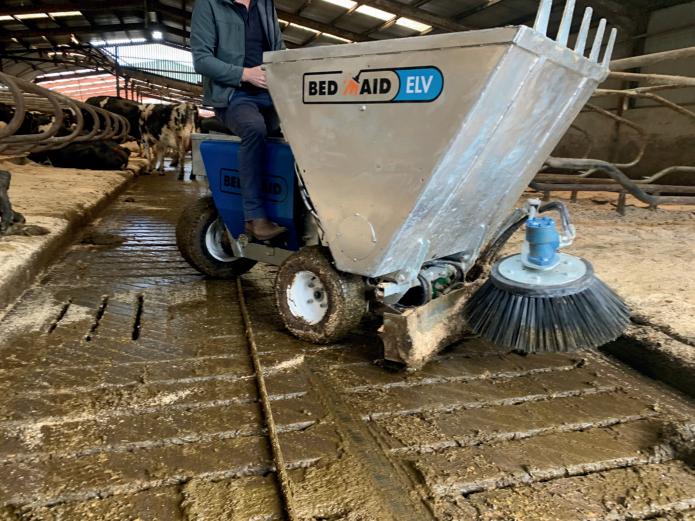

3
NOW AVAILABLE FOR ON FARM DEMO Call Wilson Agri on 028 7086 8430 to book your demo now! As seen on Save time & bedding - bed 250 cubicles in less than 20mins Minimal noise, pollution and running costs Low maintenance - no filters Fully hot-dip galvanised - ensures no damage to the hopper when collecting bedding Easy loading - loading is simplified to the pull of a lever Fast energy efficient charging - standard 13amp socket Petrol & diesel options also available FULLY ELECTRIC
Dairy Farmer, Unit 4, Fulwood Business Park, Caxton Road, Preston, Lancashire PR2 9NZ Origination by Farmers Guardian, Unit 4, Fulwood Business Park, Caxton Road, Preston, Lancashire PR2 9NZ. Printed by Precision Colour Printing, Halesfield 1, Stirchley, Telford TF7 4QQ. No responsibility can be accepted by Dairy Farmer for the opinions expressed by contributors. Editor Katie Jones 07786 856 439 katie.jones@agriconnect.com Content Editor/Designer Mike Begley 01772 799 405 mike.begley@agriconnect.com Picture Editor Marcello Garbagnoli 01772 799 445 marcello.garbagnoli@agriconnect.com Sales Director Stephanie Ryder 07917 271 987 stephanie.ryder@agriconnect.com Account Manager Mark Jackson 01322 449 624, mark.jackson@agriconnect.com Classified Advertisements 01772 799 400 fgclassified@agriconnect.com Advertising Production Justine Sumner 01772 799 437 Fax: 01772 796 747 justine.sumner@agriconnect.com Circulation and subscriptions 0330 333 0056 help@subscribe.farmers-guardian.com Subscription rates: UK £65 a year Europe: £85 World: £95 ISSN 1475-6994 © Farmers Guardian 2023 All rights reserved. No part of this publication may be reproduced or transmitted in any form or by any means, electronic or mechanical including photocopying, recording, or any information storage or retrieval system without the express prior written consent of the publisher. The contents of Dairy Farmer are subject to reproduction in information storage and retrieval systems. Contacts DECEMBER 2023
a word from the editor

26-27 British Farming Awards

Farmer fury over Senedd member’s ‘deplorable’ TB comments
Dairy farmers in Wales were angry after Labour Senedd member for Mid and West Wales, Joyce Watson MS, said dairy farms with ‘perpetual TB should find another business’.
Minister for Rural Affairs Lesley Griffiths had delivered her statement on the picture of bTB in Wales when Ms Watson questioned the Minister on whether she had ‘looked at any farms which had perpetual TB’ and if she had considered whether those farms ‘should be dairy farms at all and should find another business’.
Ms Griffiths has since come under fire for not ‘addressing the hurtful comments’ with Plaid Cymru’s Llyr Gruffydd MS, adding the Minister had ‘missed her opportunity to challenge and stand up for agricultural community’.
Ms Watson said she was talking about ‘several farms which have been continuously impacted by TB’.
Cycle
She said: “I know that the cycle of having to test, to cull, then to start all over again causes a huge stress to dairy farmers.
“In those cases, I think there
Revolving door at Defra
JThe new Secretary of State at Defra Steve Barclay has pledged to ‘back British farming’ as he takes up his new role following Prime Minister Rishi Sunak’s reshuffle and resignation of Therese Coffey.
But while industry bodies exchanged pleasantries in ‘welcoming’ the latest Secretary of State, many dairy farmers are feeling less optimistic about the appointment.
On hearing the news, many spoke out about Mr Barclay’s lack of agricultural or environmental experience, asking how further changes at the top would ease farmer concerns over ‘changeable farming policy’ and ‘continued uncertainty’.
Dairy farmer Charles Goadby,
from Warwickshire, said: “Like that of his predecessors, his appointment demonstrates the Government’s view of food and farming which is very much in tune with the majority of electorate.
“It is not a priority and something many of them take for granted.”
Support
Mr Barclay said: “I am excited to be championing rural communities, supporting our excellent food producers and continuing to drive our Plan for Water which is delivering more investment, stronger regulation and tougher enforcement.”
4
DECEMBER 2023 VOLUME 70 ISSUE 12 DECEMBER 2023 8 DAIRY TALK Updates from Dan Burdett and Matthew Winter 10 ON FARM Grassland focus drives milk from forage figures 14 DAIRY MATTERS ‘Britain is ripe for the next agricultural revolution’ 16 VET’S VIEW Sole depth critical for lameness prevention 18 YOUNGSTOCK Care for calves and keep consumers on side 20 WORLD DAIRYING Challenging time for Israeli family farm 22 BREEDING Grassland nutrition for a sustainable future 26 BRITISH FARMING AWARDS Highlights from the event 28 CONFERENCE 30 MILKING Exploring the benefits of parlour technology 44 MUCK AND SLURRY Storage options, grants and automated scrapers 56 MACHINERY Using solar panels to generate electricity 60 MILK PRICES 64 MILK ANALYSIS UK commodity prices trending up 66 NEW PRODUCTS Round-up of products and updates hitting the market 70 GOOD EVANS ‘It’s a merry-go-round where one sector supports the other’ 72 BUSINESS CLINIC Milk output falls behind UK population growth 74 RESEARCH
What’s inside?
56-59 Machinery
NEWS


should be a conversation about how that situation can be resolved or at least improved.”
Dairy farmers who listened to Ms Watson’s comments were furious about the lack of empathy and understanding she showed.
Susie and Mark Mo ershead run a pedigree Holstein herd on the Welsh border and have been ba ling bTB for over a decade.
Mrs Mo ershead said: “ Comments like this make me want to cry; we are that farm. We trust in Welsh Government to eradicate
TB and support their farmers.”
NFU Cymru has called the comments ‘deplorable’ and has wrote a le er to Ms Watson to underline the hurt her comments have caused to livestock farmers and their families in Wales.
NFU Cymru bTB focus group chair Roger Lewis and dairy farmer said: “I am struggling to put into words my frustration that a Member of the Senedd elected to represent Mid and West Wales could make such deplorable comments, so lacking in empathy and respect.
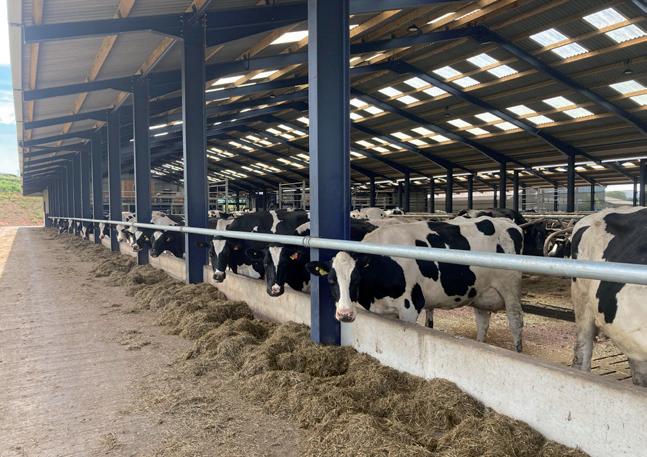
“Your suggestion that these families, many of whom are su ering persistent bTB breakdowns despite adhering to strict veterinary and scienti c advice, should just walk away and nd another business is – frankly – shocking.”
Mr Lewis invited Ms Watson to spend a day on-farm in her constituency to meet farming families who are determined to get rid of the disease from the countryside.
He said: “ ey have no intention of walking away and nding something else to do.”
Project awarded £700k for early disease detection
JA project to develop automated and real-time monitoring of disease in cattle has been awarded nearly £700,000. The DETECT project, involving scientists from Scotland’s Rural College, focuses on developing an automated, datadriven system for non-invasive and real-time monitoring of respiratory disease in dairy-bred calves. The project will utilise stateof-the-art technology, alongside commercially relevant lower cost sensors, to characterise the volatile metabolites found on the breath of healthy cattle and of those diagnosed with respiratory infection.
Grant competition
JThe Digital Dairy Chain has announced the winners of the 2023 collaborative research and development grant competition, run by the UK’s national innovation agency, Innovate UK.
The winning projects will receive funding totalling £2 million, with individual projects receiving grants of between £200,000-£350,000, which will be invested in work taking place predominantly across Cumbria and South and West Scotland, the Digital Dairy Chain’s geographical reach. The projects cover topics including calf environment ventilation, genomics and the breeding of methane-efficient cattle.


AGRICULTURAL & INDUSTRIAL STEEL FRAMED BUILDINGS Livestock Housing, Crop Storage, Industrial & Commercial, Tip Troughs Schurr Cow Brushes BEDDING MACHINES Telephone: 01524 792247 e-mail: sales@rebuildings.co.uk www.rebuildings.co.uk Scrape, Sweep and Spread in one pass. Bedding Material and Labour saving. Reduce cell count and increase production. Prevent disease and maintain good animal Health. Self-loading models available. Simple to drive and manoeuvre. 1 or 3 wheel drive. ELECTRIC ASK FOR DETAILS NOW AVAILABLE NEW
NEWS 5
DECEMBER 2023
Minister for Rural Affairs Lesley Griffiths had delivered her statement on the picture of bTB in Wales.
Feed savings by starling-proofing sheds
Investing £30,000 in starling-proo ng ca le housing is a major outlay for a Welsh dairy farming business, but it calculates a payback period of just two months in feed savings alone.
Between October and March, Nantgoch Farm, near Oswestry, is plagued by starlings foraging for maize and other grain in the total mixed ration fed to the 770-cow dairy herd.
Before the Jones family embarked on a programme of work last year to protect buildings with welded wire mesh panels, it was estimated that about 50,000100,000 starlings were helping themselves to four tonnes of feed daily at a cost of £15,000 a month. ere were also nancial losses from reduced milk production – up to two litres per cow per day due to the lower energy density of the fed ration from predation, with negative e ects on fertility as a consequence.
Bryn Jones, who farms with his wife Bev and son Mathew, told farmers a ending a recent Farming Connect open event at Nantgoch that the money spent so far on measures to deter starlings had been a very worthwhile investment.
He said: “It is a lot of money to

Protecting feed passages on the outside of buildings had been one of the biggest challenges.

nd and we still have another 20% of the buildings to do, but it is the only way we can protect the feed and the cows from the infestation.”
Protecting feed passages on the outside of buildings had been one of the biggest challenges, but it was achieved with cage-like canopies which can be raised o the passage when the feed wagon is depositing the ration and winched back into
position when ca le are feeding. One of the next hurdles is to protect the maize clamp during times when access is not needed.
Milk production
Graphs produced by the farm vet, Rob Edwards, of Cain Vets, show dips in milk production during the months of peak infestation, with a potential 4.4% loss in
energy corrected milk during those months compared to the period when starlings have migrated, although other factors such as day length and a dip in maize silage quality later in the year can in uence that too.
Mr Edwards also warned of the health risks from starlings as potential vectors of infectious diseases, such as salmonella typhimurium.
Minister rethinks in calf bTB slaughter
J e policy of on-farm slaughter of heavily pregnant cows and heifers with TB is being considered as a ma er of ‘priority’, Welsh Rural A airs Minister Lesley Gri ths told the Senedd in November.
Ms Gri ths said while there was an obvious need to remove positive reactors from farm as quickly pos-
sible, she acknowledged the emotional toll the action had on both the animals and the farmers.
Delay
However, Conservative MS and Shadow Minister for Rural A airs Samuel Kurtz questioned the delay and said it should not
take a ‘seismic change in policy’ to enable Wales to adopt another model such as that in England which, under strict circumstances, allows slaughter to be delayed until the animal has given birth if it is in the last 60 days of pregnancy.
Ms Gri ths also announced
changes to pre-movement testing to ‘strengthen’ the Welsh Government’s approach to TB eradication.
From February 1 next year, pre-movement testing for cattle will be reintroduced within and from the low TB area and post-movement testing extended in intermediate TB areas.
6 DECEMBER 2023
NEWS











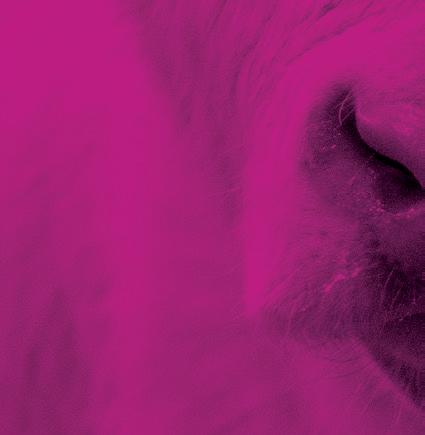









PERFECT PARTNERS FOR EARLY-LIFE PNEUMONIA PROTECTION
Vaccinate from the day of birth onwards against the key pneumonia viruses BRSV, Pi3 and now Bovine Coronavirus (BCoV) with Bovilis® INtranasal RSP™ Live and Bovilis Nasalgen®-C.




Part of the MSD Animal Health Respiratory Programme. Contact your vet for further information.



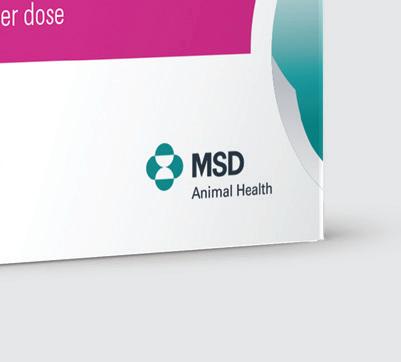



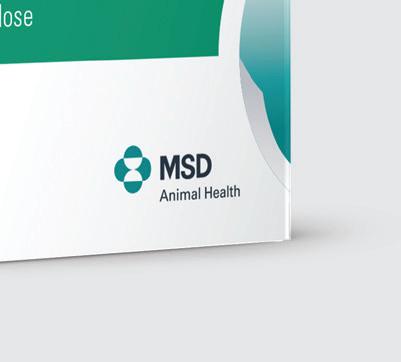
Bovilis Nasalgen®-C contains live bovine coronavirus, strain CA25. POM-V. Bovilis® INtranasal RSP™ Live contains live BRSV and Pi3. POM-V. Bovilis® Bovipast® RSP contains inactivated BRSV (strain EV908), Pi3 virus (strain SF-4-Reisinger) and inactivated Mannheimia (Pasteurella) haemolytica (serotype A1). POM-V. Bovilis® IBR Marker Live contains live bovine herpesvirus type 1 (BHV-1), strain GK/D (gE¯)*: 105.7 - 107.3 TCID50**. *gE¯: glycoprotein E negative. **TCID50: tissue culture infective doses 50%. POM-V. Bovilis® Huskvac contains viable Dictyocaulus viviparus 3rd stage irradiated larvae. POM-V Further information is available from the respective SPC, datasheet or package leaflets. MSD Animal Health UK Limited. Registered office Walton Manor, Walton, Milton Keynes MK7 7AJ, UK. Registered in England & Wales no. 946942. Advice should be sought from the medicine prescriber. Use Medicines Responsibly. Copyright © 2023 Merck & Co., Inc., Rahway, NJ, USA and its affiliates. All rights reserved. UK-BOV-230700002
Dan Burdett
DAIRYTalk
Dan and his family own and run the 300-hectare (741-acre) Cockhaise Farm, near Haywards Heath, West Sussex. The farm is home to an organic autumn-calving herd of 240 Holstein and Friesian crosses. He also contract farms another organic autumn-calving herd of 220 cows at Bore Place, near Edenbridge, Kent.
“ I feel the strain of farming pulling a little tighter, with challenges coming from many angles
As the last of the autumn-born beef calves leave the farm, I can look back on a very good 2023 calving season down here in Sussex.
The difference that using Cow Manager made last winter shone through as we calved 85% in the first three weeks of calving, and 98% within six weeks. To say calving was a blur would be an understatement.
Cows are in excellent condition and the weather gods looked down favourably on us to keep cows out day and night until October 20, saving some muchneeded cash before we head into an expensive winter.
The recent price rise for our organic milk was much needed and will certainly help to move closer to financial parity this year, but we are by no means out of the woods yet.
Our belief in organic is strong – similar to so many in our position – but we must keep an open mind as to where the future of dairy farming is moving.
On our Kent farm, we are still shut down with bovine TB, having failed a third test this year, and went into calving knowing that our calves now had minimum value in the market.
I would estimate that we would be £10,000 to £15,000 down on the calf enterprise this year, and the strain of holding more calves than our buildings can cope with has tested both man and beast.
As with all farmers in this situation, we now find ourselves just hoping that things turn around.
Alongside the vets and other local farmers, we are vaccinating the local badger population in the hope that this brings some long-term relief, but the hundreds of deer that roam the local area may have a say in the situation too unfortunately.
Due to bTB, we will be using sexed semen on that farm for the first time, having resisted using it for years. Unbelievably, only about 10% of dairy semen sold in the South East is now non-sexed, making me occasionally feel like a laggard.
The flip side to this is the continuing pressure this seems to be putting on the calf buyers in this part of the world. With a huge drop in the number of black and white bulls available, they are finding it hard to justify the huge increase in the costs of buying calves and many have had enough and packed up.
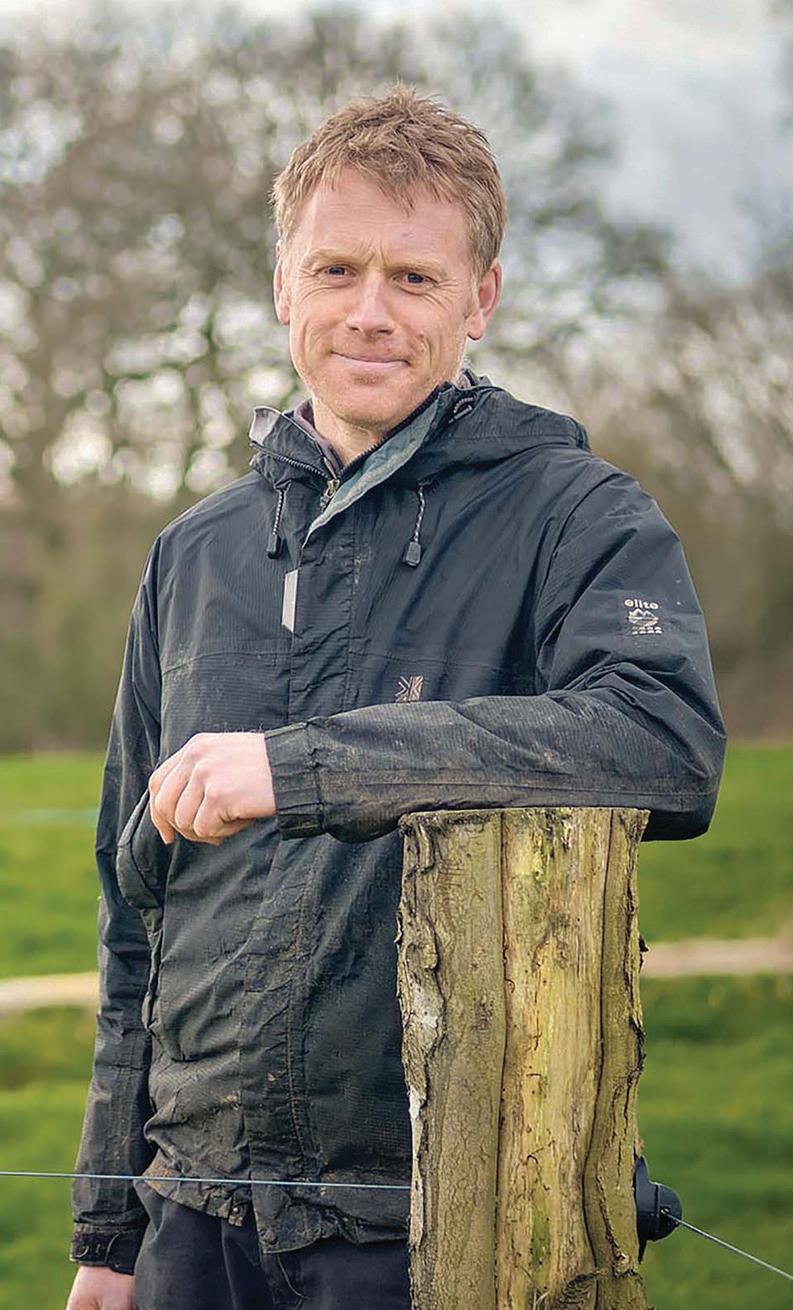
As dairy farmers, I believe it is our responsibility to ensure that we have a thriving beef chain working alongside us in the coming years.
As we move into winter and the storm clouds gather, both physically and metaphorically, I feel the strain of farming pulling a little tighter, with challenges coming from many angles and the opportunities seemingly just out of reach.
Small things
In times like this, it is incredibly important to cherish the small things about our jobs that we love, the beautiful places that we work and the love and support of those around us.
I feel lucky to have many friends within the industry who I feel able to talk to in times of strife, and that organisations such as Farming Community Network are there 24 hours a day to support those when they are most in need.
8
DECEMBER 2023
Matthew Winter
Matthew Winter returned to the family farm in 2011 and is one of four partners in the mixed dairy/arable family farm in Lincolnshire, where 210 Holsteins are milked under the Corringham prefix. He sits on the Holstein UK board of trustees and started his career at Holstein UK as an animal breeding analyst before training to be a chartered accountant.
“ Events are a welcome social break from a job that can be isolating at times
Our embryo transfer technician joked that when he drove away from a farm in late March he cheerily wished his client a ‘Happy Christmas’ having just implanted 30 embryos. Well, a bit of bad planning in the Winter household means we have put ourselves in a similar position for 2023.
We still do some embryo transfer work, although less than we used to, mainly because sexed semen has made it easier to breed replacements from our best cows.
But we find buying embryos is a handy way to get into new cow families, and we genuinely feel investing in high-quality genetics makes a real difference to improving our herd and our profitability.
For me, it is also an interest and it means there is always something to look forward to even in the middle of winter and when times are tough.
Like many, our milk price has fallen about 40% during 2023, and with some costs still rising we are starting to feel the pinch.
High interest rates are particularly significant for us, having purchased our home farm in 2015 and another block of land in 2021.
We have a flat farm with heavy clay soil, and with an incredibly wet autumn we only completed about half of our winter cereal drilling – some seed we managed to drill looks as though it would have been happier left in the bag.
All our youngstock have been inside for some time, and it looks like it’s going to be a long winter. But, fortunately, we have good stocks of forage this year, so hopefully that should not be too much of an issue.
UK Dairy Day
As I have not written since UK Dairy Day, it would be remiss of me not to mention it. There were over 8,000 visitors, and the event as always was a really enjoyable day out. Much of the success was due to the hard work of Hannah Williams and the events team at Holstein UK.

There really is a tremendous amount to see at the event and it has deservedly cemented its place as an unmissable event for the dairy industry.
The quality of cattle in the Holstein ring was the best I can remember, and we were treated to a masterclass in judging courtesy of Iwan Morgan of the Erie Herd.
To top off a great day for me, we were delighted to be the overall runner-up in the Premier Pedigree Herd competition behind worthy winners, the Wills family from Willsbro.
All Breeds All Britain
The All Breeds All Britain Calf Show was back at Stoneleigh this year and was considered to be a great success.
It generates tremendous enthusiasm among the young members and is the highlight of the year for many.
There were over 300 participants from all over the UK, and it is a fantastic opportunity for them to make lifelong friends as well as being a great way to nurture budding enthusiasm for our industry.
In addition to being educational opportunities, both events are a welcome social break from a job that can be isolating at times.
9 DECEMBER 2023
TALK
DAIRY
Forage quality and grassland management is driving performance in a Pembrokeshire autumn block-calving herd. Debbie James reports.
Grassland focus drives milk from forage figures
Grazing quality grass and making good silage has helped push milk from forage to 4,650 litres in Richard Morris’ 550-cow British Friesian cross Holstein herd.
e focus at Bowe Farm, near Pembroke, has been on improving the protein and energy in grass to reduce the requirement to buy feed.
Concentrate and fertiliser use is diminishing by focusing on growing high quality silage and grass through targeted use of nutrients, soil sampling, reseeding every ve or six years and incorporating red clover into the silage leys.
With home-grown maize silage from 36 hectares (90 acres) in the winter ration,
more than half of the 8,000-litre annual milk yield average comes from forage.
“We try to utilise everything we can grow, adding value to everything we have on the farm and, to do that as environmentally sustainably as we can,” says Richard, a runner-up in the British Grassland Society Grassland Farmer of the Year 2023 and a member of the Cleddau Grassland Society.
e Morris family have been producing milk at Bowe Farm for 100 years, a farm purchased by Richard’s grandfather, Joseph, in 1923.
Richard joined his parents, Bill and Ann, in the business in 1998. ey, together with his wife, Claire, have steadily grown the herd from the 90 cows milked at that time.

Installing a 54-point rotary in 2019 was a turning point, halving milking times to two-and-a-half hours and operated by one milker, but Richard credits the creation of an underpass in that same year, to connect two grazing blocks, as the investment that really transformed the business.
As the herd expanded there had been pressure on grazing, so 32ha (80 acres) of farmland that was separated from the farm’s main land block by a busy road was brought into the rotation.
Hostility
is meant the farm’s entire 121ha (300 acres) could be grazed, but walking the cows across the road took up to 15 minutes, resulting in hostility from motorists and stress for the family and their sta .
“Even though we stopped cow ow at intervals to let motorists through they were becoming less tolerant as cow numbers grew,’’ says Richard. ree people were needed to cross the cows which was a problem at weekends when there were fewer sta .
“We decided that if we were to continue running this system we needed to be more helpful to the public and also ease pressure on labour,’’ says Richard.
An underpass linking the two blocks solved the problem.
e family hired an architect and planning consultant with

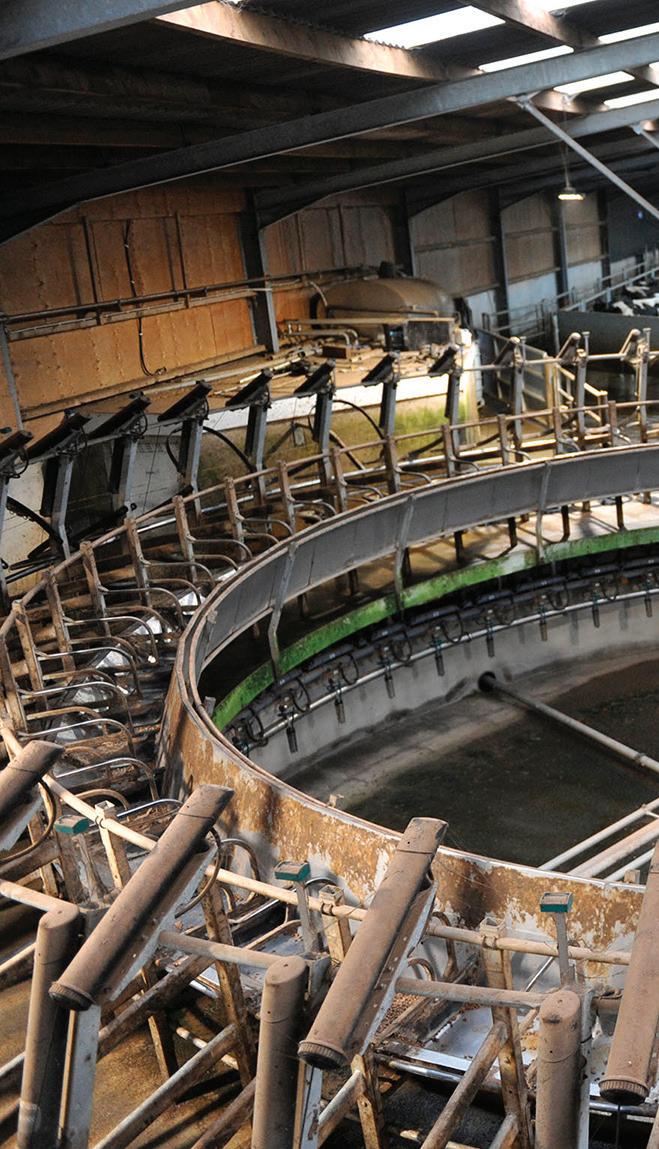
good experience of designing farm underpasses. Securing the necessary permissions and road closures was straightforward. e job of constructing it was given to a local contractor who had built underpasses on other farms.
e whole project cost around £76,000 at 2019 prices. e underpass — 3m wide and 2.4m high — was built over 10 days in May 2019.
“Building the underpass is one of the best things we have ever done, the cows are very relaxed going out to grass and we now only need one person to move them to and from grazing,’’ says Richard.

DECEMBER 2023 10 ON FARM
The new underpass has transformed the business. Richard Morris
The 54-point rotary has halved milking times at Bowett Farm, Pembroke.

“We can manage the farm a lot better because we can graze the blocks when they need grazing, not when people are
available to cross the road.’’ Cow flow has improved and waiting times on concrete halved.
“We are seeing less lameness and higher utilisation of grass as a result,’’ says Richard. Cows, which are turned out to grass from February until November, enter grass covers of 2,800kg/ha (1,134kg/acre) dry matter.
During the grazing period, covers are measured weekly and the results are recorded on AgriNet software, giving Richard a wealth of information from which he can earmark the poorest yielding fields for reseeding each year.
Disturbance
Soil disturbance is kept to a minimum and fields are sprayed off and direct drilled, allowing the land to come back into production much more promptly compared to cultivation with a plough. Cost is a factor too. Richard calculates that net of seed and glyphosate costs, direct drilling
Farm facts
r162 hectares (400 acres) owned and 243ha (600 acres) rented
rTwice-a-day milking
r4.5% butterfat and 3.6% protein
r8-10% empty rate
rCows graze for 180-200 days
r12-hour grazing break
rMilk sold to Leprino Foods on a solids contract
rThree full-time workers
works out £75/ha (£30/acre).
Early establishment is key – he aims to drill the seed at the end of July, or early August at the latest, applying dirty water immediately afterwards using a trailing shoe.
He favours Aber HSG3 long term grazing mixture with clover.
Liquid ammonium nitrogen

Eliminate farm paperwork & make better decions with the UKs No.1 Farm Management app!
Simple medicine records.
Easy calf registration & animal movements.
Full breeding cycle management.
Milk records & insights to help drive cow performance.
Easily run repor ts for farm assurance.
New Grass & Crops service for land & fer tiliser management.
Map your farm & much much more...
S can me to download the FREE app!
DECEMBER 2023 11
ON FARM herdwatch.com
ON FARM

fertiliser is injected into the soil.
“In a dry spell it keeps the grass growing for longer because the fertiliser is much more accessible to the plant and it does not need moisture in the same way as prilled,’’ says Richard.
In total, 200kg/ha (80kg/ acre) of nitrogen is applied annually and the remainder is slurry, applied using low-emissions spreading equipment.
Three cuts of silage are taken annually, the first in the last week of April. This year it
analysed at 11.8ME and 15% protein. As well as maize, 121ha (300 acres) of winter corn is grown for crimping, with 5-6kg/ head/day fed in the winter.
“The more protein we have got available in the diet from homegrown sources, the less we rely on buying it in,’’ says Richard.
Rape meal protein has replaced soya in the total mixed ration (TMR).
Concentrates are fed at a rate of 1tonne/cow/year.
A succession of dry summers

resulted in some buffer feeding, but only during periods when grass availability was under pressure.
All the harvesting and slurry work is outsourced to contractors.
Dirty water is applied after each grazing and before and after silage cuts, while solids are applied to the cropping land.
Fields are soil-tested every four years. Soil pH across the farm ranges from 6.2–6.6 and P and K 2.5–3.
Calving is in an 11-week block from September 1, with 70% in the first four weeks.
All sexed semen is used on 300 animals for the first three weeks of insemination, with a 53% in-calf rate achieved in the last breeding season.
Genetics
Charolais genetics are used on the rest of the herd and Aberdeen-Angus on the heifers.
Calves are reared for six to eight weeks on calf milk replacer fed twice a day with ad-lib straw and cake also offered.
Weaning is at 42-48 days, or at 70kg when calves have doubled their birthweight.
Calves are introduced to a TMR of homegrown feed from four months old and turned out to grass in early April.
“As soon as they hit the grass, heifers do not see concentrates again until they hit the parlour at two years old,” says Richard.
Richard and Claire have a five-year-old daughter, Ava, so one day there could be a fourth generation of the Morris family farming at Bowett Farm.
With that next generation in mind, Richard says farming as sustainably as possible is important, not just for business performance, but also for the environment.
“Farmers are great ambassadors for looking after the environment and wildlife,” he says.
Bowett has 16ha (40 acres) of woodland which has been fenced off to provide wildlife habitat, and the farm’s carbon footprint for milk is ahead of the benchmark set by its milk buyer, Leprino.
The business has also invested in a 50kW wind turbine, a biomass boiler and 70kW solar array to reduce electricity costs, making it almost entirely self-sufficient in energy use.
DECEMBER 2023 12
It takes one milker two-and-a-half hours to milk the herd.
Sexed semen is used on most of the herd, alongside Charolais and Aberdeen-Angus genetics.










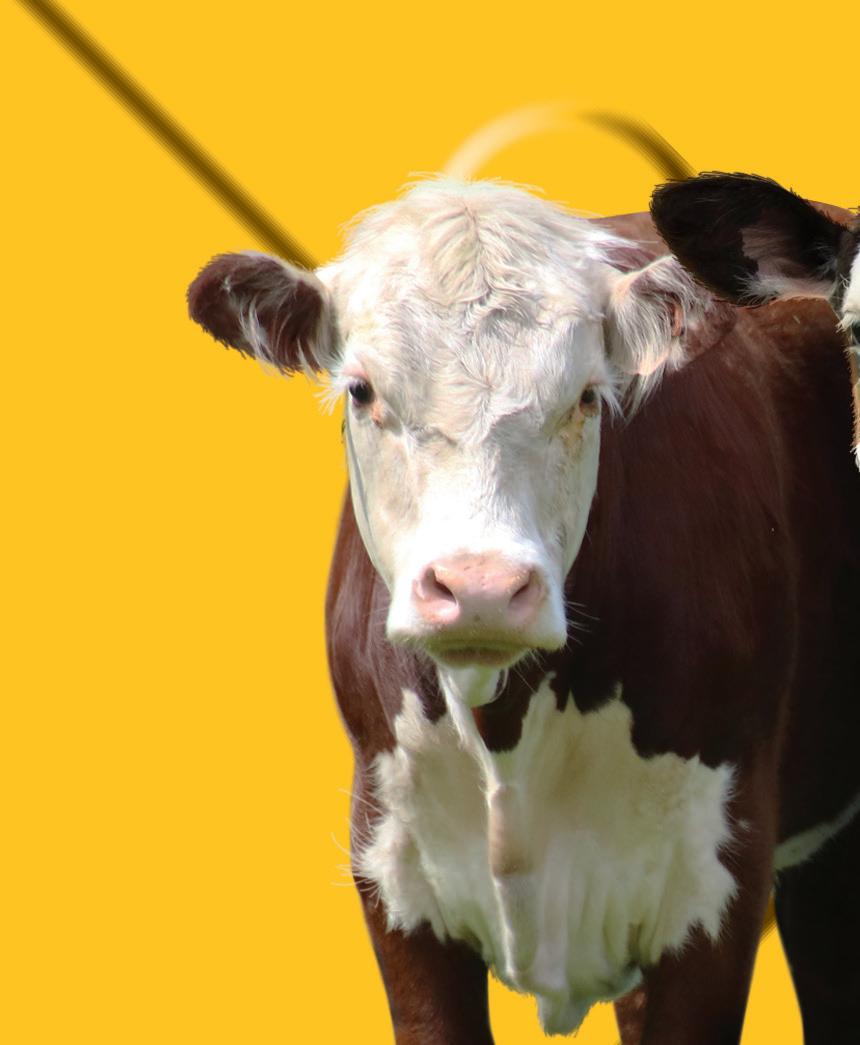


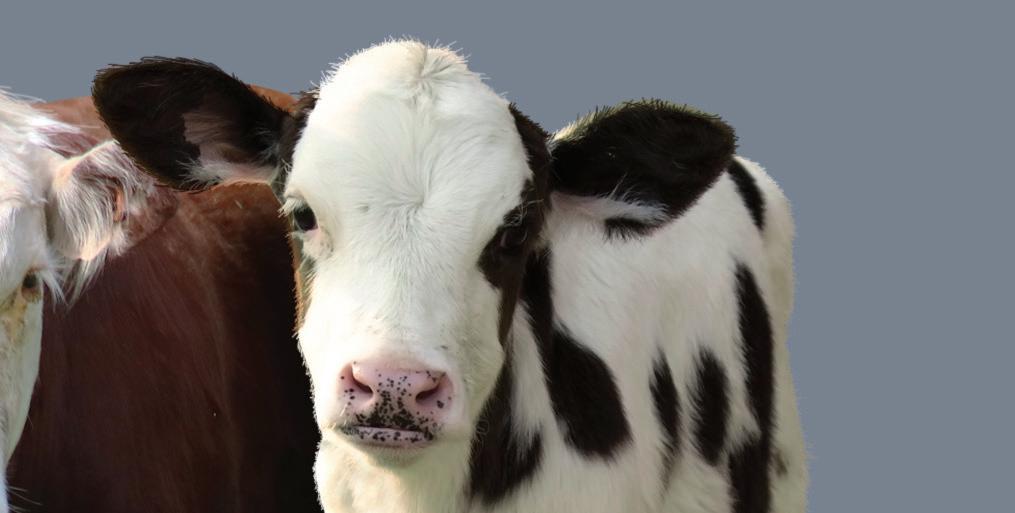


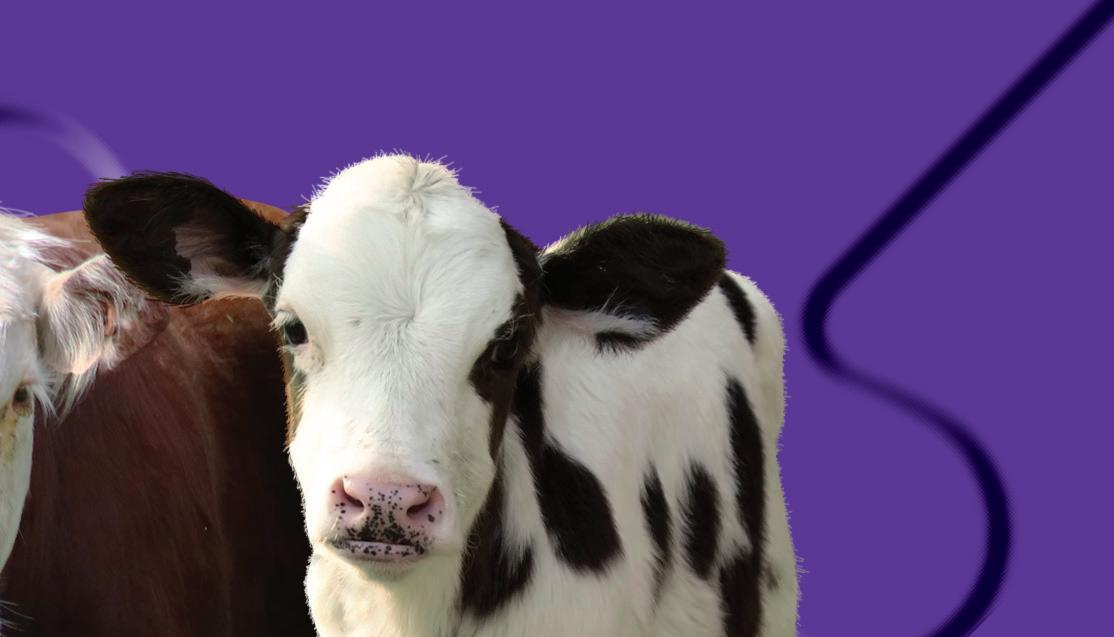






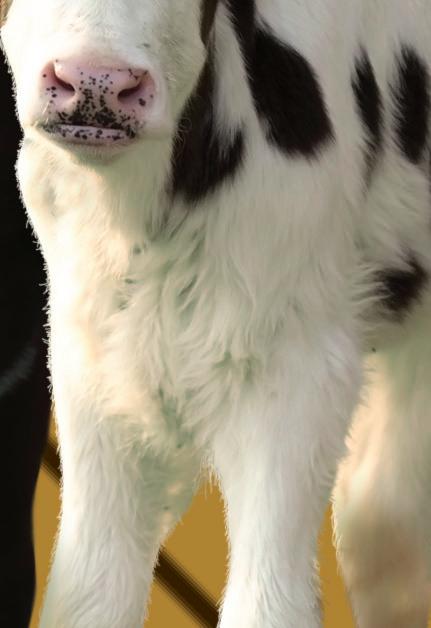















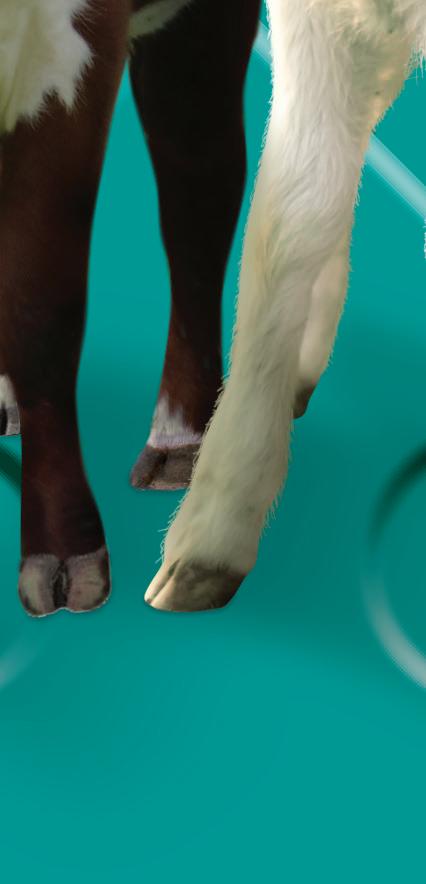







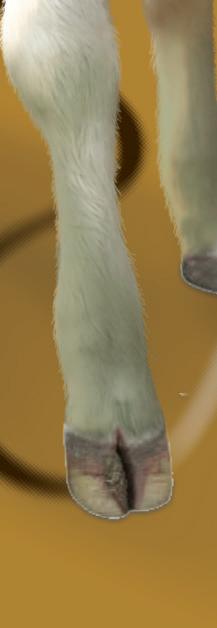












Contact us to nd out how we can help protect the long-term productivity of your herd or visit www.msd-animal-health-hub.co.uk Solving scour... one piece at a time* *Use as part of an integrated approach to calf disease prevention including colostrum management, hygiene and biosecurity. Reference: 1. APHA 2012-2019 Neonatal, Prewean, Postwean calf groups. https://www.gov.uk/government/statistics/veterinary-investigation-diagnosis-analysis-vida-report-2012 Bovilis® Rotavec® Corona contains inactivated rotavirus, coronavirus and E. coli strain CN7985, serotype O101:K99:F41. POM-VPS. Bovilis® Bovivac® S contains inactivated cells of Salmonella dublin, strain S342/70 and Salmonella typhimurium, strain S341/70. POM-V. Halocur® contains 0.5mg/ml halofuginone lactate in an aqueous excipient. POM-V Vecoxan® contains 2.5mg/ml diclazuril. POM-VPS. Further information is available from the respective SPC, datasheet or package leaflets. MSD Animal Health UK Limited. Registered office Walton Manor, Walton, Milton Keynes MK7 7AJ, UK. Registered in England & Wales no. 946942. Advice should be sought from the medicine prescriber. Use Medicines Responsibly. Copyright © 2022 Merck & Co., Inc., Rahway, NJ, USA and its affiliates. All rights reserved. UK-VCN-210800003 ONLY MSD Animal Health covers all the key calf scour pathogens in GB.1
DAIRYMatters ‘Britain is ripe for the next agricultural revolution’
Robert Kelly is senior vice-president for the Europe region of MSD Animal Health.
Ten billion. That is what we can expect the world population to reach by 2050, according to the United Nations. That is about 2bn more people than the number of people alive today.
It is also about 2bn more mouths to feed, which means the global agriculture sector must become much more productive in order to meet the expected 35% to 56% increase in global food demand over 2010 levels.
Yet the imperative to produce more food comes with the urgent need to protect our environment.
These are lofty goals. But they are attainable, especially with help from the many emerging agricultural technologies that are helping farmers produce more with less.
And British farmers are uniquely positioned to help lead the charge.
For a myriad of reasons, including food security,
 Robert Kelly
Robert Kelly
the challenge of reducing the environmental impact of farming and the need to ensure the welfare of animals, the blistering rate of innovation in the agricultural sector is fantastic news for British farmers.
Britain’s agricultural sector is of vital importance to the economy, worth £120bn and employing nearly four million people.
Exports of agricultural products are worth tens of billions of pounds each year. The future of British agriculture is at a critical point. As the globe’s population grows and people increasingly desire more meat in their diets, the industry must evolve.
Consider the state of livestock farming in Britain. As of late 2020, farmers were raising more than 9m cattle and calves, 4.8m pigs, and 21.8m sheep and lambs.
Chicken production that year reached an estimated 1.7m tonnes. Those are impressive numbers for a relatively small country.
Consumption
The Organisation for Economic Cooperation and Development estimates that global meat consumption will increase 14% by 2030.
British farmers will need to produce more meat to keep pace with that demand — and they’ll have to do so in the face of several headwinds.
For starters, small and large farms alike are struggling to keep up with labour shortages that have kept livestock from reaching consumers.
Disease also poses a threat. To avoid sickness in their animals, livestock producers will need to focus more on preventive health practices.
Vaccinations are critical to preventing the spread of disease in livestock. Already, the UK’s National Office for Animal Health is leading the way with its expert-led vaccination guidelines encouraging robust vaccine uptake in livestock. Such preventive health approaches bring sustainability advantages too.
14 DECEMBER 2023

“ The tools we need to make it happen are here. Now, it’s just a matter of getting them into farmers’ hands
Data suggest that UK vaccination programmes for infectious bovine rhinotracheitis (IBR) reduce carbon emissions by 277 kilotonnes of carbon dioxide, the equivalent to removing about 60,000 cars from the road each year.
And several new technological approaches aid these proven tools and help British farmers boost production of meat and dairy in the face of these challenges and contributing to a greener future.
Livestock monitoring technologies can help farmers keep tabs on the health of their herds and identify potential diseases before they have a chance to spread to other animals. Take technologies that improve conception rates in dairy ca le.
One such tool uses a predictive algorithm to collect health and behaviour data, providing farmers with timely information on an animal’s reproductive status.
Not only does this technology allow farmers to improve milk production, it reduces reliance on reproductive medicines.
at way, farmers can deliver more calves while adhering to the highest animal welfare standards. ese technologies cannot replace proven tools such as vaccines, which are the cornerstone

of preventive health in livestock farming, or routine veterinary care.
But they can give farmers a leg up as they race to meet consumers’ increasing demand for protein while building a more sustainable future for the farmers and the communities in which they live.
An added bonus is that many of the creators of these innovative agricultural products are based right here in Britain.
Leader
Additional Government investment in technologies such as these could further help establish British agriculture as a global leader in the sector and support the local economy.
With the latest advancements in agriculture technology, there’s reason to believe that the farms of the future will be more e cient, sustainable, and productive than ever imagined.
ose advances also make for healthier animals living in more humane conditions.
Britain is ripe for the next agricultural revolution. e tools we need to make it happen are here. Now, it’s just a ma er of ge ing them into farmers’ hands.

15 DECEMBER 2023
Robert Kelly says technology can help improve efficiency, boost environmental efforts and help establish British agriculture as a global leader in the sector.
Research carried out at the University of Liverpool has highlighted the importance of sole thickness in the prevention of sole lesions, says Prof George Oikonomou. Wendy Short reports.
Sole depth critical for lameness prevention
Foot angle is generally considered one of the most relevant aspects of foot trimming, along with heel depth, says Prof George Oikonomou, a cattle health and welfare expert. However, an indepth study of 2,400 cows has indicated that sole depth may be more critical for lameness prevention, as cows with thick soles showed a marked reduction in hoof lesions.
“The cows were studied in detail at calving and in early and late lactation, with all cases of lameness and foot lesions noted and ultrasound scanning used to determine sole thickness,” says Prof Oikonomou.
“Angle was not statistically significant in relation to the
incidence of sole lesions, and the same was the case for heel depth, but sole thickness was influential.”
The guidelines for sole thickness are based on three categories: thin (-5mm), moderate (5 to 7mm) and thick (7mm+). The results of the research team’s project found sole lesions during early lactation in 52% of the cattle which fell into the thin sole category at calving, with a figure of 36% for cows with moderate sole depth. Only 26% of cows classified as having thick soles were diagnosed with lesions.
“It was clear that cows with the thickest soles gained the greatest protection from sole lesions. This raises questions about the general guidelines on foot trimming, which focus largely


on target measurements for foot angle and heel depth for lameness prevention,” says Prof Oikonomou.
“The current recommendation is to trim soles to the moderate category of sole thickness, but it seems that thicker soles should be the aim when feet are being trimmed.”
Cattle foot trimmers may feel under pressure to deliver an aesthetically pleasing result when they trim a cow’s feet, he adds.
He says: “If a claw is excessively

overgrown and the foot angle is too low, my advice is that cattle will benefit from foot trimming and sole thickness reduction, although it should be carried out with caution.
“However, in many cases, routine trimming could only involve modelling of the typical sole ulcer site and nothing else. More work is needed on the subject, but there is every indication that the original sole thickness could be left untouched in the toe triangle area.”
It was clear that cows with the thickest soles gained the greatest protection from sole lesions
PROF GEORGE OIKONOMOU
DECEMBER 2023 16 VET’S VIEW
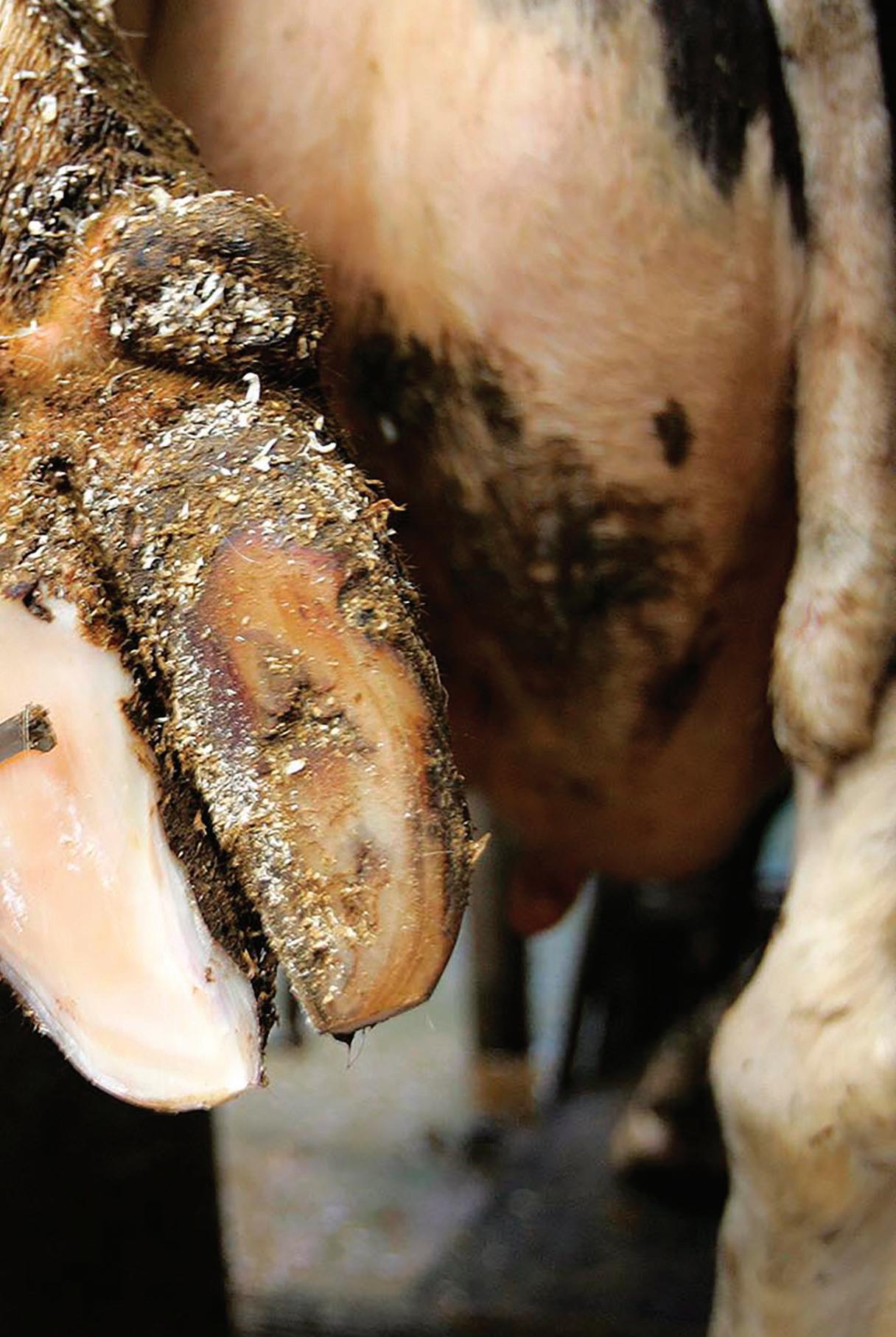

Research suggests thicker soles should be the aim when feet are being trimmed.
The use of artificial intelligence to monitor herd lameness
JFurther research by Prof Oikonomou and his team was carried out in conjunction with technological development company CattleEye on a video surveillance system for automatic lameness detection, using a combination of cameras placed in cattle housing and linked to artificial intelligence software.
The results from the automated system were compared with visual evaluations by highly trained vets.
Prof Oikonomou says: “CattleEye has been installed on a number of UK farms and more than 35,000 mobility scores have been analysed. At present, in the identification of lame cows, it has equalled the performance of veterinarians
MONITORING TO FINE-TUNE THE MANAGEMENT OF HOUSED HERDS SPONSORED

The SenseHub herd monitoring system from MSD Animal Health can be tailored to meet the needs of every size and type of dairy farm, with the system’s Premium application plan enabling herd managers to closely monitor their cattle on a group-by-group basis.

Closely monitoring cattle on a group-by-group basis is useful when looking after housed animals as it enables the herd manager to assess how well each group is being managed in terms of fertility and reproduction, nutrition and day-to-day welfare.
with accreditation by the Register of Mobility Scorers. The system is most suited to herds which are milked in the parlour, as the best position for the camera is upon exit.
“The software will generate a list of cows whose mobility score has risen above a set level. They can be diverted into a separate area for further examination, which may lead to the necessity for foot trimming.
“On some farms, it may be more appropriate to leave cow mobility scoring to the human labour force, but CattleEye could be a more efficient option on large herds, for example.
“It may also help to detect early lameness cases; prompt treatment can help to minimise long-term damage and potentially reduce culling rates.”
By analysing the activity, rumination and behavioural patterns of cows assigned to the same management group and comparing this data to anticipated trends, SenseHub enables herd managers to assess if, how and when changes in housing conditions, feeding regime or day-to-day management have impacted the group’s productivity, feed intake and/or fertility.
Armed with a better understanding of how each group of animals (high and low yielders, dry cows and freshly calved cows) is faring, herd managers can then
make informed management decisions to fine-tune the group’s consistency of performance.
The data generated by SenseHub can also be shared quickly and easily with third parties so the farm’s vet and nutritionist can have a better understanding of how the group’s daily management regime is impacting on feed intake, rumination and the oestrus cycle.
This all adds up to make the management of multiple groups of housed animals easier, quicker and less stressful. It also takes the guesswork out of assessing what does and does not work for a specific group so every aspect of the herd’s management can be amended, adjusted and improved to reduce the impact of planned changes and unforeseen events on the herd’s productivity and fertility.
To find out how more about how SenseHub could help you to manage your herd please call the SenseHub team on 01207 529 000.
Alternatively, to send us an email, please contact us at allflexuk@msd.com
SenseHub is not intended to diagnose, treat, cure or prevent any disease in animals. For the diagnosis, treatment, cure or prevention of disease in animals, you should consult your veterinarian. The accuracy of the data collected and presented through this product is not intended to match that of medical devices or scientific measurement devices.
For more information, visit www.msd-animalhealth-hub.co.uk/farmers/livestock-monitoring
DECEMBER 2023 17
CONTENT
The growing gap between dairy farmers and society was one of the topics discussed at the recent LifeStart Calf Symposium organised by Trouw Nutrition and held at Nottingham University. Jonathan Wheeler reports.
Care for calves and keep consumers on side D
airy farmers must engage with their customers and be prepared to change their practices if they are to retain their ‘social license’ to farm, said Prof Nina Von Keyserlingk, director of the animal welfare
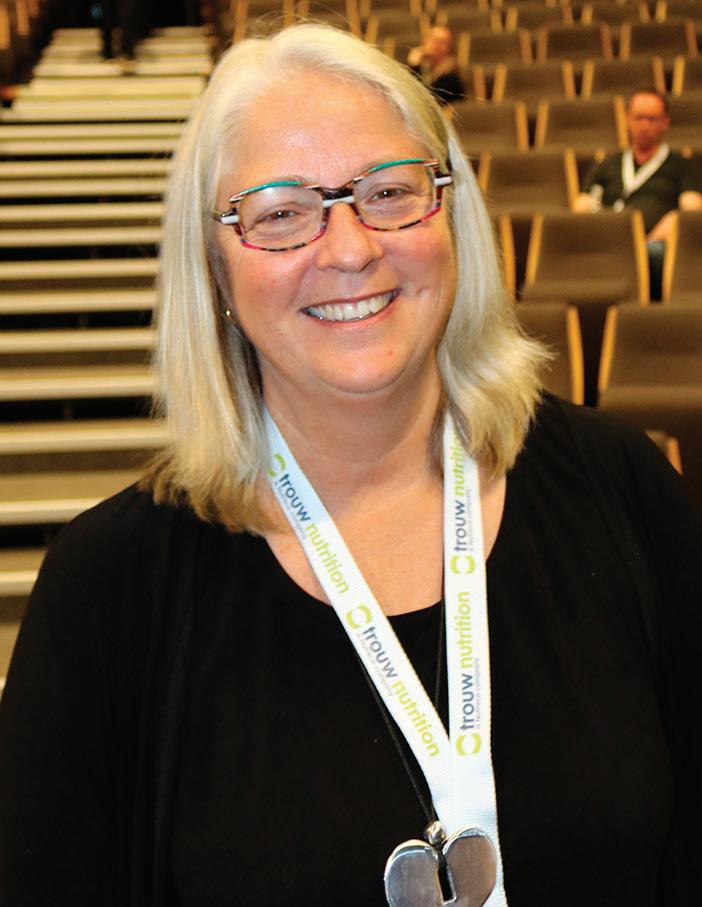 Prof Nina Von Keyserlingk
Prof Nina Von Keyserlingk
programme at the University of British Colombia.
Prof Von Keyserlingk said there could be huge benefits from bridging the gap between farmers and their customers, but farmers had to be honest and be prepared to explain awkward issues.
She said that could include issues like cow/calf separation – a topic the industry has generally been reluctant to address in the past.
“The public believe the animal has a reasonably good life, but society is asking questions far more frequently, and those questions are getting harder and harder to answer,” she said.
This, she said, was putting the industry’s ‘social license’ to operate under pressure.
And she added that failing to listen to which practices were contentious and not amending them when required, could result in the industry being subjected to legislation formulated
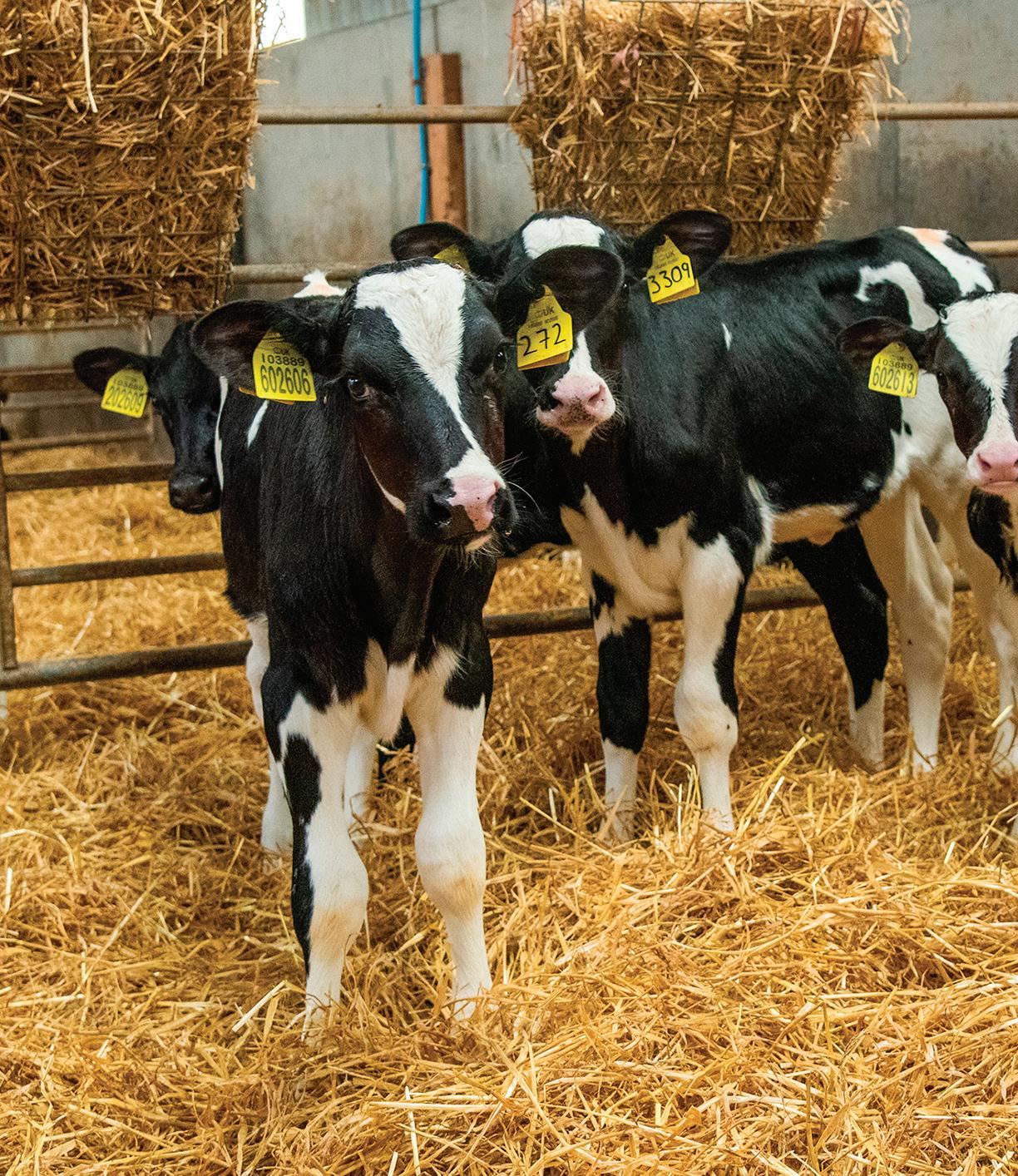
by people who lacked a proper understanding of the issues involved.
She said: “Animal rights campaigners are very good at taking the things we do not want to talk about and putting them on the front of newspapers. We need to think how we react.”
Trusted
She said she believed most of the public still trusted farmers to ensure their animals were healthy and productive, but they would also start to feel uncomfortable when they see or hear about things that do not resonate with their values.
To retain a social licence to farm, individual farmers should constantly re-examine their practices, even if they have used them for years, and be prepared to talk about them to the public and be prepared to change.
“Telling them they do not understand the industry will not work. The first thing farmers should do is listen to the
The average person does not expect us to change overnight, but they do expect us to get better every day
PROF NINA VON KEYSERLINGK
customer and try to understand their values.
“The public want to know you care about your animals, but also they want assurance that you are constantly trying to improve your standard of care.
“The average person does not expect us to change completely over-night, but they do expect us to get better every day.”
DECEMBER 2023 18 YOUNGSTOCK

Farmers need to re-examine practices such as cow and calf separation and be prepared to talk about them to the public said Prof Nina Von Keyserlingk.

Importance of cutting calf mortality
JDairy farmers have a great opportunity to improve the sector’s image if they can cut calf mortality said Dr David Renaud, of the University of Guelph, pointing out that data suggests some 7% of calves die in the first 48 hours of life and a further 7% before weaning.
“That’s 14% before 60 days of age, and reducing that toll represents a major opportunity to ensure we continue to have social buy-in to the industry,” he said.
Performance
He identified four key areas of management that can improve performance; colostrum, calving, environment and nutrition. He said colostrum was essential to successfully transfer positive immunity to the calf and calving should be as easy as possible.

“Difficult calvings are just setting you up for failure. The calf is much more likely to die and have to be treated for disease and face a multiplicity of risks before weaning.”
He said the calving cow should


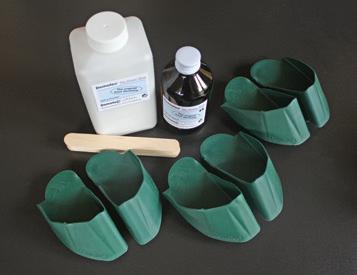



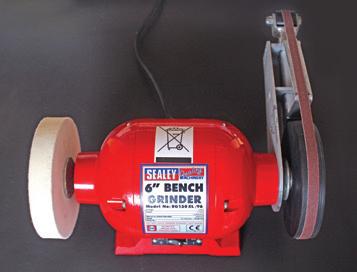



be monitored at least every 30 minutes and intervention made if she failed to progress.
Correct feeding during pregnancy was also essential to ensure the cow was not over condition.
That feeding needed to be especially accurate with heifers, because it had to achieve a delicate balance between ensuring they were well enough grown to calve successfully while not getting them over condition.
The cow and calf environment was the next crucial factor, and should be clean, dry and well ventilated.
And he said correct nutrition was the final element. “High quality feed is essential, not only for all growth aspects but to support health a high line of nutrition is really important.”



YOUNGSTOCK
Dr David Renaud
DECEMBER 2023 19 Prefer to speak to a human? Give us a call on 01963 824448 "Thank you to Steve and his team for an excellent and very quick service and very competitive prices every time, thanks!” JOHNNY MILLER, LANCASHIRE LAMENESS WORKSHOPS October 22 £125 per person Steve Paul Limited The UK's leading cattle foot care company TRIMMING • TRAINING • SUPPLIES
next working day UK mainland & Ireland delivery ORDER BY 3PM when you spend £100 online excluding VAT Make your life easier with our Electric Farmer Crush Do ring us if you’d like more information! From farmer cattle crushes to wooden blocks, we have everything you need to keep your cows' feet healthy! Cowsfeet advert Farmers Guardian 200x130mm March 2020.indd 1 14/02/2020 09:40
Free
Challenging time for f
Plans are in place to take cow numbers up to 400, which will allow Israeli dairy farmer Yoel Strauss to work full-time on his family’s dairy farm in the future. Chris McCullough reports.
When Yoel
Strauss completed his military service in Israel back in 2007, he could not wait to return home and become more involved in dairy farming.
Yoel is the third generation to work on the family farm at the moshav Sde Ilan, following in the footsteps of his dad, Ariye, and late grandfather, Yitzhak Strauss, known as Itzu. A er surviving the Holocaust, Itzu relocated from his native Hungary to Israel, and started the farm in 1952. He was allocated three milking cows, chickens and some land by the Jewish agency.
Today, the farm runs a herd of 200 Holstein cows plus 150 replacement heifers. Yoel works part-time on the farm alongside his dad and brother Yackob, but hopes to become full-time someday and keep the family tradition alive.
For the time being, Yoel
Farm facts
rThe farm is five hectares (12.4 acres), including 1ha (2.5 acres) of farm shades and buildings
rBull calves are sold at 60 days old to a nearby farmer for rearing
rCows are milked in a 12:12 herringbone parlour with Afimilk equipment, which was updated in 2002 and stands in a shed built in the early 1980s
Editor’s note
JThe team at Dairy
Farmer recognise the unimaginable challenges that the people of Israel are currently facing, and the Israeli people and farmers are in our thoughts.
works as a ruminant nutritionist at Ambar feed mill, and also works occasionally with O er Langer, the owner of the Israeli dairy school.
Yoel says: “My dad worked with grandad from childhood, combining the farm’s work with managing a regional feed centre, producing total mixed ration [TMR] for cows and sheep.
“I have worked at the farm all of my life, and got more involved a er nishing army service in 2007.
“Currently, my dad manages the farm full-time, with my younger brother and I assisting him. We also hire two employees from ailand.”
Israel operates a quota system for its dairy industry, and Yoel’s farm has an allocation of 2.16 million litres per year.
Yoel says: “We try to produce most of our milk during the summer months from May to October, because if we overproduce in the winter season, we are ned.
“Our cows are milked three times per day yielding 12,000kg per cow, corrected to 305 days, at 3.8% bu erfat and 3.35% protein.”
In terms of breeding, Yoel uses Holstein semen on the
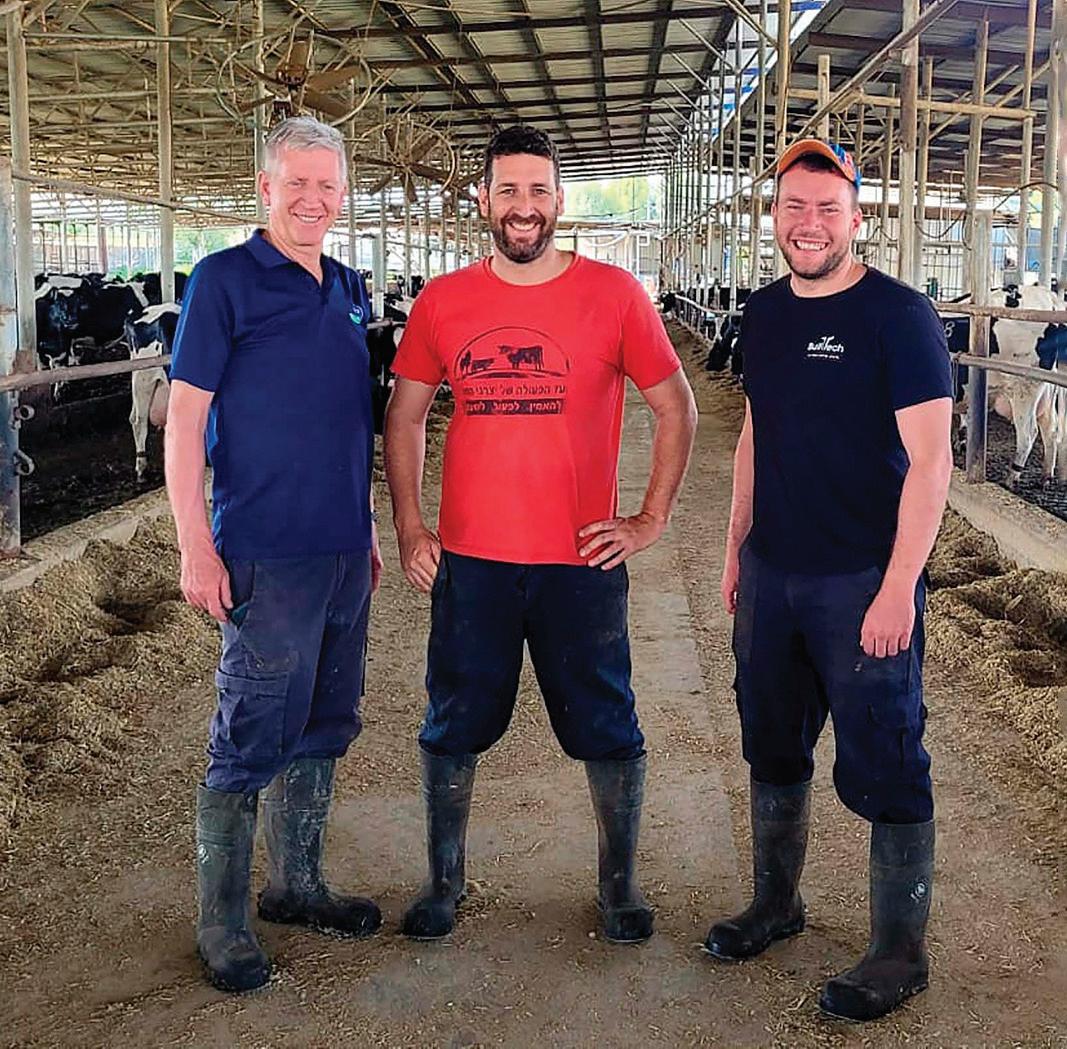
majority of the herd, with about 10% of semen used imported from the USA.
“For the low genetic cows, about 5% of the herd, we use beef semen, usually Belgian Blue,” says Yoel.
“For some of the heifers, we are using sexed semen, but on a relatively small scale.”
e milking herd is split into two groups, with the rst lactation heifers kept in one group and the rest of the herd in the other. All cows are kept indoors all year round and fed a TMR.
e milk is sold to Tara, the second biggest milk factory in Israel. e most recent milk price was 2.4 Israeli New Shekel (52ppl).
Feed
Yoel says: “All our feed comes from a local feed mill owned by one of the village dairy farmers. It comes pre-mixed and we use four di erent TMRs; for the milking cows, growing heifers, young heifers aged four to nine months, and dry cows.
“Calves receive an 18% protein pellet from Ambar feed mill. For the cows and heifers close to calving, we add 3kg of 18% pellet on top of their TMR.”
Yoel likes to keep in touch with the latest technology, and last year he purchased an Urban pasteuriser wagon to feed


DECEMBER 2023 20 WORLD DAIRYING ISRAEL
Yoel Strauss (centre) with dad Ariye (left) and brother Yackob (right).
Cows are kept indoors all year round and are fed a TMR.
amily farm
We try to produce most of our milk during the summer months from May to October
YOEL STRAUSS
milk to the young calves.
As Israel has periods of relatively hot weather, most of the farm’s reinvestment goes into cooling systems and fans to prevent heat stress and other associated problems.
Yoel is hopeful that dairy farming in Israel has a good future, but there are some challenges to overcome if his family farm is to succeed.
Future plans
He says: “Our future plans include expanding the farm as we have room for 400 milking cows
and 250 replacement heifers.
“Hopefully, the milk industry will stay pro table in the future, as we would like to increase production by 100,000 litres each year. By expanding the herd, we hope to build the business to a stage where my brother and I can work full-time at home.
Challenges
“Dairy farmers in Israel do have some challenges ahead. Our two biggest problems over the last decade have been the import of dairy products, including raw milk, from east European countries, and also the issue of manure handling.
“Regulations are becoming harder and harder every year to comply with, and we need to gure out what to do with all the slurry.
“For now, we store all our cow manure in big bunks, and spread it on the elds at springtime.
“As we only have a few hectares of our own land, we also deliver manure to a few other farmers close by who grow crops and vegetables.”

Calf Health
Dairy farmers are being advised against ignoring the important role trace minerals have in achieving the best possible outcome from their cattle vaccination programmes.

Trace minerals are integral to immune function, whether that be enabling an effective response to natural disease challenges or to vaccination.
Deficiency in trace minerals can limit the immune system’s ability to respond to vaccination.
Stressors, such as vaccination itself or transport and, for calves, weaning, can exacerbate imbalances, which can also lead to a reduced response.
A 2012 study¹ demonstrated how vaccination altered the trace mineral status of beef steers, when 14 days after vaccination they experienced decreased serum trace mineral concentrations.
Even when trace mineral status is adequate, mounting an immune response to a vaccine can deplete stores.
Therefore, when farmers are investing in vaccination programmes to protect their cattle from disease, it makes sound economic sense to ensure those animals are not deficient in the trace minerals they need to maximise the response.
Trace mineral supplementation has
been identified as having a positive effect on immune function, with several studies highlighting the benefits of strategic injectable trace mineral supplementation in conjunction with vaccination.
The findings of one such study in 2014² showed that injectable trace minerals may be beneficial to humoral immune response in cattle.
For farmers considering using an injectable, Multimin™ contains zinc, copper, manganese and selenium and is designed to correct clinical or subclinical deficiencies of these four trace minerals, deficiencies which can arise during critical phases of the production life cycle.
It provides a fast, effective and reliable way to boost essential trace minerals ahead of times of high demand, such as breeding and calving.
Multimin™ acts rapidly, reaching peak levels in the blood after only eight to 10 hours and the liver after 24 hours.
As Multimin™ is a prescription-only medicine, it is recommended farmers talk to their vet about how and when to introduce it.
For more information, scan the QR code or go to farmersguardian.com/virbac-dairy-bitesize


DECEMBER 2023 21 ISRAEL WORLD DAIRYING
A FOCUSED LOOK AT VACCINATION PROTOCOLS SPONSORED CONTENT MultiminTM solution for injection for cattle contains Zinc (60mg), Copper (15mg), Manganese (10mg) and Selenium (5mg). Further information is available from the SPC or by contacting Virbac Ltd. Unit 16 Woolpit Business Park, Windmill Avenue, Woolpit, Bury St. Edmunds, Suffolk IP30 9UP. Tel: +44 (0) 1359 243243 Email enquiries@virbac.co.uk. POM-V - Advice on the use of this medicine or alternatives must be sought from your veterinary surgeon. Use medicines responsibly www.noah.co.uk/responsibly. References: 1. Arthington, J.D. and Havenga, L.J. (2012). Effect of injectable trace minerals on the humoral immune response to multivalent vaccine administration in beef calves. Journal of Animal Science. 90(6):1966-1971. 2. Arthington, J.D., Moriel, P., Martins, P.G.M.A., Lamb, G.C. and Havenga, L.J. (2014). Effects of trace mineral injections on measures of performance and trace mineral status of pre- and post-weaned beef calves. Journal of Animal Science. 92:6:2630-2640.
Focusing on naturally occurring sulphur sources could have a major role to play in optimising nitrogen utilisation in grassland and deliver significant productivity, carbon and environmental benefits in line with the new Sustainable Farming Incentive. Dairy Farmer reports.
Grassland nutrition for a sustainable future



However you look at it, the latest Sustainable Farming Incentive (SFI) challenges dairy farmers to be er manage their use of nitrogen, look more at nitrogen- xing leguminous species in leys and use organic sources more e ectively, says Allison Arden of nutrient planning specialists Navigate Eco Solutions.
Ms Arden says: “It is all about optimising N applications from all sources, encouraging growers to be er target nutrient inputs to match grass demand and ensuring farmers get as much production out of every kg supplied as possible.
“It is also promoting a wider awareness of best practice for nutrient use in grassland while incentivising use of N- xing legumes in leys, testing of FYM and slurry before application and working from a comprehensive nutrient plan.
“What it also covers is making sure as much of the available N in the soil as possible nds its way into

plants thereby reducing the risk of excesses in the soil becoming vulnerable to leaching or ammonia loss to the air.”
Improving nitrogen use eciency (NUE) is one of the biggest challenges facing dairy producers currently. It has signi cant e ects on the bo om line of production as well as the marketability of milk as buyers look to reduce the carbon footprint of their products, she says.
“We have to look at the most
Numerous trials have shown 20% lifts in forage yields when appropriate levels of sulphur are used ALLISON ARDEN
appropriate ways of increasing NUE, and while this is not always easy in livestock systems, one of the key factors o en overlooked by dairy farmers is the role of sulphur in the NUE equation.
Sulphur
“Levels of atmospheric sulphur have been falling rapidly since the industrial clean-up some years ago, yet it plays an essential role in the ability of many crops, grass included, to
recover and utilise N e ciently,” says Ms Arden.
“Numerous trials have consistently shown 20% li s in forage yields when appropriate levels of sulphur are used to drive NUE, with a corresponding increase in grass quality too.
“Sulphur is also essential in the production of speci c amino acids and, if absent, plants cannot use N as e ectively and manufacture all the necessary protein e ciently.
“At a time when crude proteins in forage have been falling and the cost of bought-in protein supplements have been rising, this is something few milk producers can a ord to ignore.
“It is also true that N- xing plants, such as clover and other legumes, are disadvantaged if sulphur supply is reduced.
“It is a necessary element for N xation and, if in short supply, de ciency symptoms can quickly
Continues over the page...
DECEMBER 2023 22 BREEDING
Improving nitrogen use efficiency (NUE) is one of the biggest challenges facing dairy producers.
Dry Silage
KW liquids and moist feed can encourage intakes and reduce sorting.
Low Protein
KW have a wide variety of dry, moist and liquid protein feeds to increase ration protein content.
Wet Silage
These can be acidic so neutralise fermentation acids with KW rumen buffers and KW Soda Wheat.
All of our feed solutions and our tailor-made blends can support you in getting the most out of your forage.
Call today on 01977 686262 or contact your sales rep for information.
High Protein
Complement the abundance of rumen degradable protein with KW NovaPro and SoyPass.
more
kwfeeds.co.uk
Learn
at
® Variable forage quality? We o er all the products required to maximise herd performance from forage

BREEDING
develop as the grasses starve the legumes of any availability.”
Sco Garne , head of agronomy for crop nutrition specialist ICL, says environmentally friendly sources of sulphur will have an increasingly important role to play under the new SFI.
“NUM2 pays £102 per hectare for improving grassland by growing legumes from spring until early autumn, while growers will receive £151/ha under LIG1 and LIG2 to include owering grasses and wild owers in grass leys during the summer months,” he says.
Nitrogen focus
“All such schemes require that nutrients are managed e ectively, with a particular focus on optimising the use of N, so one of the most e ective ways to achieve this is to use sulphur to improve the NUE of all the N resources you have available.
“ ese could be from applied N, or N xed by legumes or that contained within FYM and slurries.”

One of the issues with ge ing sulphur into grassland is that it usually comes with N a ached, as is the case with the popular ammonium sulphate (AS) fertilisers, Mr Garne points out.
He says: “Having your sulphur locked in with large quantities of N might not be what you want when you are trying to manage your use of N in line with SFI.
“Decoupling N from sulphur could be a good start in being able to make more use of this vital element.



“ ere are, therefore, some compelling reasons why the naturally occurring mineral polysulphate, mined from under the North Sea, could be a be er source of sulphur for grassland than the traditional AS-based fertilisers in the future.
“For a start, it contains no N at all, with a composition of 48% SO3, 14% K2O, 17% CaO and 6% MgO.
“ is high concentration of sulphur makes it ideal for

The naturally occurring mineral polysulphate is mined from under the North Sea.


maximising the N produced from the growing use of legumes in grass mixes encouraged by SFI and reducing the overall dependency on inorganic fertilisers.
“Furthermore, Rothamsted Research has estimated the separation of N and sulphur could decrease ammonia emissions from sulphur fertiliser applications by 90%.
“ is is the result of growers being able to choose low-emission N fertilisers to apply alongside the polyhalite mineral, rather than relying solely on traditional combined N sulphur products.

Polysulphate [...] could be a better source of sulphur for grassland than [...] AS-based fertilisers




SCOTT GARNETT


“Another key advantage is its prolonged release characteristics that deliver the sulphur and other nutrients over a period of eight to 10 weeks, so these are constantly available to drive NUE throughout the growing season.”
It also means N and other key nutrients are utilised more fully so they are not le in the soil for long periods where they are vulnerable to leaching, he explains.
“ is is also in contrast to stan-
dard fertiliser practice, where large amounts of available sulphur are usually applied to crops when they are not really in a position to utilise them fully.
“Extensive trials have, in fact, shown this sustained nutrient supply and ability to improve NUE can deliver an increase in grass yields of 29%, together with an increase in dry ma er of over 10%.
Protein
“ e additional sulphur provided also signi cantly improved the protein content of the grass. All in all these improvements lead to denser, heavier, more nutrient-rich forage which, combined with the increased palatability and digestibility from a li in sugars of over 9%, produces healthier, more productive cows for the same, or potentially less, cost.”
“As a natural mineral requiring only minimal processing, polysulphate also has the lowest carbon footprint of any fertiliser on the market and is approved for use in organic grassland systems too,” says Mr Garne .

Environmentally friendly sources of sulphur will have an increasingly important role to play under the new SFI, says Scott Garnett, head of agronomy for ICL.

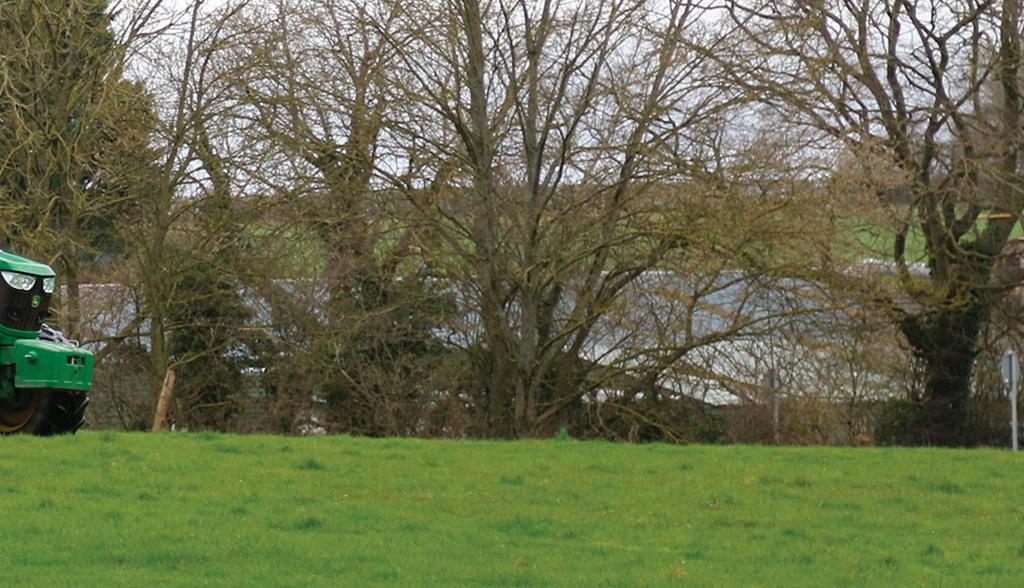
DECEMBER 2023 24









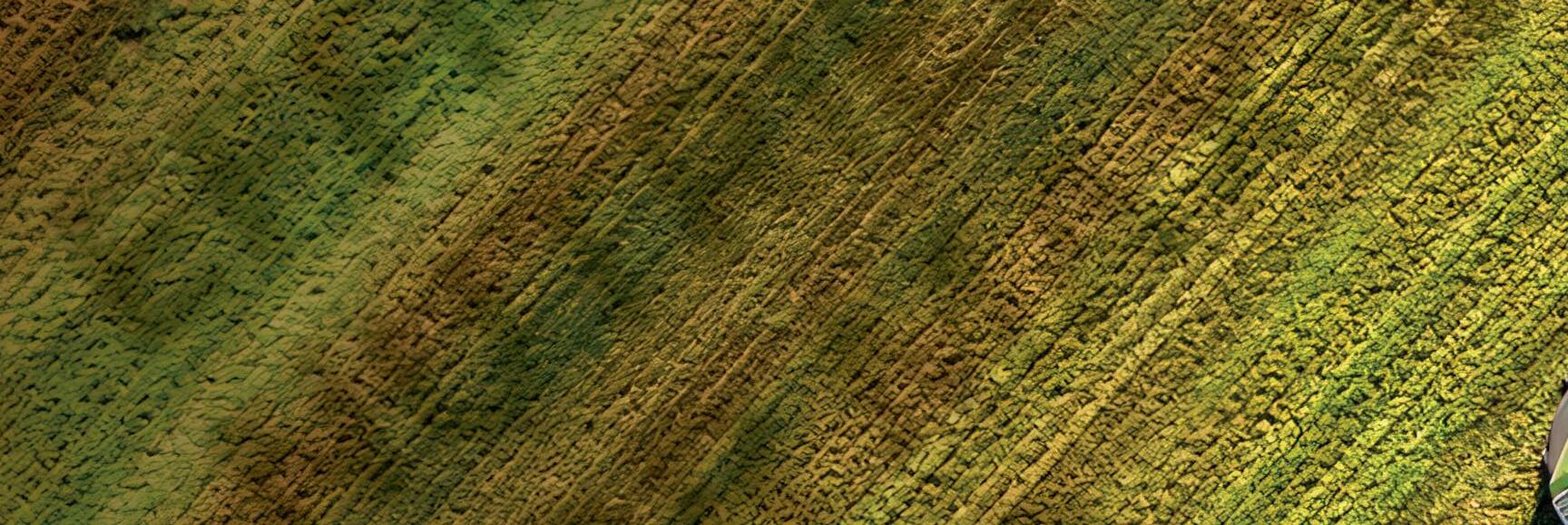
















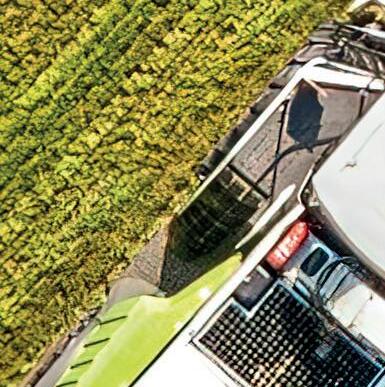


















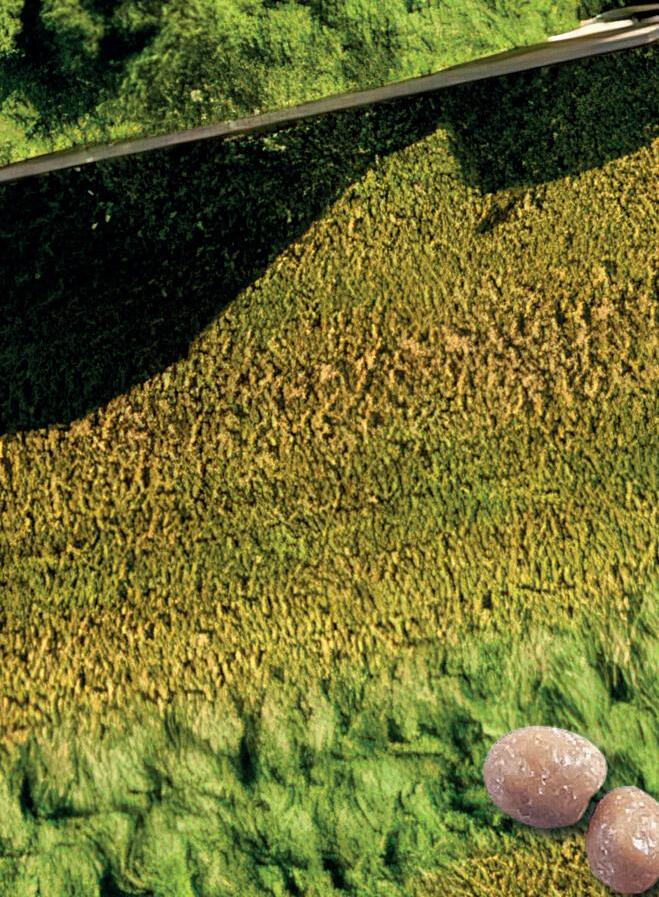








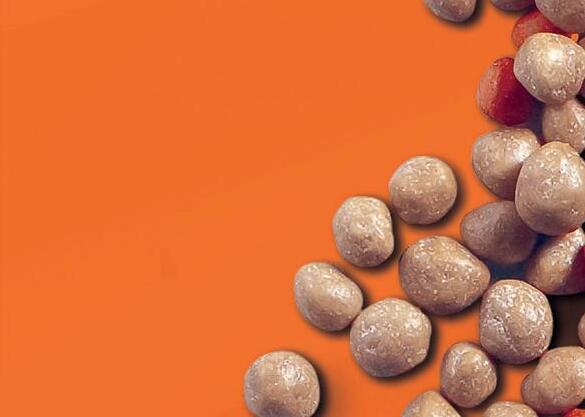

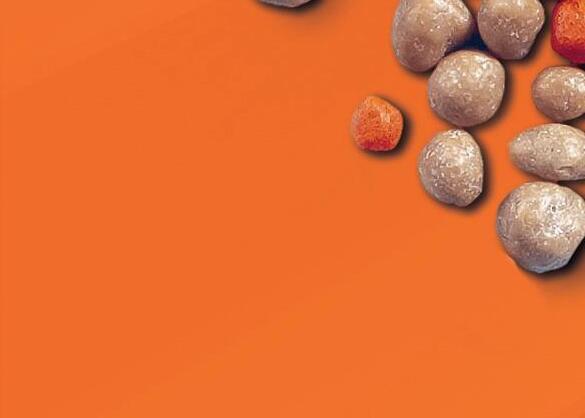









YOUR 2023 WINNERS ANNOUNCED

The British Farming Awards has revealed this year’s winners at the annual event, held in October at the Vox, Birmingham.
The farming industry came together in full force last Thursday (October 19) for the British Farming Awards, celebrating the in-
spiring achievements of individuals and partnerships. Sponsored by Morrisons, the event was attended by more than 750 farmers and industry professionals from across the UK.
AGRI-TECH INNOVATOR OF THE YEAR
SPONSORED BY LOW CARBON AGRICULTURE
James Duke, ADF Milking, Sussex
XA new technology based on ‘intelligent venting’, developed by ADF Milking, is improving dairy cow teat health and speeding up milking times on UK farms.
High mouthpiece chamber vacuum levels, caused by inconsistency in the size of cow teats, causes external and internal teat swelling, restricting the capacity of the teat canal, slowing down milk flow and preventing full milk-out.
The solution is called InVent, which detects when the vacuum level rises above a threshold in kilopascals.
When that point is crossed, a valve in the liner mouthpiece chamber opens, injecting clean, food-grade air into the mouthpiece and reducing vacuum,


resulting in each liner being the perfect fit on every teat during milking. Controlling vacuum levels on each teat individually results in calmer cows, less teat damage, higher yields and faster milk letdown, says founder James Duke.
XOn winning: “It is wonderful to win the award, but we could not have done it without a dedicated team at ADF.”
GRASSLAND FARMER OF THE YEAR
SPONSORED BY GERMINAL
Chris and Bella Mossman, Mossman Farming, Ceredigion
XTough times pushed Chris Mossman to transform his farming system, starting by improving soil health and diversifying his grassland.
The first 11 hectares (27 acres) of multi-species swards were sown in 2018 and, since then, all reseeds have been diverse swards with both cutting and grazing mixtures used. There is also a nitrogen reduction plan in place.
Having traditionally used 300kg/ha (121kg/acre) by 2022, this had reduced to 126kg/ha (51kg/ acre) with the eventual target being 50kg/ha (20kg/acre), with none used on the multispecies swards and the aim of producing 12 tonnes of dry matter (DM) per ha (4.8t DM/acre)


in the 2023 season. Chris has been joined in the business by his youngest daughter Bella and, with the changes already implemented, her ideas for diversification and beginning to invest in renewables, the family are confident they will be farming their improved land for generations to come.
XOn winning: “Entering the awards has made us think about the wider picture.”
The event celebrated pioneering farmers across all sectors who were leading in areas of technology, science, food production and sustainability.
Alongside farming’s core sectors – in-
cluding dairy, beef, sheep and arable –there was also recognition for students, family farms and new entrants, and the huge number of diversifications which are now so crucial to many businesses.
DAIRY FARMER OF THE YEAR
SPONSORED BY KW FEEDS
Patrick Morris-Eyton, Morris-Eyton and Son, Cumbria
XAnimal health and welfare, efficiency and sustainability are a key focus for Patrick Morris-Eyton.
Keen to create an optimum environment for cows to fulfil their potential, he invested into a new, 54-point rotary parlour, while increasing numbers from 240 to 420 followers.
A move to three times-a-day milking has increased milk yields with average annual production per cow of 11,800 litres at 4.4% butterfat and 3.4% protein.
Alongside this, there have been significant improvements in pregnancy rates, which have increased from 20% to 31%, and mastitis cases have reduced from 30 per 100 to eight.


As an Arla supplier, Patrick has been involved with its Climate Check project, improving efficiency and productivity on-farm, utilising resources and reducing waste across the business.
XOn winning: “We try to do the best we can on our farm and it is absolutely amazing for our team to be recognised. The agricultural industry needs to keep moving forwards.”
NEW ENTRANT: AGAINST THE ODDS
SPONSORED BY MASSEY FERGUSON
Alex Crawley, Grazing Management, Gloucestershire
XAlex is a war veteran who proudly served with the Armed Forces in Afghanistan. Following his diagnosis with post-traumatic stress disorder (PTSD) in 2017, he took a voluntary placement working with dairy cattle, which he said helped ‘soothe’ his PTSD.
When Alex won a Clyde-Higgs scholarship via the University of Warwickshire, it was a dream come true. His studies culminated in working numerous jobs, before settling on a large-scale beef and sheep farm upon graduation. Alex managed to secure 2.4 hectares (six acres) of rough pasture and launched Grazing Management in 2020, with one of his main focuses being contract conservation grazing
To watch all of the interviews and for more information on the evening and finalists, go to

to restore wildflower meadows, peatlands and heathlands.
XOn winning: “Whether you work as a team or on your own, we get on with it to achieve the end goal.”
britishfarmingawards.co.uk Vox Conference Centre, Birmingham Thursday, October 19, 2023 DECEMBER 2023 26
britishfarmingawards.co.uk
James Duke (left) with Nick Ornstein, managing director of Agriconnect.
Patrick Morris-Eyton (right) with Glenn Warrilow, sales specialist of KW Alternative Feeds.
Bella Mossman with Harley BrownKeech, area sales manager of Germinal.
Left to right: Emily and Alex Crawley, with Lindsay Haddon, advertising and sales promotion manager of Massey Ferguson.



2023 WINNERS AND RUNNERS-UP

FAMILY FARMING BUSINESS OF THE YEAR
SPONSORED BY GOODYEAR FARM TIRES
The Brown family, Bluebell Dairy, Derbyshire
XBluebell Dairy has grown from milking a small herd of cows into a thriving family farm business and micro-dairy producing award-winning artisan ice cream.
Geoff Brown, his wife Rosemary, their son Oliver and his partner Ella have worked together to grow the business, which has not been without its challenges.
To adapt during the Covid-19 pandemic, the family had to think of innovative ways to support the farm while it was closed to the public.
For example, a ‘click and collect’ milk delivery service was set up overnight,
delivering home-produced milk, ice creams and local produce to more than 650 households. They said their key to success has been the high level of hard work, determination and input from each family member involved in the farm business.
The family are incredibly passionate about nurturing the environment, participating in Countryside Stewardship.
XOn winning: “This year marks our 15th anniversary and so winning this award is particularly important and emotional and what a wonderful memory to be able to say we had.”



All of this year’s winners take to

XAgricultural Student of the Year (Sponsored by AGCO)
Gold: Naomi Ramsay, Scotland’s Rural College; Silver: Isla Soutter, Harper Adams University
XAgri-Tech Innovator of the Year (Sponsored by Low Carbon Agriculture)
Gold: James Duke, A.D.F. Milking, Sussex; Silver: Dr Vincent Martinez, Dyneval, Midlothian
XArable Innovator of the Year (Sponsored by Kramp)
Gold: Ed Horton, S.S Horton and Sons, Gloucestershire; Silver: Colin Chappell, Chappell Farms, Northamptonshire
XBeef Innovator of the Year
(Sponsored by ABP Food Group)
Gold: Greg and Rowan Pickstock, G. and D. Pickstock, Powys; Silver: Helen Parr and Daniel Fabb, D.R.A. Contractors, Cambridgeshire
XContractor of the Year (Sponsored by Kuhn)
Gold: Kevin Heywood, A.J. Heywood and Sons, Cornwall; Silver: James Dodson, VineWorks, Sussex
XDairy Innovator of the Year
(Sponsored by KW Feeds)
Gold: Patrick Morris-Eyton, Morris-Eyton and Son, Cumbria; Silver: Richard Beck, J.S. and S.M. Beck and Son, Cheshire
XDigital Innovator of the Year
(Sponsored by Volac)
Gold: Matt Slack, E.V. Slack and Sons
Master Butchers, Yorkshire; Silver: Ally Hunter-Blair, Wye Farm, Herefordshire
XDiversification Innovator of the Year (Small to Medium) Sponsored by NFU
Mutual
Gold: Amy Bateman, Amy Bateman
Photography, Cumbria; Silver: Holly Brooks, Popell Barns Mobile Farm, Hampshire
XDiversification Innovator of the Year (Large) Sponsored by Daisy Vending
Gold: David Rawlings, D.A. and S. Rawlings, Yorkshire; Silver: Chris, Sue
and Thomas Heseltine, J.G.E. Heseltine and Son, Yorkshire
XFamily Farming Business of the Year (Sponsored by Goodyear Farm Tires)
Gold: The Brown Family, Bluebell Dairy, Derbyshire; Silver: The Pemberton family, Pemberton’s Farm Shop and Dairies, Lancashire
XFarming Hero: Flying the Flag for British Agriculture (Sponsored by Eternit)
The Nicholson family, Cannon Hall Farm, Yorkshire
XFarm Worker of the Year (Sponsored by Isuzu UK)
Gold: Holly Atkinson, Carswell Farms, Devon; Silver: Jack Marlow, Moulton College, Northamptonshire
XGrassland Farmer of the Year (Sponsored by Germinal)
Gold: Chris and Bella Mossman, Mossman Farming, Ceredigion; Silver: John Fare, Fare Farms, Lancashire
XNew Entrant Award: Against the Odds (Sponsored by Massey Ferguson)
Gold: Alex and Emily Crawley, Grazing Management, Gloucestershire;
Silver: Adam and Lucy Johnstone, J.B. Countryside Services, Hampshire
XOutstanding Contribution to British Agriculture (Sponsored by NSF)
George Dunn, Chief Executive, Tenant Farmers Association
XSheep Farmer of the Year (Sponsored by SAI Global)
Gold: Robert and Becca Rennie, Rennie Livestock, Roxburghshire; Silver: Matthew and David Roberts, D.W. and A.Roberts and Son, Flintshire
XSpecial Recognition Award: Lifetime Achievement (Sponsored by Farmers Guardian) Olive Clarke, OBE
XSustainability Farmer of the Year (Sponsored by Lloyds)
Gold: David Shelton, Shoby Priory Agricultural, Leicestershire; Silver: Martin, Juliette and Matt Lines, M.T. Lines and Partners, Cambridgeshire
27 DECEMBER 2023
Left to right: Ella, Oliver, Rosemary and Geo ery Brown, with Lindsay Hart, European tyre sales director of Goodyear Farm Tires.
the stage.
Sponsored by
Pros and cons of hou
The 2023 TotalDairy conference, held in Stratford-Upon-Avon, looked at what the industry should do to meet the needs of producers, consumers and cows. Katie Jones attended a session which considered this theme in the context of calf housing.
Research suggests there are numerous bene ts for pair or group housing of calves, but the challenges of these systems should not be ignored, said Jennifer Van Os, assistant professor in animal welfare at the University of Wisonsin-Madison.
Dr Van Os, who has completed a PhD in animal behaviour, explained that in America individual housing of calves remains the norm, with gures suggesting that over three-quarters of dairy farms still use this system when rearing calves.
She added this had been the case since the 1960s, when individual
penning had been introduced as a way of combating calf health and welfare issues prevalent at the time.
She said: “Despite the context of the dairy industry changing and science in this area progressing, it still remains the norm, as there is a perception that this method allows farmers to control and monitor how much the calf is eating, and there is still the idea that if we create a physical separation between calves, we can also reduce disease risk through reduced calf to calf contact, reduced shared aerosol and reduced contamination of shared equipment and bedding material.”
However, Dr Van Os said more

recent research showed there was a number of bene ts to the calf itself from pair or group housing.
Social interactions
She said: “It gives calves the opportunity to play with others, and enables them to learn appropriate social interactions. is means they are more resilient to stress, have cognitive and behavioural exibility and can adapt to new things.”
She said all of this was important because calves, and cows, are expected to learn a lot of new things over their lifetime; for example, being moved into new housing, being introduced to new social

groups and even being introduced to a parlour or automatic milking system for the rst time.
“In addition, there are bene ts to the farm business,” she said.
“ is includes increased weight gain through greater feed intakes. To date, no study has shown individually housed calves outperform those housed in pairs or groups.”
She said pair or group housing could also lead to greater public acceptance of heifer rearing.
“A study by the University of Minnesota surveyed over 1,300 adults by showing them pictures of calves in individual pens, in pairs and in group housing. Almost half of the

DECEMBER 2023 28 CONFERENCE
For more from the TotalDairy conference, see pages 42-43.
PICTURE : Marcello Garbagnoli
sing calves in groups
Some farms may need to adjust [...] management to successfully transition to social housing
DR JENNIFER VAN OS
respondents said they disapproved of the pictured individual housing, two thirds approved of the paired housing, and three quarters said they approved of the group housing.
“ is all suggests the bene ts are not just in terms of welfare and performance, but also in terms of our
so-called ‘licence to farm’,” she said.
However, she added there were challenges that producers could encounter when moving to pair or group housing, and it was not a silver bullet for all farms.
When group housing calves, she advised grouping calves of no more than 14 days di erent in age, and said ideally the age range should be no more than seven days. However, she conceded this was not a realistic option for all farms. She said the advice from vets was to move the calves into pairs or groups before they were two weeks old.
Cross-suckling
Unwanted behaviours, such as cross-sucking, was one of the biggest concerns producers had when it comes to group housing said Dr Van Os.


While she said there was no way of completely eliminating this behaviour, she said it was possible to minimise it by reducing hunger through the provision of generous milk volumes and also by looking at how the milk was fed.
“ e use of a nipple feeder allows the calf to suckle appropriately and should be used rather than an open bucket, which various studies have shown can lead to increased cross-suckling,” she said.
“It is important the calf works hard for their milk so their need for suckling is satis ed during their meal. Some studies have also found that there is a need to provide access to the nipple a er the milk has gone.”
Before moving to group housing, Dr Van Os said it was important to look at certain calf rearing performance parameters.
“Pre-weaning mortality rate should be less than 3%, and this excludes stillbirths, which I have characterised as calf deaths between birth and 24 hours. ere should also be evidence of good passive transfer and, whatever the method used to monitor this, ideally less than 5% of calves should be considered to have poor passive transfer.”
She added that it was also important to consider how much space was given to calves, with expert recommendations varying between a range of more than 2.8sq.m to more than 3.7sq.m per calf.
“Social housing of calves can result in numerous bene ts, and many farms can successfully raise calves in pairs or groups, but some farms may need to adjust housing and management to successfully transition to social housing,” she concluded.
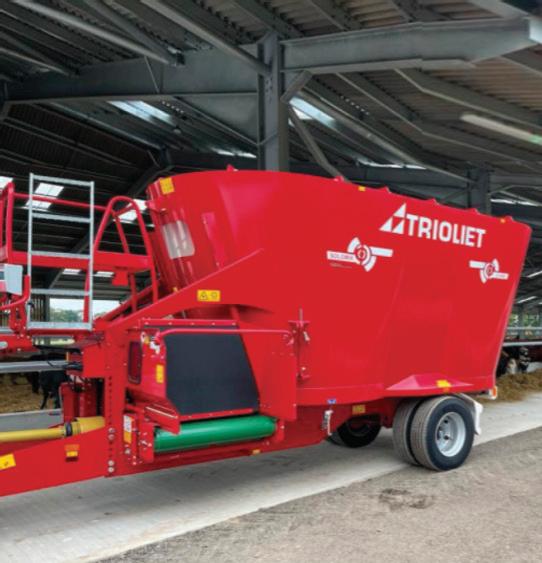
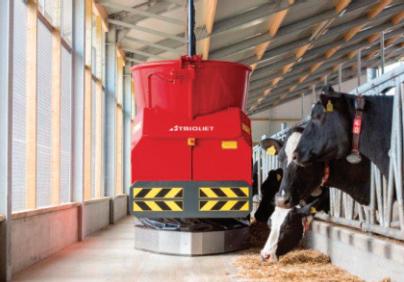

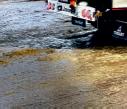


DECEMBER 2023 29 CONFERENCE
Research shows there are benefits to the calf itself from pair or group housing.
As well as robots and conventional parlours in a range of farming systems, this technology special also looks at automation for calf feeding.
It was taking one person ve-and-a-half hours for each of the two daily milkings in the old parlour, a 20:40-point Gasgoigne-Melo e herringbone model, purchased third-hand more than a decade earlier.
But Tom Jones knew it was time for a change. He runs Trelay Farm, Davistow, Cornwall, with his parents, Chris and Jackie, and his wife, Clare.
Tom says: “ e original parlour had been cobbled together and I started looking for a new installation following the family’s acquisition of a second farm nearby, which increased total herd numbers from 450 head to 620. e labour input could no longer be justi ed on the home farm.
“I am not a fan of over-complication and I did not feel the need for a system with all the latest technology. ere are usually two people on hand, but it was important that milking could be carried out e ciently and within a reasonable time period, if only one person was available.
“A robotic milking system was ruled out, mainly because the farm has a nine-month grazing period. It would also have required a signi cant investment; the prices I was quoted
The parlour has fitted in well in the old silage pit, as its location was ideal


Tom Jones’ main requirement was for ‘simplicity of operation’ when he was looking to install a new parlour. Wendy Short reports.
New parlour meets farmer’s expectations
amounted to about £100,000 per 100 cows. In addition, the building layout is unsuitable for accommodating the number of machines which would have been required.
“A rotary parlour was also out of the question, again partly because of the expense. ere would have been no alternative but to spend money on a new building to accommodate the design.
“When factored in with the price of the parlour itself, it would have added up to roughly ve times the cost
of a standard parlour in total.”
ree parlour models made it to the nal selection and the family went to look at several in operation on local farms, before making their nal decision, which was the middle of the road, in terms of price, he says.
e previous herringbone design had been e ective, so it seemed logical to pick the same layout for the new installation. ere was insucient room to build the new 32:64 parlour on the old site, but a former covered silage pit
was earmarked for conversion, says Tom. e old site has been made into a cubicle shed.
First batch
e rst batch of cows went through the Waikato Supa4 Inline installation in the late summer of 2021.
Tom says: “ e parlour has ed in well in the old silage pit, as its location was ideal and some of the main structural work was already in place.
“I was initially keen to opt for a slightly larger installation, but I
DECEMBER 2023 30 MILKING
34 GROWTH OPPORTUNITY Adapting to a move to robots 38 GRAZING SUCCESS Milk from forage maintained 42 AUTOFEEDERS Technology in the calf shed
TOM JONES
Tom Jones runs Trelay Farm, Davistow, Cornwall.
PICTURES : Tom Jones


WITH ULTRAPLUS AND BEEF IMPACT, WE ACHIEVED AN IMPRESSIVE CONCEPTION RATE


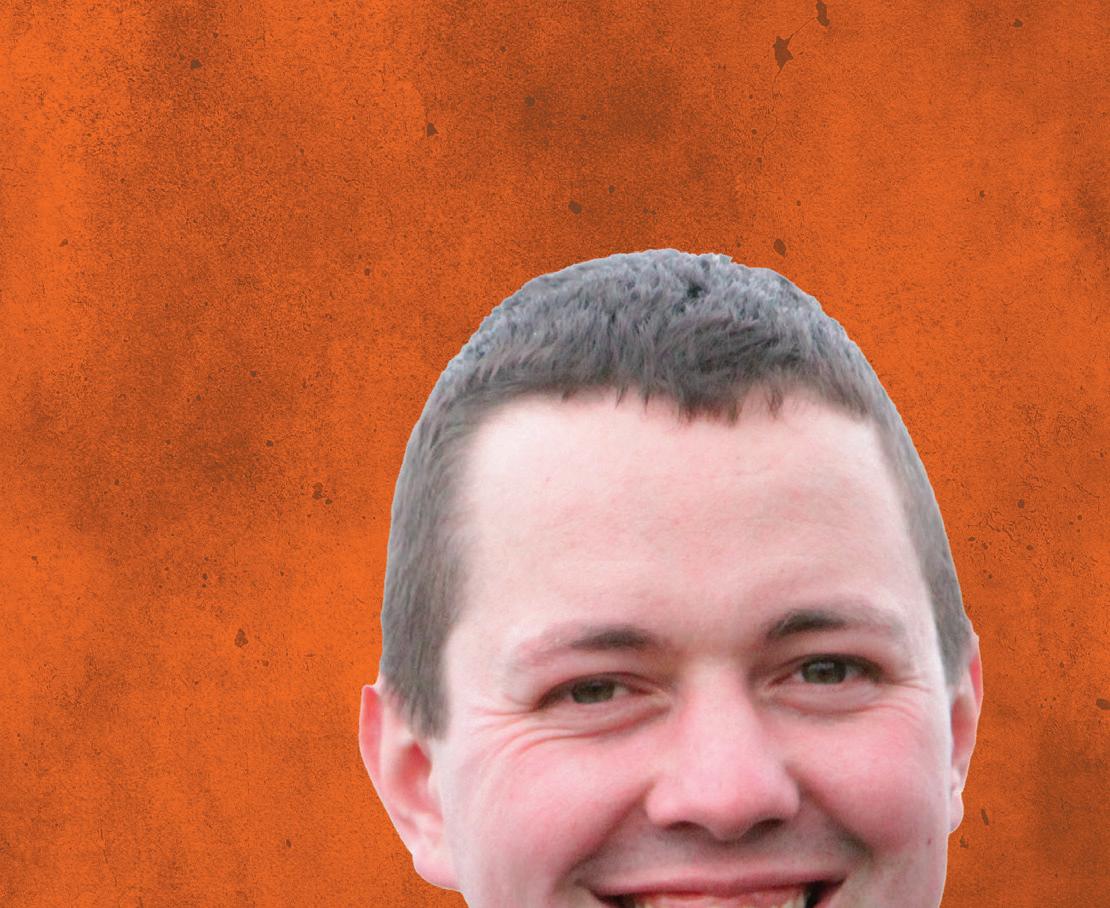















At Cogent, we recognise that while many aspects of our industry may not be entirely unique, it’s our distinct approach that truly defines us. From our pioneering sexed semen technology to our bespoke Beef on Dairy program, our unwavering dedication to making a positive difference for every farm, business, and partner we collaborate with sets us apart. If you’re in search of greater profits, improved fertility, or heightened efficiency, don’t hesitate to explore how the Cogent Difference can impact your enterprise.


























Freephone: 0800 783 7258 www.cogentuk.com
Andrew Sayers, Strabane, Co. Tyrone.
FOLLOW US ON:
MILKING
was discouraged by George Berriman, of Milk o Dairy Systems, which is the local dealership for Waikato.
“With hindsight, his advice was sound, as a larger model would have restricted space in the exit area and caused problems.
“ e model we eventually chose ts into the building perfectly and it now takes just two-and-a-half hours for one person to milk the 450 cows on the home farm.
“ is has more than halved the time spent on milking. It would be possible to milk 350 cows an hour with two people on shi , although that would be pushing it.”
One of his few stipulations for the new installation was automatic cluster removal (ACR).
Tom says: “ACRs come into their own if there is only one person milking. Extra care had to be taken in the old parlour because there was no ACR facility.
“ is was not an issue with cows in peak lactation, but late lactation cows were at risk of being overmilked because a single operator could not always get to a particular animal to remove the clusters at the optimum time.
“ at is a situation to be avoided wherever possible, as it can lead to minor teat damage.”
Simple batch feeders, a scis-



sor-style gate and a containment system were some of the other prerequisites.
Diet
Tom says: “Cows are run as one group and their diet is based solely on grazed grass from April until October, with silage in winter, plus an annual one tonne of concentrate feed o ered in the parlour.
“ e scissor gate is very useful as it has a manually-operated lever which can be accessed from anywhere in the parlour.
“Another feature which has worked very well is the combination of crush and locking yoke, which stand side by side.
“ ey are used to secure the cows as they exit the parlour and they are particularly convenient during pregnancy diagnosis, as our local practice usually sends out two vets.
“We also have a purpose-built handling system, made from tubular steel and designed to maximise cow ow, as well as a manual segregation gate, which

Farm facts
rCows, which are divided into spring- and autumn-calving groups, are cross-bred, with Irish Friesian, British Friesian and Jersey bloodlines
rThe average yield is 5,500kg at 4.7% butterfat and 3.9% protein
rMilk is sold to Saputo
rSlurry storage facilities have recently been upgraded with the addition of an earth bank lagoon which has taken to the total storage capacity to 11.3 million litres
rThe home farm is run by Tom and his father Chris, who work alongside one full-time employee, two part-time staff and a relief milker
is mostly used to divert the cows into the footbath.”
e family completed all the groundworks necessary to prepare for the new installation and made use of some existing building walls, also adding some new pre-cast concrete panels.
While the system has milk recording capability, individual yields are not currently recorded. e milk is stored in two Fullwood tanks which have been le in situ in a neighbouring building; one tank holds 8,500 litres and the other 10,000 litres.
Transitioning to the new parlour was much easier than expected.
Tom says: “For the nal two milkings in the old parlour, cows were run through the new system on exit. eir rst visit to the new location went without a hitch, which I found quite surprising.
“I had been prepared for some resistance to the change in environment, although it helped that the cows were used to being fed in the parlour.”
DECEMBER 2023 32
Transitioning to the new parlour was much easier than expected, says Tom Jones.
Cows eating forage in the collecting yard.



Having the best genetics is great but knowing they’re BVDFree makes them GREATER © Neogen Corporation, 2023. Neogen and Igenity are registered trademarks of Neogen Corporation. All rights reserved. Igenity ® Genomic Technology, powered by Neogen® Follow us on: @ Neogen EMEA - Animal Safety & Genomics @ Neogen iEMEA For more information email us at neogengenomics@neogen.com or call us on + 44 (0) 1292 525 600 Dual insights from a single sample: Test for Genomics & BVD Together Introductory Offer: Purchase 10 Genomic tests and get 10 free Use Discount Code: IGENITYDF10 Quote the discount code via telephone or email. New customers only; limit one 10-test giveaway per customer. Offer valid 1st November, 2023 - 31st December, 2023 *Our lab is accredited for BVD eradication schemes in England and Scotland
Adjusting to life wi
Moving from an eight-unit abreast parlour to milking robots has brought change, opportunity and growth, but also significant adjustment to Tim Jeynes and his family. Dairy Farmer reports.
Tim Jeynes farms in partnership with his father, Trevor, and is the fourth generation to farm at Red House Farm near Tewkesbury, Gloucestershire. His wife, Yvonne; son, Dom; daughter, Kim; and stepson, Josh, help to manage the farm and have been instrumental in the process of introducing robots to the 140-cow herd of pedigree Holsteins.
Tim says: “My father installed the abreast parlour in the 1950s and I still say there is nothing like it for understanding the cows, but robots are de nitely more e cient.
“I milked in that parlour from 16 and Kim took over the milking duties a few years ago. We all agreed that it was not sustainable to milk for four hours, and that robots o ered the farm the greatest exibility and opportunity to expand.”
He concedes that the herd had quite literally outgrown the abreast
parlour, both physically and in numbers. Tim has given special a ention to breeding, with cows registered under the Vernons prex – a nod to his grandfather – and his e orts have bred a much larger cow that the family was struggling to milk in the old parlour.
“ e abreast parlour was built for British Friesians; a much smaller breed. Modern Holsteins are signi cantly bigger, and while I do not choose to breed for size, there is no escaping the genetics,” he says.
His numbers have grown slowly and, with plans to grow the herd to keep the farm a sustainable business for his children, he invested in robots as a scalable milking system.
He says: “We have two DeLaval VMS V300 robots and we are milking 115 cows.
“Yield has shot up to 11,200 litres per cow per year, so we have grown the followers to 100 and will install another robot that will start milking very early in 2024.”
Farm facts
rFarm extends to 80 hectares (200 acres)
rHerd of 140 cows, housed all year round, and 100 followers
rTwo V300 DeLaval robots milking 115 cows
rMilk protein: 3.4%
rButterfat: 4.25%
rYield: 11,200 litres per cow per year
rSomatic cell count: 140
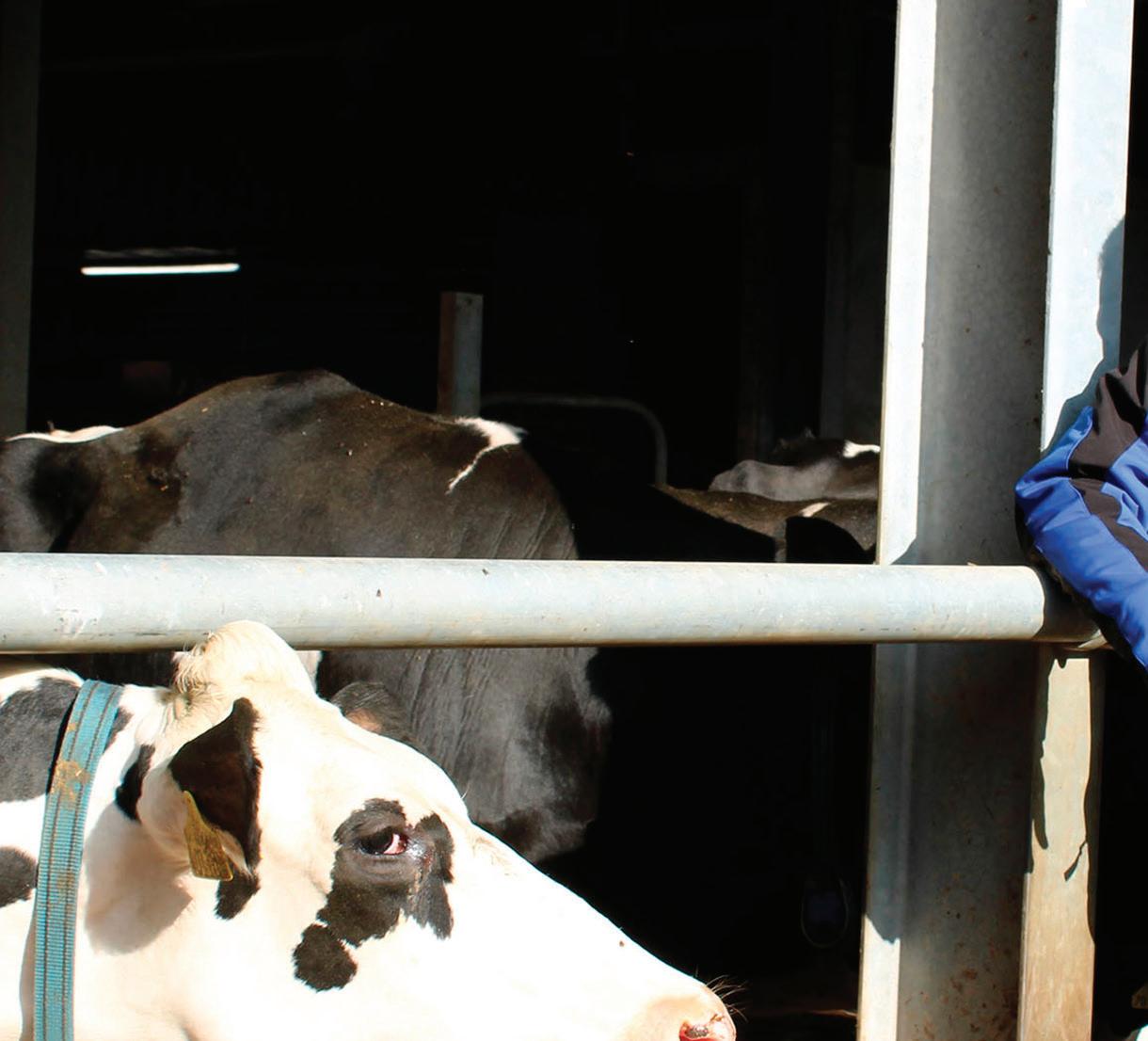
e milk yield has risen by 1,400 litres, which has given him the con dence to refurbish an old shed that will house an additional robot milking only heifers.
Heifers
Tim says: “When we started milking with robots in April 2022, I separated heifers and Kim milked
them in the abreast parlour because we had too many in the herd for the robots.
“Sadly, we had to cull 22 heifers following bovine TB testing, which le the old parlour redundant. However, it showed me the bene ts of a heifer-only group, and I think keeping them separate adds a lactation to their life.”


DECEMBER 2023 34 MILKING
The Jeynes family are focusing on silage quality and improving the farm’s grass leys.
th robots

In total, 50 heifers will be milked through the new robot at the start of 2024, bringing the herd size close to 200. With the UK average herd size being 220 cows, Tim says he sees this as a move that had to be made for the business to prosper.
“Operating costs, such as machinery investments and electricity, have increased. We have 200 acres so we can make plenty of silage, and growing the herd was the logical option,” he says.
“While the robots use more electricity than a parlour, they have
[The robots] have given us time to address other areas of the farm and we have been able to grow quickly
TIM JEYNES

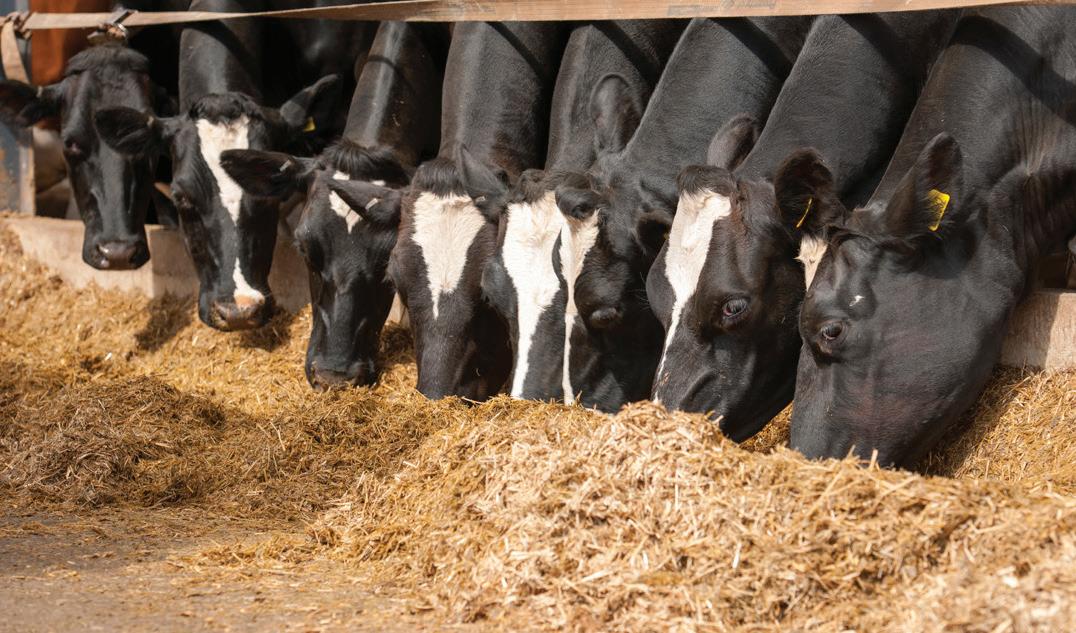


NWF Agriculture supply zero soya feeding options for your dairy herd.
given us time to address other areas of the farm and, crucially, we have been able to grow quickly.”
e speed of growth has been facilitated by the herd taking to the robots with very few issues.
Tim says: “ e cows learned the system faster than we did. We chose the DeLaval robots because of the camera teat a achment. Individual quarter milking has brought huge cow health, yield and e ciency bene ts.”
Trust
He explains that he was unaware of the variation in quarters and that by standing next to the robot it is possible to see the di erence in milk uptake. He also admits that cows were no doubt being overmilked in the old parlour, which was taking time away from other work, but he has also found it dicult to step back.
He says: “T.H. White installed the robots and have been a great support. ey encouraged us to step back and trust the robots, which we have done now, but it
•NWF Fusion dairy feed range is free from soya, soya hulls and palm kernel.
•Formulated to offer cost effective rations for early lactation and high yielding cows.
• Rations feature high levels of digestible fibre, starch and protected proteins to aid rumen function and cow health.
•Inclusion of Ultra Pro-R, a high-quality vegetable protein with a high level of DUP, and Ultra Starch-W, a protected wheat, aiding rumen health to achieve feed utilisation.
•Sustainable sourced raw materials utilising British and/or European grown crops helping to reduce carbon footprint whilst keeping raw material provenance in mind.
•Manufactured at NWF UFAS accredited feed mills in Cheshire, Cumbria and Devon.
DECEMBER 2023 35 MILKING
in touch for feed and expertise
Get
2787
0800 756
www.nwfagriculture.co.uk
More than Soya
Tim Jeynes
MILKING
took a li le while for me to accept the robots were capable of handling the milking.”
DelPro system
e parlour installation company also helped the family set up the DelPro system, which monitors productivity and cow health. In a similar way to the adjustment it took to let the robots milk, Tim is now beginning to embrace the bene ts that data is bringing to the farm.
“We have only scratched the surface of the reports DelPro can o er. Kim and I have worked with T.H. White and DeLaval to set up a dashboard and bespoke reports that take data from the robots and present it in easy-to-digest tables,” he says.
He is provided with yield, conductivity, average feed consumption, number of visits, days in milk and percentage of incomplete milkings. is has been consolidated in a report that provides him individual cow data with a seven-day average, relative
percentage yield and visits versus feed consumption.
“ e report is colour coded with a green/amber/red system to identify cows doing well and underperforming. Kim is bene ting more than me; I still believe that being with cows is the best way to pick up on things, but I cannot argue that with a growing herd this is the way to go,” says Tim.
He suggests that with somatic cell counts (SCCs) at 140 he would like to see improvements, and that he is adjusting to a less hands-on roll. e DelPro system o ers him the data to detect mastitis, but he believes he was reacting faster when milking the cows in a parlour.
He says: “In losing the hands-on approach of detecting mastitis, we are yet to reach a stage where we can interpret the data as quickly as we could feel and sense the signs. We are improving all the time and SCCs are coming down, so I see it as another adjustment that will see
the robot method prove more ecient, but I cannot help believing in traditional methods too.”
A er 18 months with the robots, and with a third on the way, the family has been at out preparing the new shed and managing the increase in youngstock. Silage provision has also increased, and in 2023 they managed to take six cuts.
“I think when the third robot is in and things slow down a li le, we will re ect on how much we have achieved and also have more time to really squeeze the bene t out of not having to be hands-on milking,” says Tim.
“It has been a great year for grass, but we have to be mindful of ooding and not get ahead of ourselves.”
Flooding
e farm is located on the ood plain of the River Severn, which routinely bursts its banks; jeopardising grassland productivity. However, with a good year and three clamps full of quality silage,

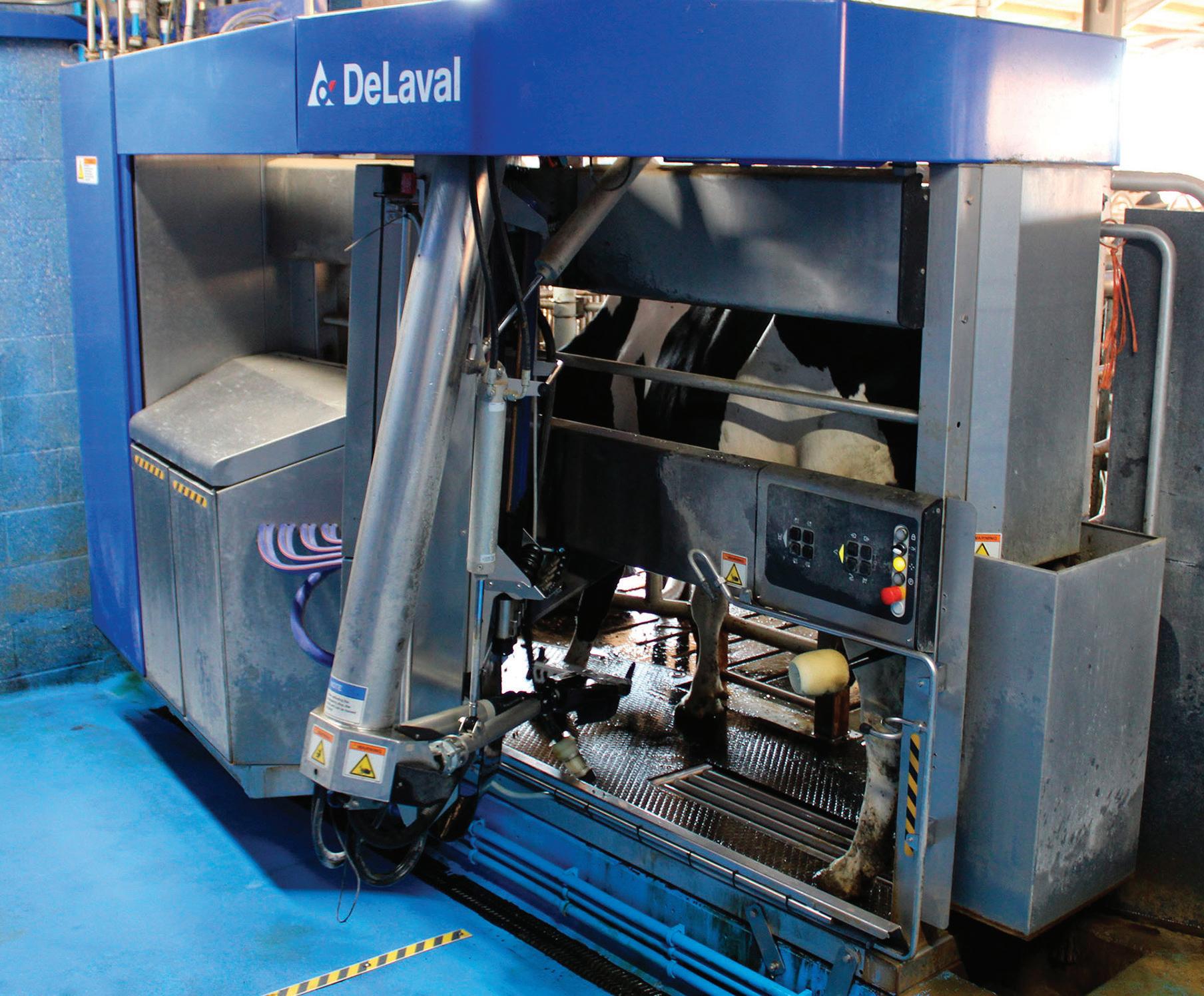
Tim is feeling positive about the expansion.
Silage
He says: “First cut was good, but with the June drought, our third cut was down to 13.9% protein, with a D-value of 72 and 11.5 ME. We saw that rise signi cantly for the h cut, which was much higher in protein at 17.7% but dropped to a D-value of 65 and an ME of 10.4.”
He accepts that with three clamps and uctuating forage, there is work to be done to stabilise his milk from forage. However, with more time available, he and Dom are also focusing on silage quality and improving the farm’s grass leys, with help from Josh, who works for a local contractor.
Tim says: “We use mostly perennials and aim to reseed every three to four years. We have been experimenting with clover mixing, and while red clovers do not seem to like the wet ground, white clover has gone well. However, with a growing slurry output we are not likely to increase our use of clovers as it is not so good for slurry application.”
Re ecting on the choice, he believes his cows and farm are well suited to robots and that the decision will help to secure their future.
“ e cows have always had the potential to do a lot more milk and the robots are de nitely the best way to achieve this. We hope to install solar soon, which will provide sustainable energy for all three robots, and then we have a system that will hopefully last the next 60 years,” he concludes.
It took a little while for me to accept the robots were capable of handling the milking
DECEMBER 2023 36
TIM JEYNES
Tim Jeynes invested in two V300 DeLaval milking robots as a scalable milking system.
IT’S A BUMPER YEAR FOR BRITISH SUGAR BEET

WHICH IS GREAT NEWS FOR OUR PRICES!






RESERVE THE NATION’S FAVOURITE FEEDCALL YOUR MERCHANT TODAY WITHOUT DELAY

Milking robots have traditionally only served a purpose for cows housed indoors all year, but for Cumbrian dairy farmer Mac Findlay, a dedicated set of tracks leading to a series of paddocks and an automatic two-way shedding gate means they are working smoothly on a grass-based system.
e future of the 130 Moorside herd of Normande cows rested with Mac – a h-generation farmer – and his dad John’s decision to invest in a robotic milking system while still being able to graze the cows.
Mac says: “We had been talking about changing our 16:16 herringbone parlour, but for me to take the farm on, I did not want to be tied to twice daily milkings and was keen to invest in robots. It came down to being a case of I would stay on the farm if we could embrace technology.”
e farm in Culgaith, near Penrith, had successfully milked a herd of Normande ca le –thought to be one of the only pure-bred herds in the country – for the past 30 years. As highly aggressive grazers and lowinput, medium-output cows, the Findlays did not want to change the breed but instead adapt the
A Cumbrian dairy farmer is defying the odds by milking his grazing herd of Normande cows through robots. Sarah Alderton finds out more.
Grazing Normande cows in a robotic milking system


Farm facts


rHerd of 130 cows: 111 in milk, 85 followers and 90 store bullocks and beef heifers
rSome seven Dairy Shorthorn have been introduced to help increase herd numbers with the breed having similar attributes to the Normande
system to ease management.
In 2020, following Mac’s return home from travelling in New Zealand a er completing his Agriculture degree at SRUC, the leap to robots was made.
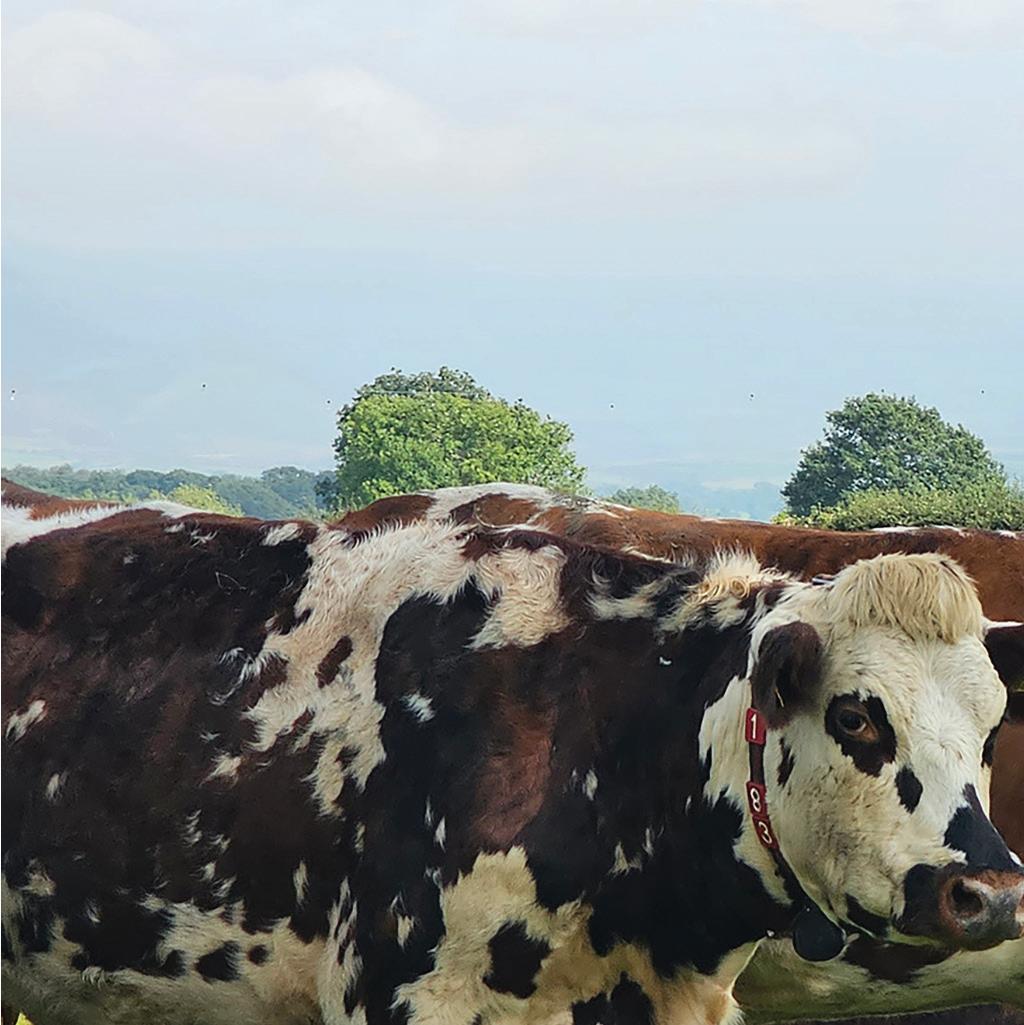
Mac says: “People think you cannot graze with robots, but that is a load of rubbish.”
Two Lely A5 robots were installed alongside a Lely Grazeway selection box. e

Grazeway included a double gate system installed at the exit point of the barn where the cows go to pasture, enabling them to choose for themselves if and when they want to go out to graze. is is an essential tool for any farmer looking to graze their cows while being milked by robots.
Cows are outside grazing
rAverage yield is 6,800 to 7,000 litres at 4.6% butterfat and 3.6% protein
rSomatic cell counts stand at 165,000 and bactoscan at 20
rMilk is sold to First Milk Nestle
from April to November and rotationally graze in 12-hour blocks on a 28-hectare (70acre) A-B grazing platform. is means the farm has two 12-hour grazing blocks (daytime and nigh ime), linked by a track split into
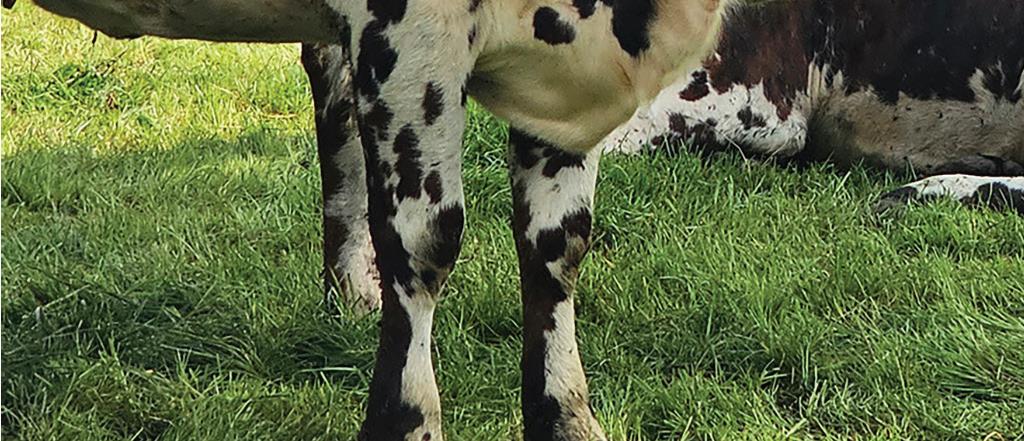



















DECEMBER 2023 38
MILKING
Mac Findlay farms with his dad, John, in Culgaith, near Penrith.
two lanes by electric fencing, with one serving each block. Within each block, cows are tightly grazed using back fencing to provide a 12-hour grass strip. A single-strand electric fence is placed on either side of the section being grazed, with the amount of grass supplied adjusted depending on how much is available and how o en the cows return to the robots to be milked.
Grass monitoring
Mac says: “We do not use plate meters to measure grass, but instead adjust the area to be grazed daily by looking at what the cows are doing and how much grass is available by eye.
“If we provide too much grass, the cows will not return to be milked as o en as we like, but if we get it right, they want to return to the robots to be milked.”
Cows, on average, are miked 2.2 to 2.4 times in the



summer, increasing to 2.8 to three times in the winter. When they return to be milked, they receive an 18% protein cake with the amount provided based on their individual lactation curve.
Almost half (2,800 litres) of








the 6,800 to 7,000 litres of milk produced per cow comes from forage. Mac says the breed is an essential part of the system’s success.
He says: “People think you cannot graze with robots, but we have proven you can. The
breed has a good temperament and can think for themselves, which is vital for this system and means we rarely have problems.
“As long as we have provided just the right amount of grass, which the cows graze aggressively,























































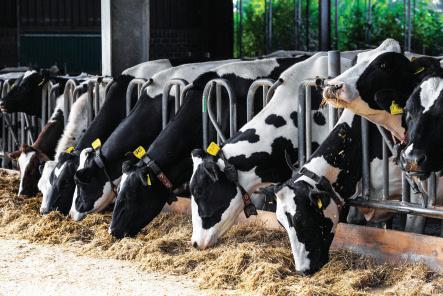




























































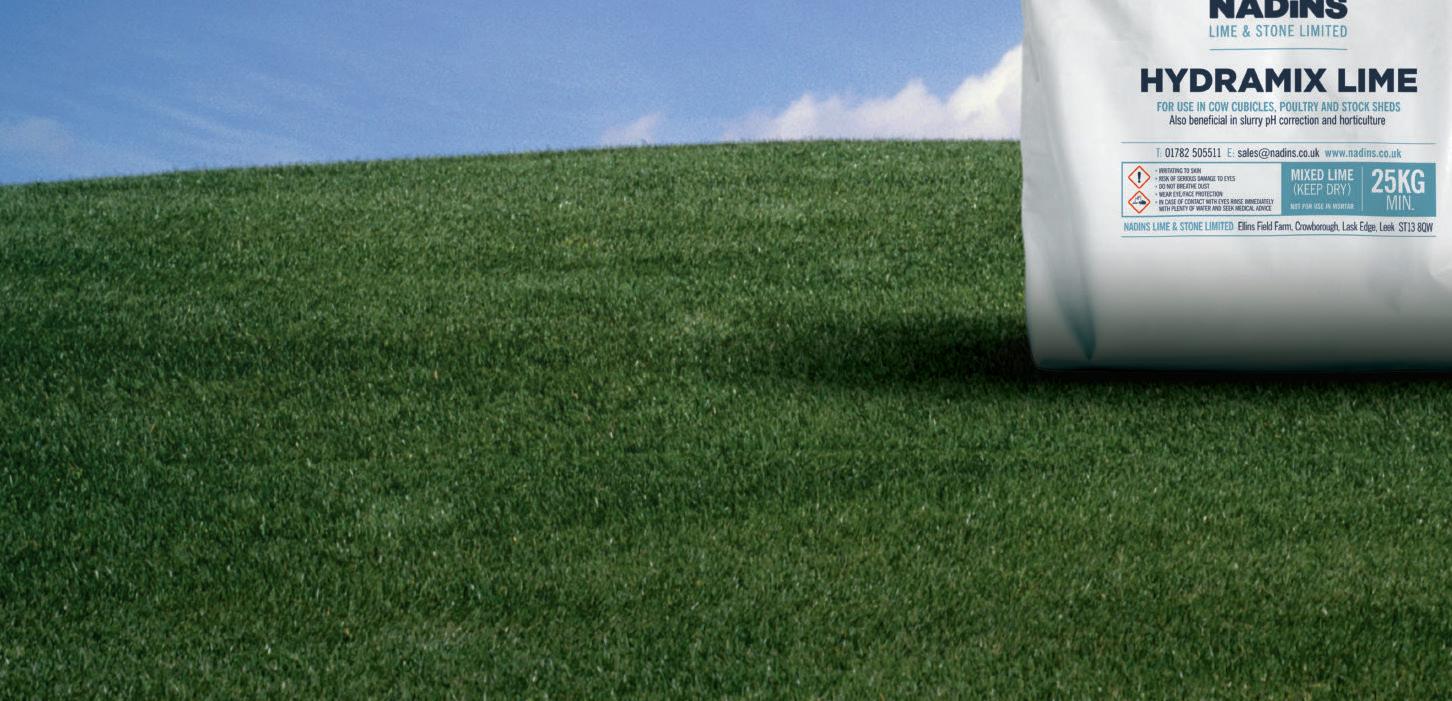







DECEMBER 2023 39
Two Lely A5 robots were installed alongside a Lely Grazeway selection box.
MILKING
they will return to the robots to be milked.”
On returning from the milking robot to the paddock, the Grazeway will direct the cows into one of two lanes leading to either the nigh ime or daytime paddock, depending on how close it is to the end of the 12-hour block.
For example, if a cow has already completed two milkings and has been grazing on the same paddock for 10 hours, it will be directed to the next block for grazing.
Mac says moving the fences in both blocks takes under an hour each day. If grass starts to get away, it is cut for round bale silage, which is fed all year
People think you cannot graze with robots, but we have proven you can
MAC FINDLAY
round to the cows in the collecting yard next to the Grazeway and over winter. e Grazeway is linked to the Lely Horizon cow-recognition system, allowing Mac to assess individual cow daily activities. is includes the number
Training cows to the system
JTraining is needed to get heifers used to the set-up. Heifers are brought into the system one month before they are due to calve to get used to the robot, says Mac.
The Lely Horizon cowrecognition system can be set to a training mode so heifers
can enter the robot where they receive some feed but are not milked. It also gets them used to the grazing system as they are allowed outside to graze alongside the cows.
Mac says it takes a heifer about 12 to 14 days to get them used to the system.

of trips to the robots, milking speed and somatic cell counts, for example. He says the computer has essentially replaced the milking parlour.
“I now look at a screen to see how cows are performing and highlight any cows that may need a ention or are coming into heat. It has also brought about a labour saving by taking one person out of the operation.
“Our herd manager, Ivan Nixon, looks a er the herd’s day-to-day management, and I spend a similar amount of time checking the so ware programme while having more time to manage the calves and youngstock and my 200-ewe Lleyn sheep and 30-ewe Herdwick ocks,” he adds.
A 40% grant helped nance
the £250,000 investment in the robots and Grazeway, with total cost including the robots and the shed coming to £350,000.
Two bays were added to the existing cubicle shed that housed the old parlour to allow the robots to be installed and to provide extra pens that could be used to shed cows o , such as those requiring treatment or close to calving.
Further grant funding was achieved to nance the track and paddock set-up, totalling £40,000. e track network leading to the paddocks is made from hardcore and sand, and then topped with AstroTurf. Water is provided via troughs along the track and back at the parlour.
Grassland management
JProviding quality grass to the cows is paramount to maximise milk from forage. Mac says soil samples are taken across the farm each year and used to address any imbalances. This data is also used
to tailor a specific mineral package for the cows fed alongside grass silage during the winter. About 10 hectares (25 acres) are reseeded each year with a three grass species mix with clover.
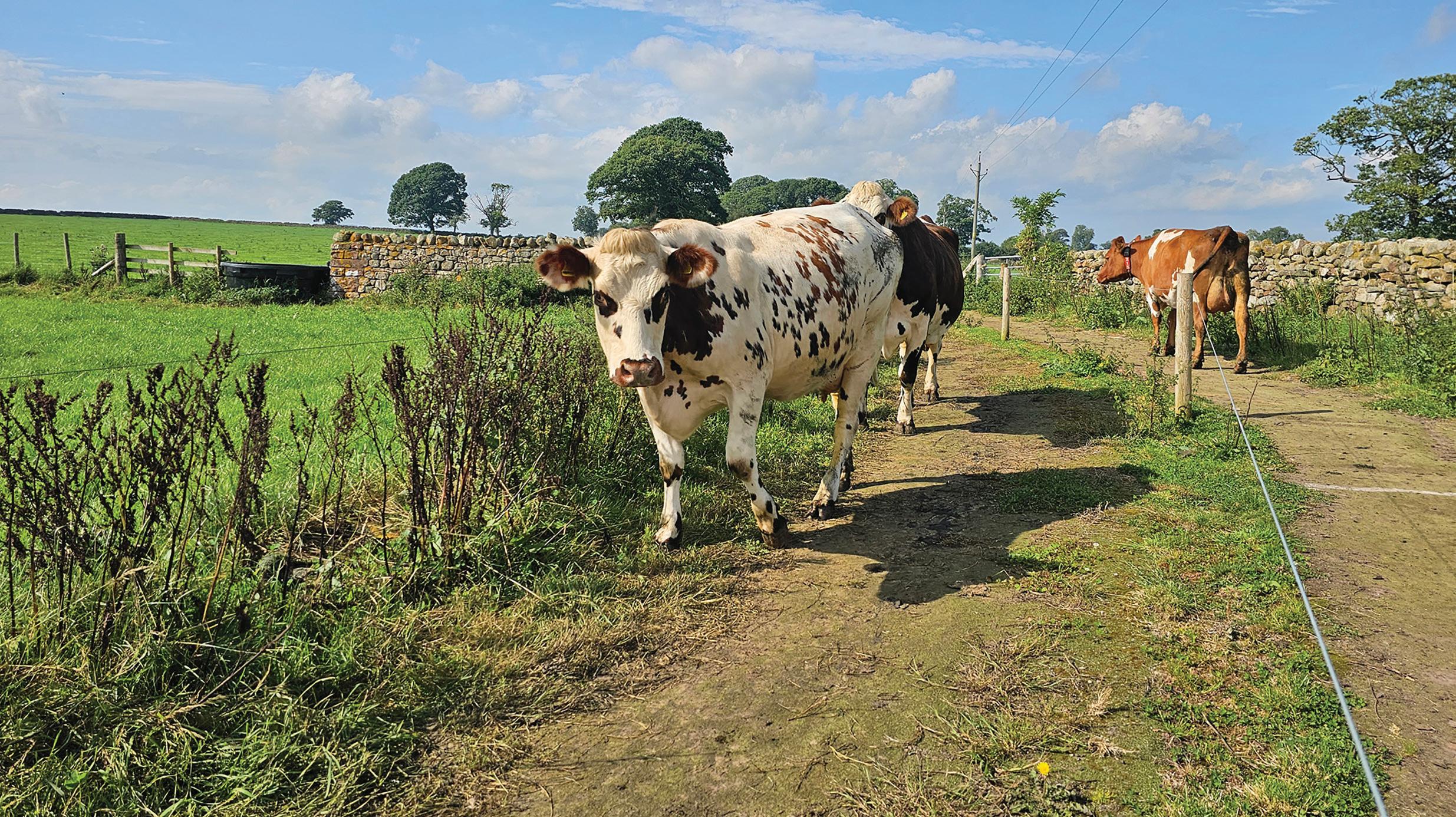















DECEMBER 2023 40
The farm’s two 12-hour grazing blocks are linked by a track split into two lanes by electric fencing, with one serving each block.





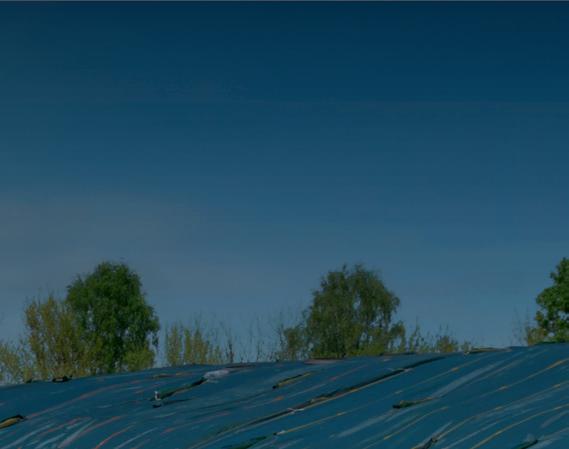



• In nitely variable driving up to 40 km/h
• High-torque Deutz engines delivering up to 115 kW/156 hp
• Improved SMART ROADING for minimal driving noise
• Lift capacities from 3.2 to to 6.0 t
• SMART LOADING driver assist systems
Find out more about the SCORPION. Contact your CLAAS dealer for a demonstration today. claas.co.uk
SCORPION. Safe, strong and agile.
For
At this year’s TotalDairy conference, the use of technology for calf rearing and, in particular autofeeders, was discussed in the context of how it could meet the needs of the producer, the consumer and the animal. Katie Jones reports.
The successful use of calf autofeeders
Calf autofeeders can provide the dairy industry with a ‘win-win’ situation said Dr Bob James, a dairy calf and heifer consultant from America, who explained their use could lead to improved calf health and welfare, with ‘happy calves’ resulting in ‘happy consumers’.
Dr James, who works with larger farms and calf ranches throughout the US, Canada, Mexico, South America, Asia, Australia and Europe, said provided that autofeeders were used properly, they could have a positive impact on calf welfare and performance.
He said: “Autofeeders will provide a situation where you have be er calf nutrition, as the calf is ge ing more milk in a biologically normal manner.”
He also said autofeeders allow for improved weaning through a more ‘normal’ transition period, and also be er behaved calves, with research suggesting calves fed via autofeeders were less likely to cross-suckle and were be er able to adapt to new feeds and environments through the rearing period and beyond.
“ e use of autofeeders will result in be er behaved calves, and a be er perception by the consumer, but only if [the use
autofeeders] is done right.”
He went on to highlight key points for the success of feeding calves via autofeeders, which start with good protocols at calving and during the newborn period, and he highlighted the goal of ‘clean colostrum’.
“ e calf is pre y much sterile at birth, but can become rapidly colonized by bacteria from the environment, the dam, colostrum and the hands of the feeder.”
Other areas to consider when looking at the viability of autofeeders included the facility they were being installed into, personnel operating the machine, water quality, whether milk or milk replacer was used as the feed, and access to starter feed and forage.
Drainage
He reminded delegates that whether using an autofeeder or not, it was important that the facility had good drainage and ventilation.
Dr James said producers were o en too focused on preventing draughty conditions, and instead he advised focusing on making sure calves were dry so that they could withstand cold air coming into the facility.
He advised testing water quality regularly to make sure bacteria and mineral levels were
within the correct parameters. And when introducing calves to autofeeders for the rst time, Dr James said it was important the calf was robust and displayed a good appetite.
He said it was possible to introduce calves to autofeeders at less than ve days old.
“By doing it sooner rather than later, you are introducing them to autofeeders before they are taught they only get fed twice-a-day.
“On their rst feed give them access to a full meal of 1.5 to two litres, and, if on an ad-lib system, I would then advise giving them access to up to two litres of milk every two hours.
“Naysayers will say if you feed them all that milk, they will never eat any starter feed. But I say that is rubbish, they will still learn to eat the starter feed.”
He added that ad-lib feeding would be er mimic natural feeding behaviour and deal be er with variability between calves.
“But if you are implementing a restricted feeding system, you must be feeding more than eight litres a day as some calves will consume their allo ed amount within a 12 hour period, which will be followed by lots of unrewarded visits to the feeder and high stall utilisation.
“When it comes to weaning age, in North America, 56 days
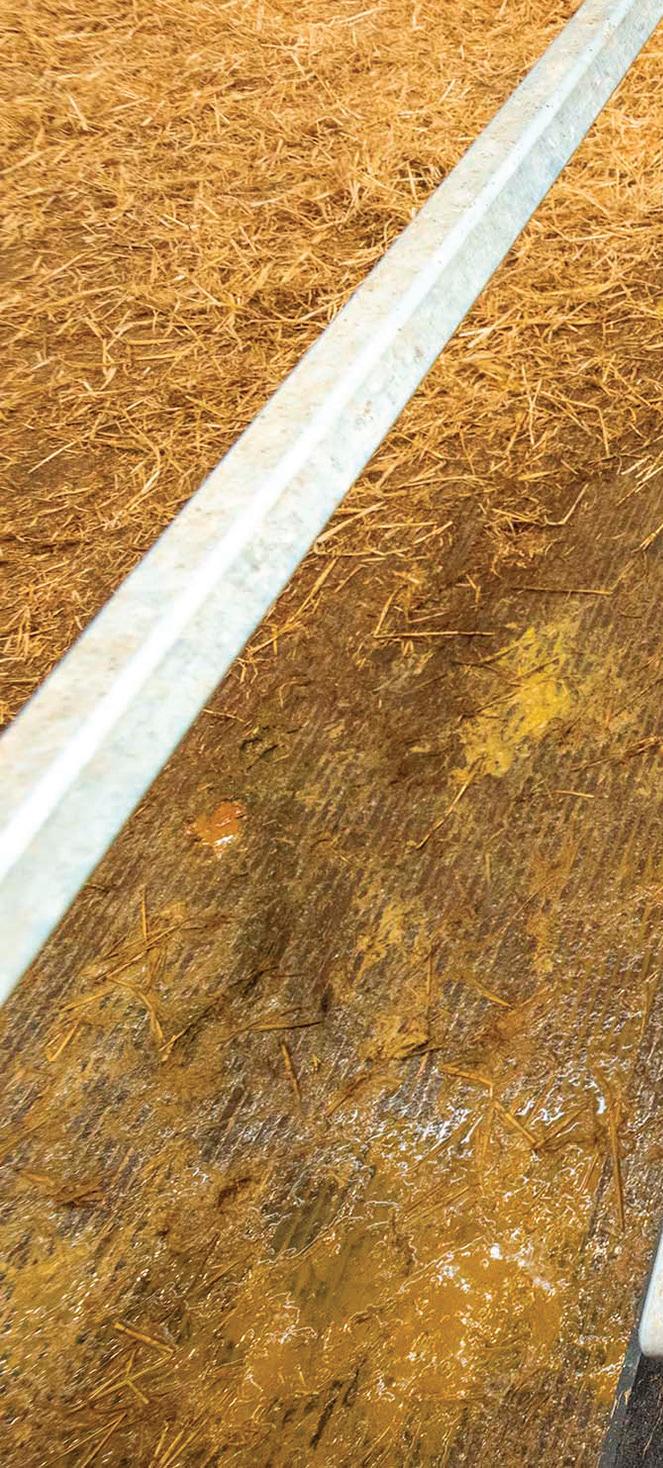
Autofeeders have the ability to provide the calf with milk in a ‘biologically more normal’ manner, said Dr Bob James.

is the norm unless the weather is really cold.
“In Europe calves are weaned much older, but I would question the bene ts of an older weaning age and whether these o set higher milk feeding costs.”
At the training stage, he added it was important that the person in charge of calf rearing was patient and gentle.
Personnel
“ e personnel in the calf rearing shed needs to have an interest in doing calf rearing right.
“Training calves onto autofeeders is an art, so you have got to
Dr James’ plan
rDay one to 27 –ad-lib – limit to two litres every two hours
rDay 28 to 31 – eight to 12 litres with maximum meal size of between 1.5 and 2.5 litres
rDay 32 to 41 – eight litres with maximum meal size of between 1.5 and 3.5 litres
rDay 42 to 56 – drop down gradually from eight litres to two litres
DECEMBER 2023 42 MILKING
more from the TotalDairy conference, see pages 42-43.

have people with patience and the ability to work with calves.”
He also advised against ‘over-training’ calves whereby the calves became accustomed to only being pushed through the feeders, and would not use them of their own accord.
He added machine hygiene was vital, and advised following
manufacturers guidlelines for the number of chemical cleans and the type and volume of chemical to use.
Teat nipples should also be
removed and manually scrubbed every day, and regularly checked for signs of wear.
He said it was possible to use whole milk rather than milk replacer in autofeeders, but added this came with the challenge of making sure the quality and cleanliness was maintained and added it was important to remember that this milk was not ‘free’ and still had a cost of production associated with it.
Human
“When looking at what milk replacer to feed, do not just go for the cheapest option.
“Go for a product with human edible grade ingredients and protein content of 24-28% and fat between 16 and 25%.
“Buy from a reliable manufacturer who has invested in research into their products. You are going to pay more for this product, but you will end up paying more one way or the other.”








DECEMBER 2023 43 MILKING Starling Control Reducing starling nuisance with a nutritional approach Protecting Ration Energy Preserving starch constituent for increased feed efficacy Disease Prevention Helps prevent the spread of avian-borne diseases Are starlings costing you money? Dairy Beef Anti-starling salt for maize and wholecrop feeding B2B Technical Dept: 01363 775 115 techteam@brinicombe.co.uk B2B Nutrition is the trade arm of the Denis Brinicombe Group Available from your local agricultural merchant
A focus on slurry storage options, infrastructure grants, the value of automated slurry scrapers, and how reed beds can be used to capture farmyard run-off.
Future of small-scale AD tech
By Tom Woolman
There are plenty of reasons to avoid anaerobic digestion (AD) as a dairy farmer; units are capital intensive, planning and permitting are complex and the management of facilities can be a full-time headache.
However, a new engineering company, BioFactory, is suggesting things are about to change. The business, set up in 2020, has developed small-scale modular AD technology more accessible and affordable for small-scale applications.
Eoin Sharkey started the company after studying mechanical engineering at Bath University. He spent some time in Kenya with a water consultancy business and iden-
tified a need for human waste treatment facilities which could be housed inside a shipping container.
Setting out with international development funding from the UK Government, Mr Sharkey was forced to change the direction of the company early on.
Restrictions
Covid-19 restrictions impacted the ability to travel to countries where the waste systems were being developed for. UK dairy was the obvious choice to adapt the technology.
Mr Sharkey says: “Low-cost technology which could be put in a container were the primary objectives of our first product and we thought there was definitely something in that which could apply on-farm.”
The company has built a full-sized


prototype which demonstrates the concept of turning slurry into energy on a small scale.
The unit sucks slurry up from a nearby channel into an AD reactor housed within a 40-foot shipping container.
The process takes 10-13 days, producing methane which is burned to create energy. Liquid digestate comes out of the reactor, with the advantage of being more viscous and concentrated in nutrients than the slurry which went in.
BioFactory says its equipment will involve little input from the farmer. The company will monitor the equipment for faults and carry out all routine and emergency maintenance.
Self-sufficient
The equipment is designed to make farms more self-sufficient when it comes to energy. It is not about feeding electric back into the grid. Chief commercial officer Jon Blake thinks the applications for individual farms could be numerous.
He says: “We know that digestate is a better source of nutrients than raw slurry, which is one benefit. Warming drinking water for cows to increase consumption or heating hot water could be other advantages which improve returns.”
BioFactory set out with international development funding from the UK Government.
While some of the processes remains confidential for now, BioFactory has applied for a patent and hopes to sell its first two commercial units by March 2024, with the ambition to increase production and have up to 75 units operating by 2026.
Each unit has a net output of 11kW electric and 25kW of heat, with about 5cu.m of slurry entering the system every day, the equivalent output of 100 cows.
Farmers will be able to install the equipment under permitted development. Site requirements are minimal, with the key factor being a hardcore base located near existing slurry handling infrastructure.
Although the cost of a unit will run into six figures, BioFactory claims a three- to six-year payback is possible depending on how the energy generated can be utilised by the farm. It estimates the equipment will last more than 15 years with regular maintenance.
While the technology is promising, BioFactory acknowledges the main challenge will be hitting its manufacturing targets as the business scales up.
It continues to seek farmers based in the South West who would be interested in the micro AD units and hopes to grow first in the local area.
MUCK AND SLURRY
46 THE FUTURE Storage regulations 48 GRANT ADVICE Application tips 50 ROBOTIC OPTION Labour and foot health 54 REED BEDS Protecting waterways 44 DECEMBER 2023




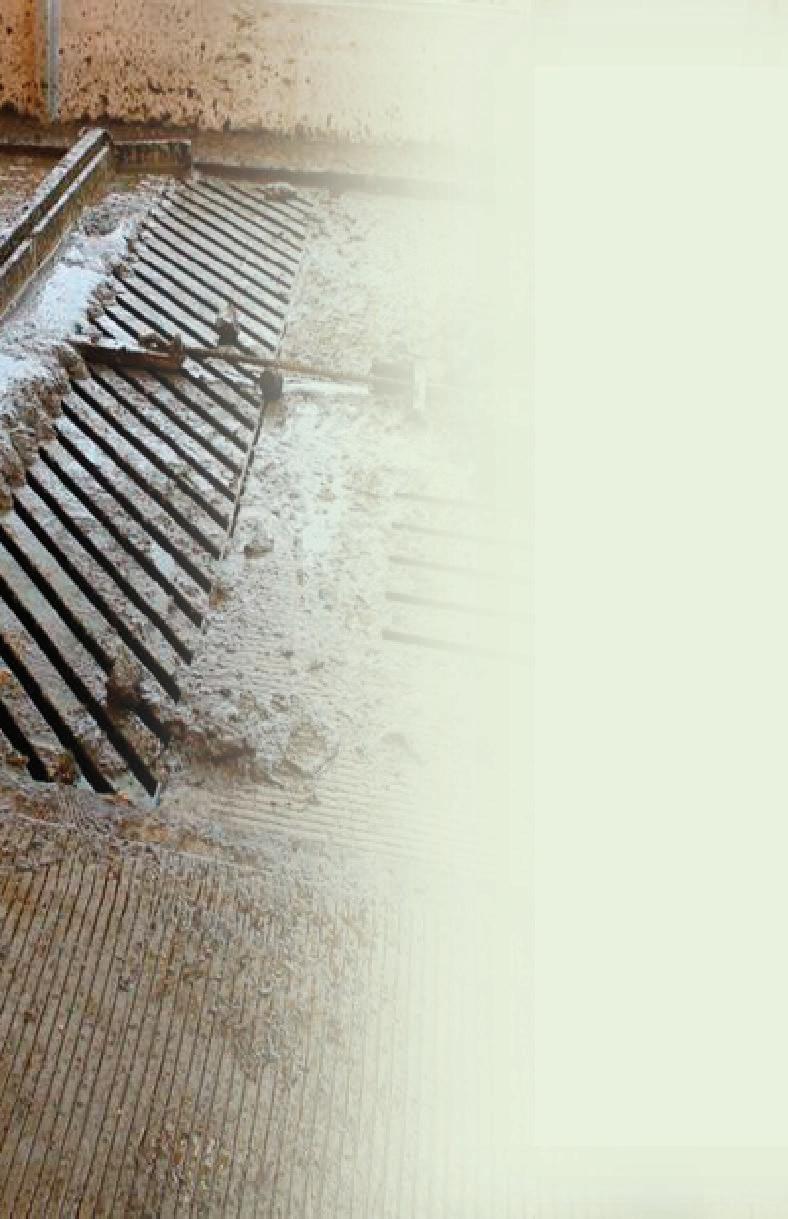


45 DECEMBER 2023 Rope Scraper Key features of the Control System ✓ Future proof expandable up to 3 individual systems (6 winch) ✓ Individual me clock and switching for each winch system ✓ Selectable shunt program for robo c milking ✓ Inbuilt bedding cycle Benefits of the Rope System Ideal for sand laden slurry Lowest cost replacement parts Rope replacement cost £3 per metre Easy touch screen control 5 years extended warranty available Manufacturing and installing rope scrapers for over 20 years Feature rich control Time control Winch control Cow care SYSTEMS Innovators in Dairy Farming Wales/Midlands/S. England Fred - 07762800149 N. Ireland/ R.O.I John - 07732348225 Scotland/N. England 07591833853 Andrew - 07803124235 info@cowcaresystems.com

Impending rules, which are part of Defra’s clean air strategy to reduce ammonia emissions, mean that some producers will have to invest in slurry storage covers and nd splash plate alternatives.
Terry Baker of Tramspread says there are pros and cons to the three main slurry store cover types, with the cheapest option being a series of free- oating, hexagon-shaped tiles.
He says: “ is will give a 95% reduction in emissions and can be installed without the need for emptying out the slurry beforehand.
“A er mixing the material to eliminate any crust, the tiles are simply poured on the surface, where they organise themselves naturally without any physical linkage.
“Costing about £21 per sq.m, the tiles are made of recycled polypropylene and measure 228mm in diameter. ey have a life expectancy of 25 years and they can be sold on, if required. During slurry mixing, they can be moved aside and the tiles will join back up a er extraction.
“Hexagon tiles are particularly useful for covering awkward-shaped storage facilities.”
However, he says that a possible downside is that they let in rainwater, adding to storage capacity requirement and increasing handling
All slurry storage in England must be covered by 2027 and slurry splash plates are due to be phased out by 2025, so what are the options to help producers meet the new obligations? Wendy Short reports.
Improving farm slurry infrastructure
volumes for spreading.
Meanwhile, oating fabric covers are made from polyester fabric with a plastic coating and cost about £30 per sq.m.
He says: “Floating covers provide a close to 100 per cent emissions reduction, but the store must be emptied and cleaned out before installation.
“While they are e cient at keeping out rainwater, it will need to be pumped away from the surface on a regular basis.
“ e covers can come with hatches, but depending on the storage design it may not always be easy to move the stirrer in a regular pa ern around the area. is can result in an uneven mix.”
e most expensive slurry

storage cover option is the self-supporting type, which can only be used for circular tanks. e wigwam-style UPVC cover is supported by a central wooden pole and anchored with ratchet straps. Mr Baker says
this option has an approximate cost of £50-£60 per sq.m.
A bag tank provides an alternative to purchasing a cover for an existing store.
Mr Baker says: “ e liner and cover are formed out of a single piece of woven polyester fabric, with a plastic coating on either side.
Cost-effective
“A bag is more cost-e ective compared with a steel or concrete construction, with prices at roughly £30 - £50 per sq.m.
“Bag tanks can have an integral ed stirrer and they may not always require planning permission. e design is unobtrusive, so they may suit farms in National Parks or Areas

DECEMBER 2023 46
Terry Baker
There are a numbers of pros and cons to consider when looking at dribble bar and trailing shoe systems PICTURE : Tim Scrivener
Slurry separation will [...] reduce the storage requirements by roughly 25%
TERRY BAKER
of Outstanding Natural Beauty.”
Mr Baker estimates that only about 10% of dairy farmers currently separate their cow slurry, but he says the practice is a great asset to any slurry management system.
Splash bar alternatives
He also says it is likely to become even more important when producers who handle their own livestock slurry spreading turn to two of the main splash bar alternatives:
Options for replacing splash plates
JTerry Baker of Tramspread says there are pros and cons to consider when looking at bar and trailing shoe systems.
“Dribble bar maintenance is minimal as the equipment does not have ground-wearing parts, but trailing shoe systems are generally more appropriate for grassland. They limit contamination because they place the slurry under the leaf, so the cows can be turned out within a shorter time compared with dribble bars,” he says.
“One disadvantage of the trailing shoe is its tendency to flick up stones on to the land surface and this can
dribble bars and trailing shoe applicators.
“Slurry separation will not only reduce the storage requirement by roughly 25%,
lead to damage to the forage harvester and other production kit. Decisions on how to move away from splash plates will depend on individual farm situations and, at present, most slurry tankers will come with them fitted as standard, unless otherwise specified.”
He says he strongly advises the addition of a macerator for handling liquids with a dry matter content higher than dirty water or light pig slurry. One macerator will handle the material for a spreading width of up to 12 metres, he says, with a twin macerator required for anything above.
“Pan macerators are cheaper, but they are not as flexible as the vertical design as the pan type must be full of liquid to give an even spread. This is not always easy to achieve on undulating farmland, because gravity will cause the material to shift from one side of the pan to the other,” says Mr Baker.
“Pan macerators are also unsuitable for dribble bar widths above 6-7m. My recommendation for vertical macerators is to use a single piece of kit for a spreading width of 12m and add a second macerator for wider spreading.”
the process will also greatly improve handling e ciency and spreading accuracy, thereby making be er use of slurry nutrients. On farms where slurry is distributed via an umbilical system, separation facilitates pumping and permits spreading at a greater distance from the source,” says Mr Baker.















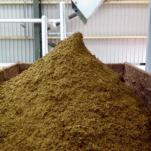










DECEMBER 2023 47 MUCK AND SLURRY Spread-a-Bale ® VISIT OUR WEBSITE FOR MORE INFO WWW.SPREAD-A-BALE.COM T: 01244 394258 - Office M: Dave Bull 07904 899289 M: Stuart Henry 07903 012054 (North Eng & Scot) E: sales@spread-a-bale.com Tube You FOLLOW US MADE IN GREAT BRITAIN DUST BUSTER MINIMISING DUST GENERATION Hard, wet, dusty bales? Spread-a Bale spreads one bale in less than one minute with one loader and minimal dust. THE Optional HD available providing 70% more torque MIDI HR Spreads upto 15m 10-15m 1-2m SLURRY INFRASTRUCTURE GRANT ROUND 2 - ENGLAND On the second round of the grant, you can get a contibution towards a slurry separator and gantry as part of your project to increase storage capacity. Separators can make slurry easier to store, move around the farm and apply in line with a nutrient management plan. You can apply for this grant from November 2023 www.storthmachinery.co.uk Tel: 01524 781900
Dry-Matter Gantries
Grants to help improve slurry management and reduce emissions have been offered in 2023 and it is expected further incentives will be available in 2024. Dairy Farmer takes a closer look at what grants will be available to farmers.
A closer look at available grants
It is no secret that the Government wants all slurry covered by 2027 to lower agricultural emissions and there are some generous grants being offered to help farms reach this target.
The Slurry Infrastructure Grant and the Farming Equipment and Technology Fund (FETF) currently offer money towards storage, mixers and separators which are all vital to managing slurry effectively.
Grants aimed at extending storage to six months, based on livestock numbers and further grants to cover, mix and separate slurry, are currently available with up to 50% of the cost being offered.
Mixing covered slurry helps to keep it homogeneous, while separation can remove up to 30% of solids.
Together this will reduce the amount of storage needed and enable slurry to be pumped
50%
Government grants can halve the cost of some slurry equipment.
longer distances more efficiently.
The Slurry Infrastructure Grant only applies to farms with pigs, beef or dairy cattle.
It includes contributions to lagoons, steel, concrete and bag tanks.
It will also contribute to covering storage that has been extended or newly installed. This can be with floating or fixed covers.
Bag tanks are an economical and easy way to expand slurry storage. To qualify for grant funding a bag tank must hold at least 2,500 cubic metres.
A significant benefit is that bag tanks can be located almost anywhere and rarely require planning permission.
Smaller bag tanks can also act as nurse tanks to improve the scope of umbilical application, which has the added benefit of reducing soil compaction.
For farms expanding storage to meet the six-month target, a floating cover is a cost-effective way to meet the impending 2027 legislation.
While the floating cover product, Hexacover, is not listed

among the items available for a grant, it is a more cost-effective option than a fixed cover and will fit any size and shape of slurry store.
The Farming Equipment and Technology Fund (FETF) includes a list of slurry equipment that qualifies for grant funding.
There is an emphasis on reducing emissions during slurry application and a reference to the planned ban of splash plates in 2025.
Applicators
Dribble bar applicators with a working width of at least 6 metres and an expected purchase price of £10,500 will be met with £4,200 of grant funding. Larger dribble bars with a working width of at least 10 metres and an estimated cost of £13,500 will qualify for £5,400.
Trailing shoe and injection systems qualify for a more generous 50% grant with the Government estimating that a 6 metre injection system will cost £17,968 and the same sized trailing shoe £14,750.
There is a further grant for larger trailing shoe systems with
working widths of more than 8 metres. Umbilical application is favoured as a more sustainable option as it relieves the impact of heavy machinery on soil and reduces ground compaction.
Umbilical hose, hose reelers, mobile slurry choppers and remote controls for engine driven pumps, are all covered by the grant with up to 50% contribution.
To improve accuracy, accountability and soil health, slurry flow metres are items that qualify for 50% funding based on an estimated cost of £4,267.
The hope is that more operators will test soil and slurry to establish the optimum volume to apply.
While the investments required to meet Government targets will be significant for all dairy farms, it is hoped that by offering these grants, more sustainable agricultural working practices will be adopted.
However, with a general election expected in 2024 there is no guarantee the grants will be extended and those acting quickly may benefit from a more generous contribution.
DECEMBER 2023 48
MUCK AND SLURRY
The Slurry Infrastructure Grant includes contributions to lagoons, steel, concrete and bag tanks.
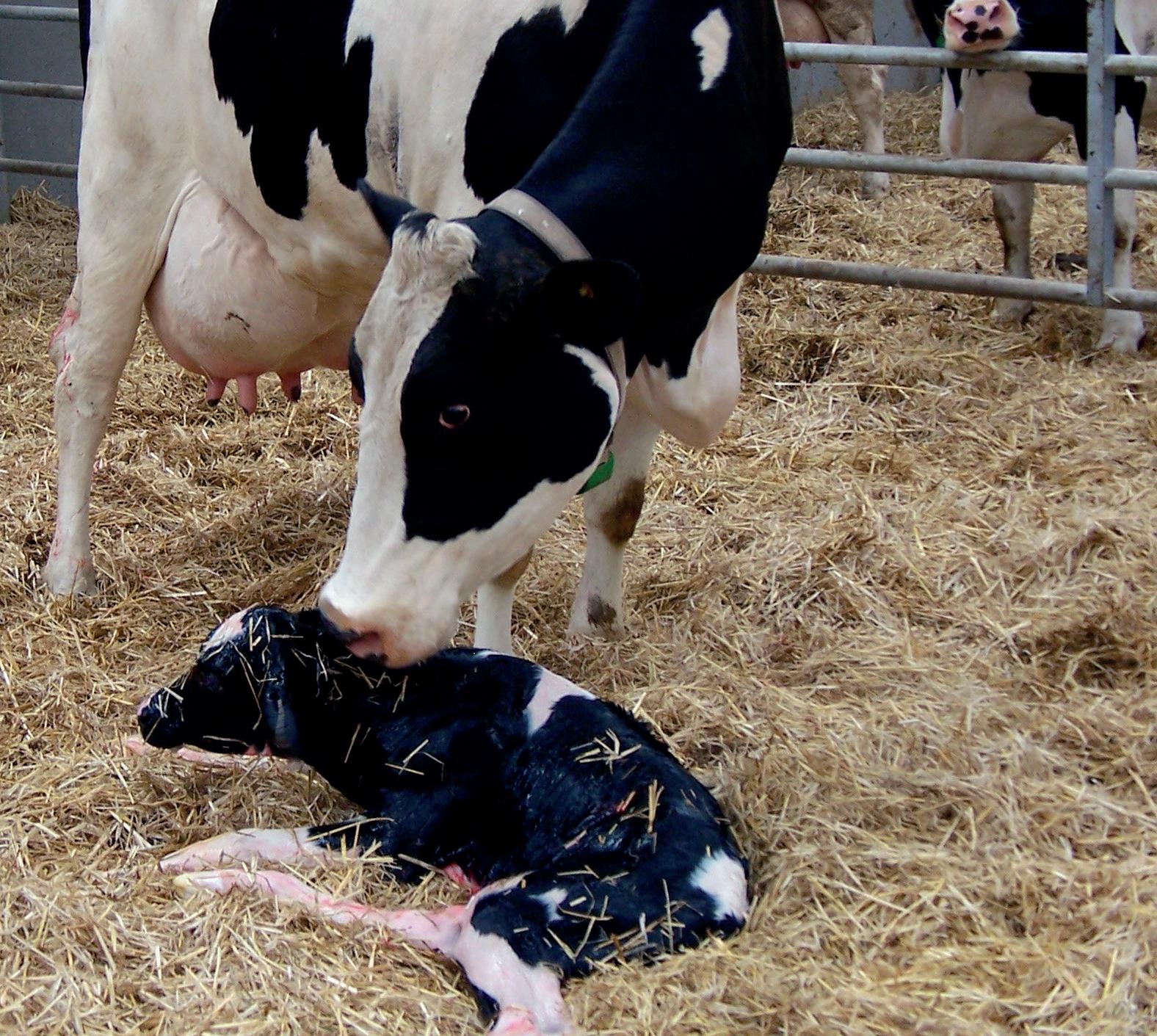

























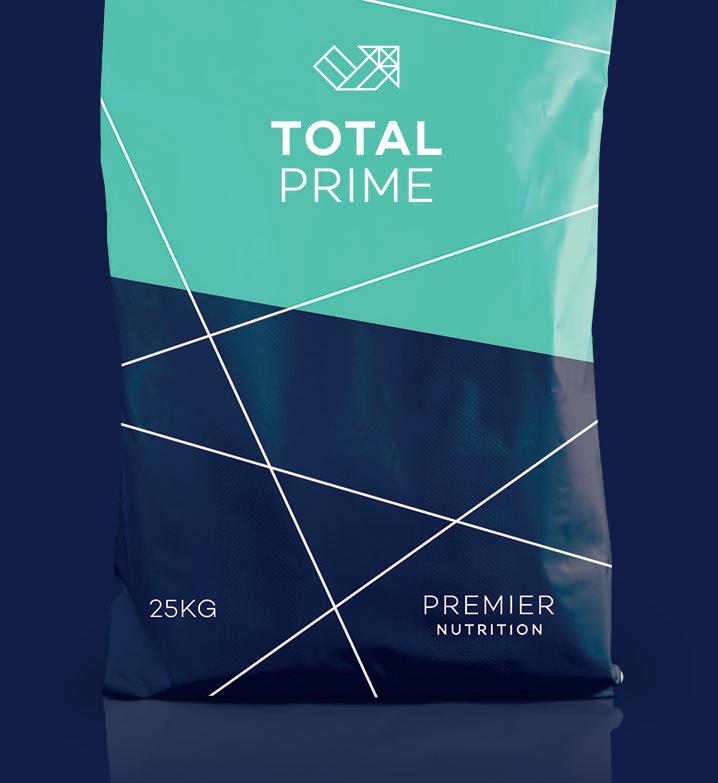


49 DECEMBER 2023
MUCK AND SLURRY
Scraping times have been reduced to one-third at Glaspant Farm since installing a Lely Discovery 120 Collector.
Over the past ve years, the prevalence of digital dermatitis has reduced from 10% to 1% a er an automatic footbath was installed to enable easy routine foot bathing.
e Lely Discovery 120 Collector, which was added in January, has further improved foot hygiene, says Llion Davies. Llion milks 200 cows near Newcastle Emlyn, Ceredigion, alongside his parents, Geraint and Ennis, and wife, Annwenn, who has worked as a farm vet.
With the family completing most of the daily tasks themselves, they have tried to keep their system simple to reduce pressure on labour.
Cows are grazed for eight months of the year, and the aim is to produce at least half of their milk from forage to keep costs low.
Currently, 3,900 litres are produced from forage, with cows yielding 7,500 litres at 4.6% fat and 3.55% protein.
Previously, the Davies family fed a total mixed ration, but switched to using an out-of-parlour feeder a er having issues with starlings. ey take three cuts of silage annually, and chopped silage is fed in bunkers twice daily.
Cows receive a at rate of concentrate, both in the parlour and out-of-parlour feeders using
The robot has reduced pressure at our busiest time of the day, which has been really valuable
LLION DAVIES
Installing an automated slurry robot has helped one Welsh dairy save labour and improve cow foot health. Dairy Farmer reports.
Labour and health benefits of automated slurry robots


automatic identi cation, until they are con rmed in-calf, and then they are fed to yield.
“Fresh cows are ge ing 11kg of concentrate – 6kg in the parlour and 5kg in the out-of-parlour feeders. Total concentrate fed per cow is approximately 1.8 tonnes per year,” says Llion.
Dry cows receive big bale haylage cut from grass elds that do not receive slurry, which is low in potassium to prevent milk fever.
A er completing his degree in Agricultural Engineering at Harper Adams in 2008, Llion returned home to farm alongside his parents, and since then both the area
farmed and cow numbers have doubled.
To accommodate this, two indoor silage pits were converted into cubicle sheds. is conversion was cost-e ective, and they also erected a new silage pit giving them an extra 10 of space across the front of the clamp face, with more room away from the livestock buildings for tractors to turn.
However, the conversion was not straightforward, admits Llion.
He says: “ ere are several corners we could not scrape using the tractor, and although we have automatic scrapers in some
passages, we could not see them working in every shed.”
Cleanliness
e Davies family are meticulous about cleanliness and were cleaning hard-to-reach corners with a handheld squeegee.
However, this was timeconsuming during the housed period.
Five years ago, digital dermatitis peaked at 10% and, following a consultation with vet Sara Pederson, the decision was made to ‘blitz’ treat infected animals.
is involved washing all four feet in the parlour and applying
DECEMBER 2023 50
Llion and Annwenn Davies, with their children Cerys (left, age four) and Heledd (right, age 18 months).


Terramycin spray to feet for ve consecutive milkings. At the same time, they installed an automatic footbath, and since then all milking cows walk through a formalin footbath three times a week.
A professional foot trimmer visits the farm every four weeks and carries out routine trimming of
cows 90 to 120 days post-calving and before drying o .
Discovery 120 Collector
e nal piece of the puzzle, and most recent investment, was a Discovery 120 Collector. is has helped improve foot cleanliness and reduce infection pressure, says Llion.

• Reduce storage requirement by up to 25%
• Less mixing
• Pumps easier
• Improves applicator distribution
• Improves nutrient application
• A great slurry storage management tool
e purchase cost was £29,000, and a contribution of £9,460 was made towards it by the Welsh Government E ciency Small Grant scheme.
e Collector was easily retro tted into the existing buildings and did not require tracks on the shed oor, says Llion. It is programmed to do 32

• Simple installation
• Fits any store, of any size and shape
• Up to 99% surface coverage
• Up to 96% odour and emission suppression
• Made from recycled plastics
• Solid construction – cannot puncture and sink
• Allows the use of stirrers
routes across ve cubicle sheds and runs for 11.5 hours daily.
e Collector sprays water from the front and back of the machine to improve cleanliness.
e Davies family installed a water harvesting tank to feed it and have been impressed at its low running cost – it uses just 3kW of electricity daily,

• 25 year expected life with no ongoing maintenance costs •
•
•
•
•

DECEMBER 2023 51
Available in widths from 6 metres to 24 metres
Single or twin macerators
Left and right hand geometric control
Compatible with
meters
slurry monitors
•
•
flow
and
Automatic transport latches with safety lock
Front mounted swinging arm allows full
of pick-up hitch
use
All applicators can be tractor or tanker mounted
DIGESTATE AND SLURRY MANAGEMENT T: +44 (0)1449 766133 E: info@tramspread.co.uk www.tramspread.co.uk
FOR HELP MANAGING
Stallkamp Separators Floating Hexacover Suffolk Range Dribble Bars
SEPARATE: STORE: SPREAD
CONTACT TRAMSPREAD TODAY
YOUR SLURRY
The Collector is programmed to do 32 routes across five cubicle sheds and runs for 11.5 hours daily.
MUCK AND SLURRY

which costs them 51p/day.
“When you get cold days in the winter, the muck can go dry. e tractor and scraper used to smear it, but the water-spraying function keeps the oor moist, so you get a much cleaner result,” says Llion.
In addition, grooving the concrete has improved cow condence when bulling and also reduced slippages, he adds.
Heifers are weighed regularly and are grouped by weight. ey are served once they reach 340kg
(55% of mature cow weight, which is 620kg), with a target average age at rst calving of 24 months.
Heifers receive one service of sexed semen before being mated with a Hereford bull.
Cows receive one straw of sexed semen followed by beef fertility, plus semen for any repeat services.
Llion believes this, alongside robust cow health, is contributing to their strong rolling pregnancy rate of 28.9%.
“It has been an accumulation
e ect with each small change,” he says.
Scraping
As well as the improvements in foot health, the installation of the Collector has reduced scraping times from 1.5 hours to 25 minutes, says Llion, who now only scrapes the collecting yard and outdoor loa ng area.
During milking, beds are cleaned, scraping is carried out and feeding is completed by one labour
Farm facts
rFarming 162 hectares (400 acres): 73ha (180 acres) owned and the rest rented
rMilking 200 Holstein/ Friesian cows
rAll-year-round calving with an autumn bias
rYielding 7,500 litres at 4.6% fat and 3.55% protein
rMilking twice daily through a 14/28 Herringbone
Swingover parlour
rSelling milk to Leprino Foods
rGrazing cows from March to October
rSelling Hereford beef
calves finished and British Blues as stores
rEmploy one part-time milker for three milkings per week
unit. Clean sawdust is applied to beds three times per week.
Llion says: “ e robot has reduced pressure at our busiest time of the day, which has been really valuable.”
It has also made milking easier, he adds.
He says: “ e beds are cleaner because there is less slurry for the cows to walk through. As a result, there is less muck on the cows’ udders, which has saved time prewiping cows during milking.”

Over the past five years, the prevalence of digital dermatitis has reduced from 10% to 1% after an automatic footbath was installed.

DECEMBER 2023 52
The Lely Discovery 120 Collector has further improved foot hygiene, says Llion Davies.




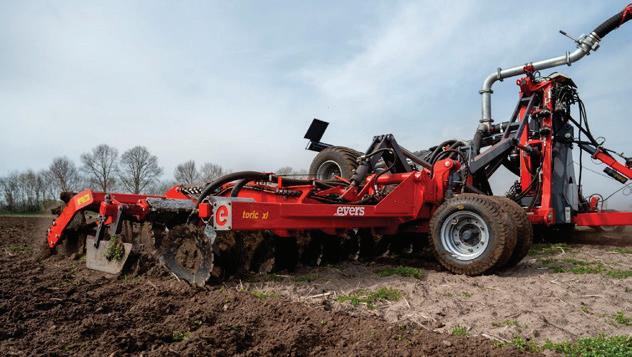




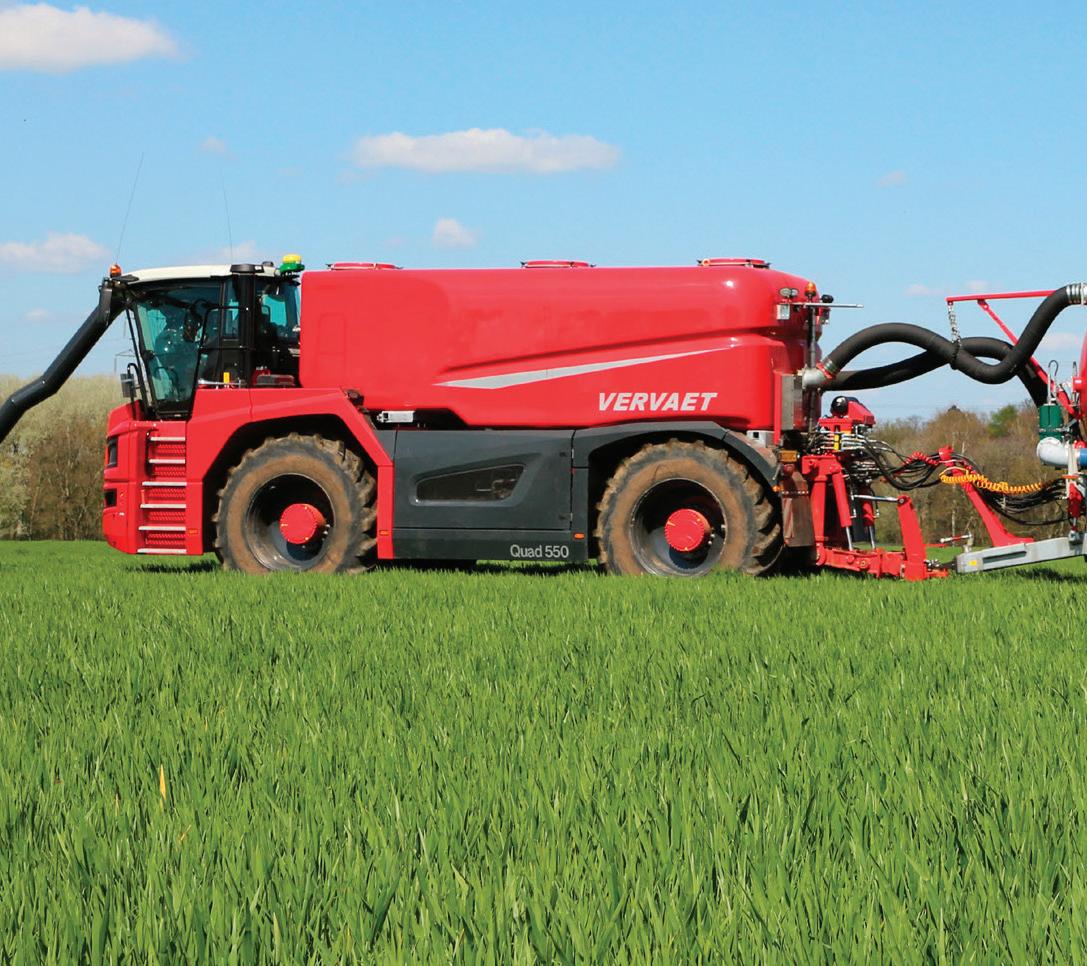
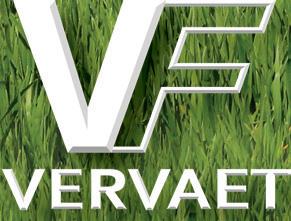

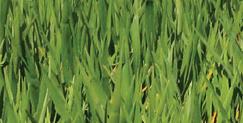



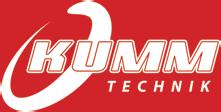


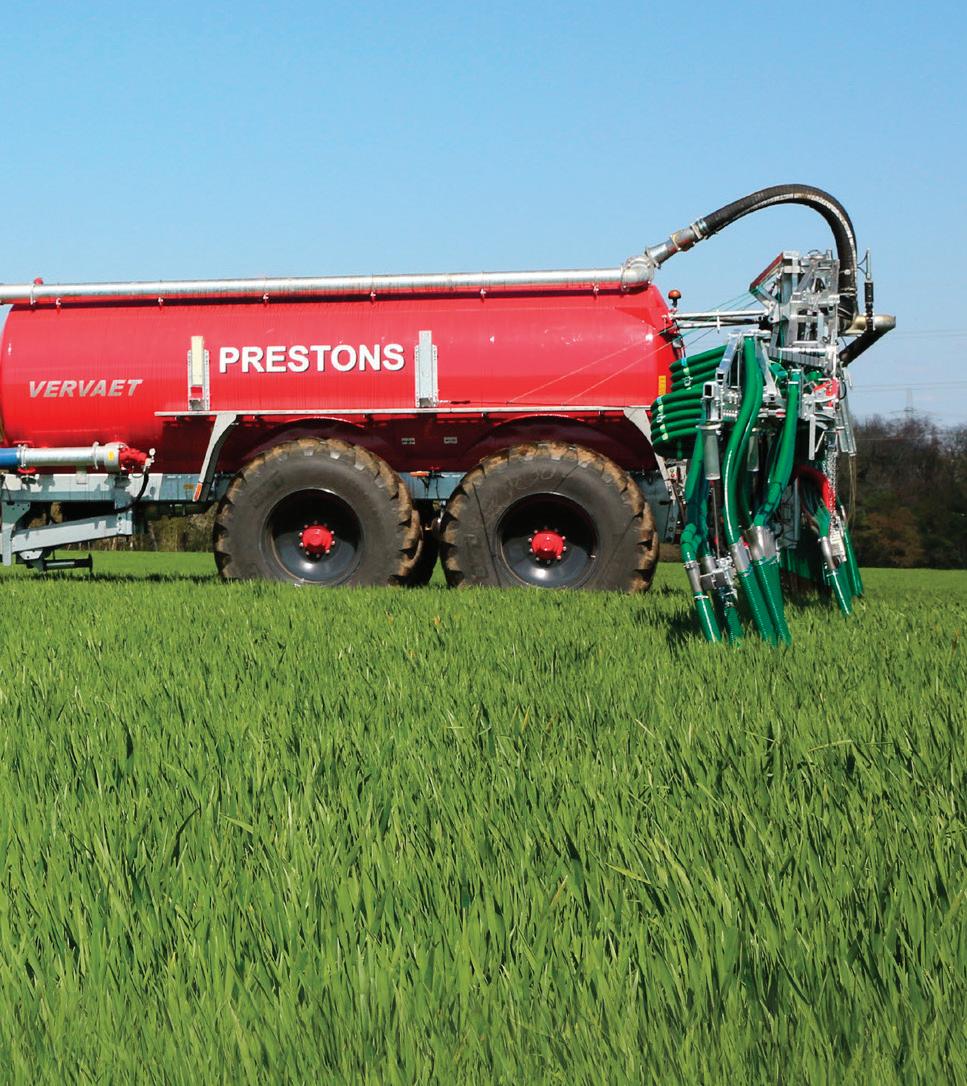




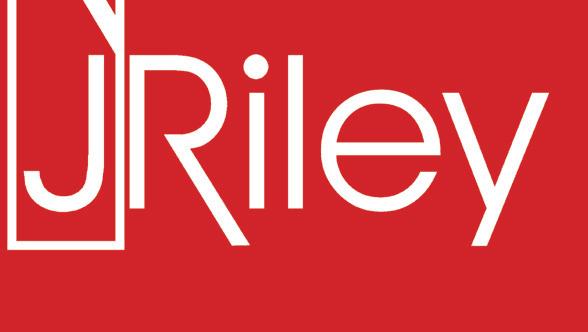


J Riley Beet Harvesters (UK) Ltd Church Farm, Attlebridge, Norwich NR9 5ST VERVAET APPLICATORS: The range from the experts - Hydro Trike - 16m³ - Hydro Trike XL - 20m³ - Quad 550 - 22m³ - Quad XL - up to 40m³ Demonstrations available, please contact Sion Williams on 07919 214788 New slurry machinery ranges from J Riley Agri • 01603 262526 • www.jrileyagri.co.uk
Installing reed beds to capture farmyard run-off has steadily increased as farmers work to protect their waterways from pollution. Sarah Alderton reports.
Reed beds help offer solution to reducing run-off pollution risk
Reed beds provide a natural solution for wastewater management, including farmyard run-o . ey o er farmers peace of mind that they are doing all they can to protect their local waterways.
Reed bed consultant Melvyn Ru er says he has seen a steady rise in the number of farmers interested in reed beds. He has clients ranging from livestock farmers capturing farmyard run-o to a potato grower using them to lter wastewater from potato washings and then reusing the clean water for washing his crop. Reed beds provide a natural ltration system that treats and improves water quality before discharging the water into the environment.
e reeds transport oxygen to the soil through their roots, creating an aerobic environment. is enables the bacteria, fungi and micro-organisms in the soil to break down, digest and clean the wastewater to the point where it can be safely discharged to an existing water course or to a soakaway or land drain.
e out ow from the reed bed has 99% of nitrates, ammonia and phosphates removed.
For reed beds to operate e ectively, any solids need to be separated from the liquid, which can be done by installing a tank.
Typically, a 100sq.m vertical reed bed – which is made up of two beds measuring 10 metres by 5m –will clean up 8,000 litres of run-o a day. is will require a tank or a


series of tanks capable of holding 16-20,000 litres.
Mr Ru er says: “Having a large enough tank to store wastewater will help separate the solids from the liquid and ensure that the water can gradually ow into the reed bed rather than all at once.
“Water needs to feed into reed beds at a regular rate. Imagine having all your cups of tea for the next week o ered to you at once; you would struggle to drink them all. Reed beds are the same. ey are living systems, so they need a ‘li le and o en’ approach.
“When reed beds are well looked a er, they have no reason not to keep on going. I know of beds that are 120 years old and still work.”
For situations where a direct discharge to a water course is not
allowed, a living soakaway can be established instead. Mr Ru er installs living soakaways as standard for all reed bed installations.
Living soakaways
“Living soakaways contain willow and iris to encourage evaporation and allow controlled dissipation of the water to the ground. e use of living soakaways allows for nal discharge to be to land and not directly to fresh water. is meets with Environment Agency requirements,” he adds.
Reed beds can be planted anywhere, but for farmyard run-o Mr Ru er recommends establishing them as close to the yard as possible.
When siting a reed bed, there should be a gradient from the tank to the reed bed of at least 1.6m,
allowing gravity to do the work. However, where that is not possible, a pump can be added to the tank or a series of tanks to pump the water in.
Mr Ru er says: “O en farmers have unused land next to their yard where reed beds can slot quite nicely. An outlet pipe is then situated in the middle of the storage tank, allowing the dirty water to move into the reed bed slowly. e sludge sinks to the bo om of the tank, which will need emptying periodically like a waste treatment plant would.”
For a 100sq.m vertical reed bed, two 10m by 5m pits – which are 1m deep – are dug out and then lled with gravel and soil. Some companies also use a mixture of sand and gravel. For this size, approximately
DECEMBER 2023 54
MUCK AND SLURRY
Reed beds provide a natural filtration system that treats and improves water quality before discharging the water into the environment.
When reed beds are well looked after, they have no reason not to keep going
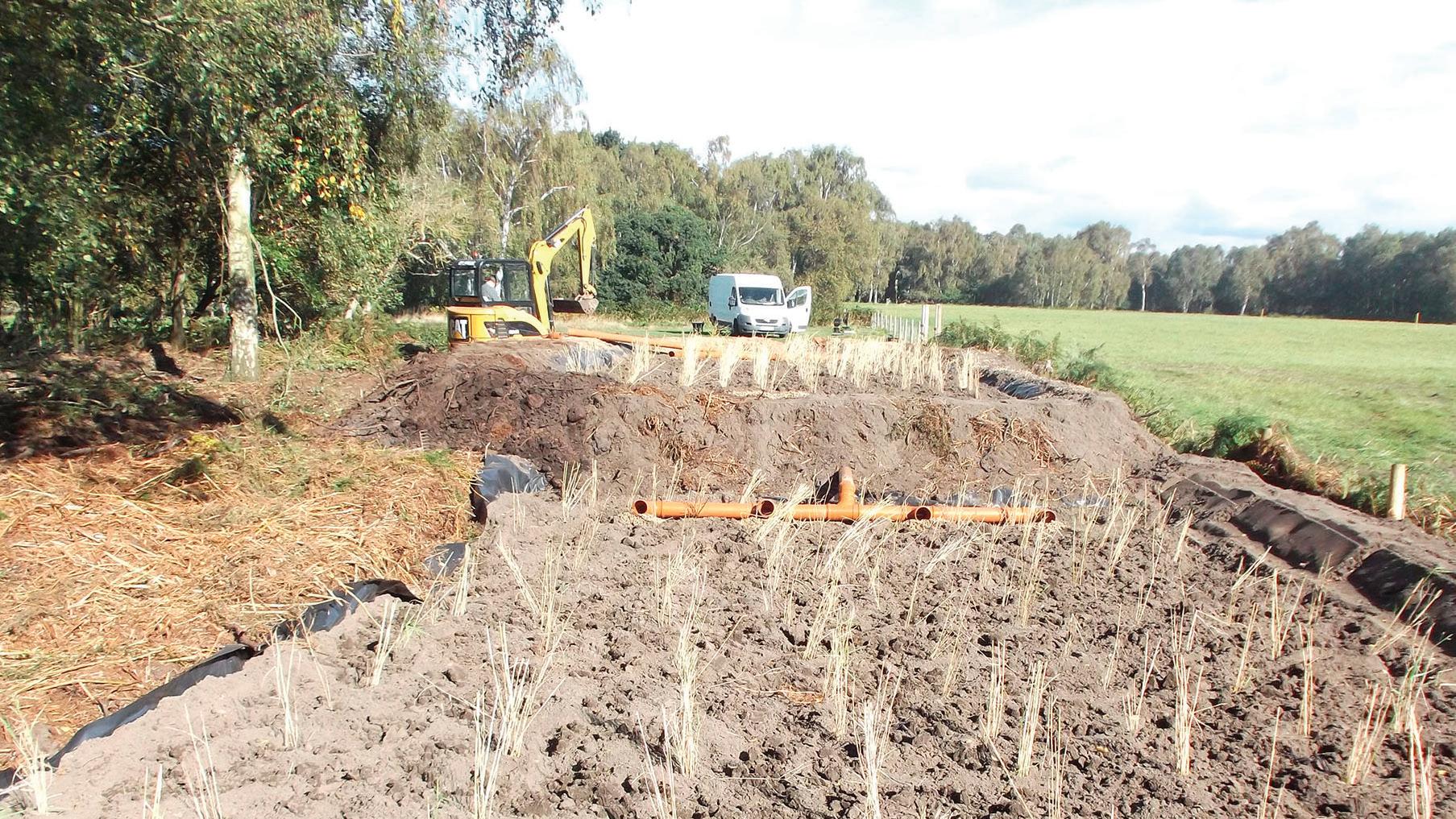
For a 100sq.m reed bed, approximately 40 tonnes of soil, 20t of gravel and about 600 reed plants would be required.

40 tonnes of soil, 20t of gravel and about 600 reed plants would be required.
Costs
Mr Ru er says the costs vary depending on how much work the farmer would like to do themselves. However, for a complete installation, prices start at about £10,000 for 100sq.m.
Maintenance is essential to ensure the system works e ciently. It is important to ensure only liquid goes
into the bed, as solid and sludge can smother the reeds and stop them from working.
Likewise, any fats in the liquid, such as milk liquids from parlour washing, could also cause the system not to work, as the microbes in the soil cannot break down fat.
Mr Ru er says: “Fats will ruin everything – they must be separated.”
Essential weeding is also vital until the reed plants are established. Making sure the reed beds are also watered, especially in the rst few


weeks of planting, is a must. erefore, Mr Ru er recommends establishing reed beds early in the year before the weather warms up.
Maintenance
“Reed beds can operate in hot conditions and cold weather. However, in hot weather, they need to stay moist and may need to be watered to prevent the reeds from dying. A er the second year’s growth, these problems are reduced,” he says. ey may also need occasionally
aerating with a garden fork over the top three inches of soil to maintain porosity, especially a er hard frosts or rain.
Mr Ru er adds: “My reedbeds have been shown to continue to work at -30degC and 5m deep in snow. e problems reedbeds face are too much water, too li le water and being covered in gunk.
“However, when they are well looked a er they will continue going and provide peace of mind to farmers using them.”


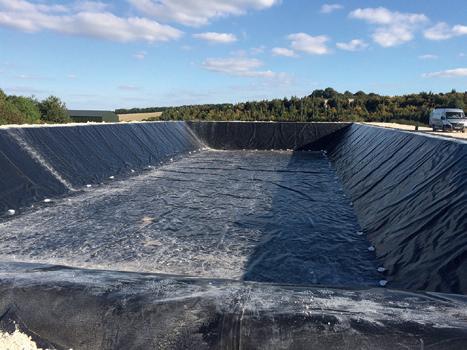





DECEMBER 2023 55 1 Quay Business Centre, Harvard Court, Warrington WA2 8LT Tel: 01925 629393 Email: agri@huesker.co.uk www.huesker.co.uk Manure Storage Other products in our portfolio include: Curtains & Ventilation • Doors Manure Lagoons • Weatherproof Silo Covers Flexotank Silage Safe System
MELVYN RUTTER
YOUR DEPENDABLE PARTNER FOR SLURRY STORAGE SOLUTIONS enquiries@enviroseal.co.uk t: 01695 228626 www.enviroseal.co.uk SLURRY LAGOON FLOATING COVERS Keeps rainwater out of slurry Reduces odour from lagoons Covers comply with EA and SSAFO legislation SLURRY LAGOON LINERS Comprehensive 25 year warranty Materials meet EA and SEPA requirements Installed and tested by certified technicians Enviroseal provide a complete range of products for slurry storage


Installing solar panels to generate electricity for use in a dairy business has become an attractive proposition with the current increase in energy costs. Toby Whatley speaks to Richard Collins, of Caplor Energy, for advice on solar PV systems.
Large building roofs and expansive slurry lagoons can provide the area for ed or oating photovoltaic (PV) solar panels, and the high and repetitive demand for electricity can position dairy businesses as ideal candidates for solar generation and ba ery charging systems.
Herefordshire-based Caplor Energy has been providing systems to the renewable energy sector for 15 years.
Established on the family farm, the rm provides systems for domestic, commercial and agricultural businesses.
Head of business development and local farmer Richard Collins gives some advice on the types of systems and how to a ain the most bene t to a dairy farming business.
He says: “A farm using robots will have a di erent energy consumption pro le to a farm which milks once a day or has a large rotary parlour.
“ e time of milking and electricity demand during milking will help to decide whether ba ery storage will bene t the
Bottling sunshine
business, what equipment is used and when this is used.”
To achieve the best return for the business, electrical energy should be consumed as it is generated. is removes the need for ba ery storage and prevents over-production from being exported to the national grid.
“ e biggest bene t of solar PV is when you can generate and use your own solar energy and understanding your usage pro le on-site is key to this.
“
ere are export tari s available, but these do not o er the same returns as using the energy on-site yourself.”
Understanding energy demand
JHow individual farms use energy is important for the size and type of system used. How this information is collected will vary depending on the energy distribution through the site and if any other businesses – such as diversifications – are utilising
the supply. Initially, your energy supplier may be able to offer half-hour meter readings.
Readings
Regular, time-recorded readings are typically the most accurate data available and can be plotted to
Continues over the page...
Changes to the timing of high energy use systems depending on the time of year can bring advantages to utilising the maximum solar energy directly as it is generated.
Richard says: “If you use an ice bank machine and electricity for heating up hot water which is normally operated during the lower p/kWh rate overnight, these can be used during the daytime during the higher solar generation months.
“There is smart control technology which allows this to be done automatically so excess solar energy produced can be diverted to high-demand items.”
understand the cyclic use of energy over time. Alternatively, taking manual meter readings at the same times throughout the day, and before, during and after milking, can give an idea of the daily and peak energy consumption.
DECEMBER 2023 56 MACHINERY
Large building roofs and a high electrical demand place dairy businesses in a strong position to utilise solar PV generation.

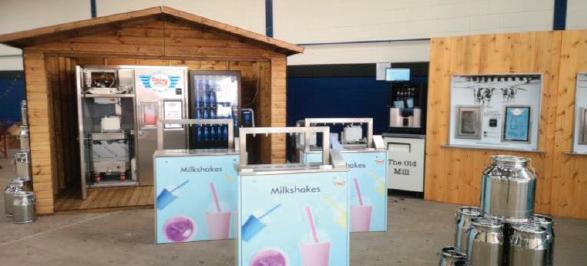


Fresh, local, sustainable British Built Milk Vending machines
Since developing the first daisy vending machine in 2018 we have continued to evolve and expand our product range which now includes small countertop pergals right up to our 400 LT milk and milk shake vending machines.
Building our own machines gives us the distinct advantage of being able to build a truly bespoke package for you and your business.
For our full range visit our websites, or for more information, drop us an email or give us a call
01460 455555 / info@daisyvending com
57 DECEMBER 2023
MACHINERY
Use of battery storage systems
JDepending on the size of the solar array and the on-site energy demands, a battery storage system can be utilised to provide stored energy at times of peak demand when solar intensity is at its lowest.
The battery market is changing quickly with increasing capacity and reducing cost as a reflection of their increased use in cars and vans.
Generally, two battery types are available – lead-acid and lithium-ion. Lead systems are physically larger and cheaper, but are less flexible in charging and discharging and will lose their charge capacity over a shorter time period.
Lithium-ion systems are the most common solar PV systems, with higher energy density and a smaller footprint. The units are more expensive, but are suited to flexible charging and discharging and are more scalable as
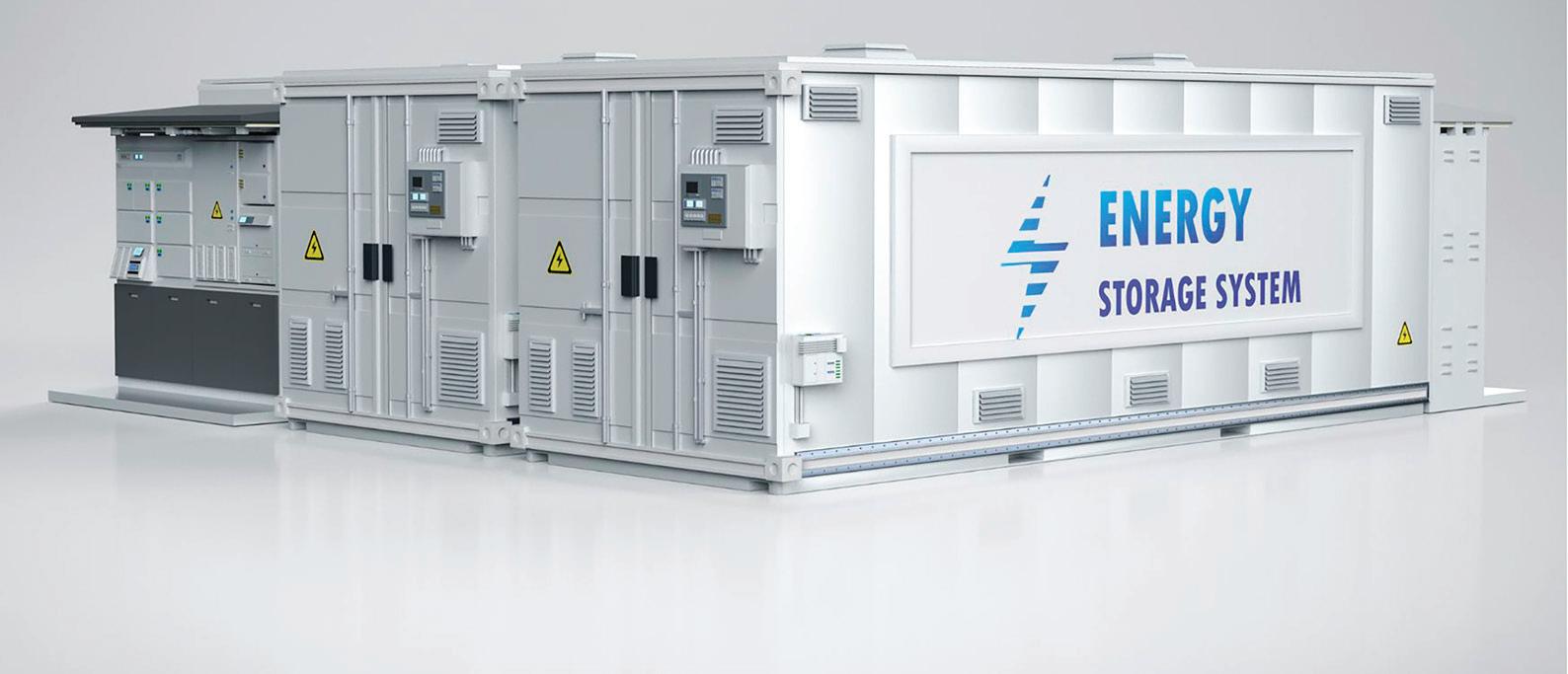
storage demands increase. With increased interest and use of batteries worldwide, significant investment is being put into battery technology, which has created a rapidly changing marketplace.
R&D
Regulations and planning
JPrior to installing a green electricity generation system, users must carry out a District Network Operator (DNO) application. This process
Richard says: “There is currently a large amount of R&D being carried out, with a number of manufacturers field testing is designed to identify the grid capacity and energy constraints within the locality of the proposed system.
Richard says: “This application
salt water and sodium batteries among other technologies.
“The battery storage market is a very rapidly growing sector and we will see new innovative products coming to market over the next few years.”
Adding batteries to a system can offer the ability for some businesses to become self-sufficient in energy consumption, Richard advises the future cost of batteries is should be carried out by the installation company or individual who has suitable industry and product knowledge as it can be a very complex application with
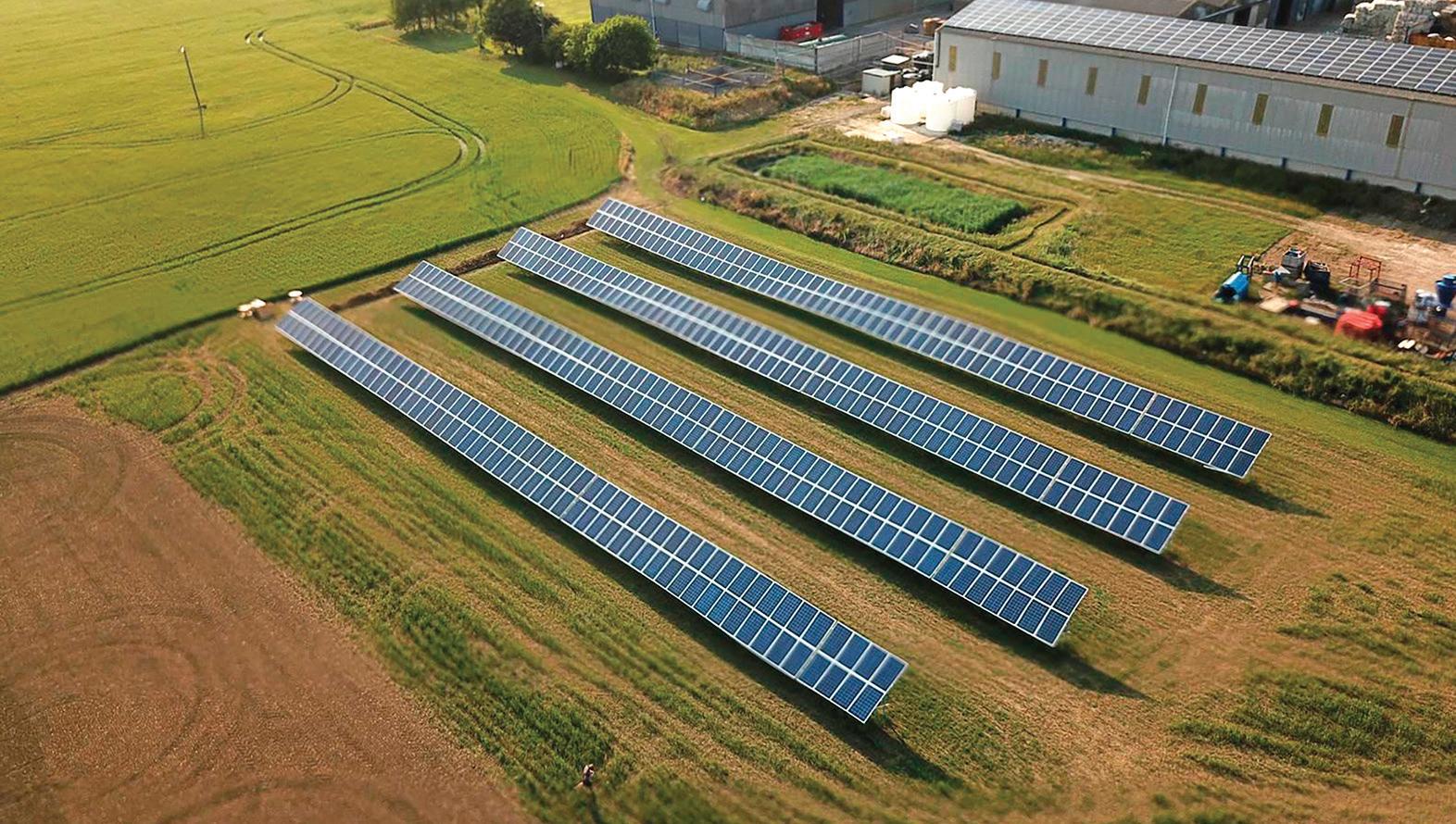

Ground-mounted systems are quicker and cheaper to install but will require planning.
likely to reduce, reflecting the position of many new technologies which are introduced to the market.
He says: “Batteries currently add a large cost to installations, but as the technology develops we expect to see these costs reduce with sodium batteries being developed. This should result in significant price reductions in production costs.” negotiation possibly required to get a suitable outcome.”
A DNO is required to allow an energy generation’s surplus power to be safely exported back to the grid without exceeding the capacity of the local distribution network.
Planning for solar systems typically falls under the provision of permitted development. However, ground-mounted arrays or some larger battery storage systems may require a full planning application.
In addition, Richard advises additional site-specific circumstances may also change the permissions required: “If you farm in an Area Of Outstanding Natural Beauty or if you are in the curtilage of a listed building, planning permission and other approvals may be required.”
DECEMBER 2023 58
Battery systems range in size and capacity, with some units fitted within shipping containers.
System costs and return on investment
JThe individual installation and setup costs for each PV system can vary significantly due to the individual infrastructure requirements of each site.
Variations include factors such as the higher installation cost of panels fitted to roofs compared to ground positioned, cabling, inverter type and capacity, which will change depending on whether the system has been built to accommodate batteries, or users looking to add batteries to an existing array may require additional inverter and control systems.
Integrating the output energy into the site can also incur some hidden costs as components such as the distribution board and cabling may require updating to meet current regulations.


The return on investment (ROI) is equally site-specific and will be dependent on a number of factors within, and externally, to the farming business.
The initial capital cost of the system, the export tariff

from the DNO, the capacity to consume the energy on-farm and the overall export capacity available into the local network will all have an influence on the ROI period.
Caplor has published outline





figures based on varied installation sizes which gives an indication of setup costs and annual savings.
rFurther information can be found at caplor.co.uk/ agriculture/dairy

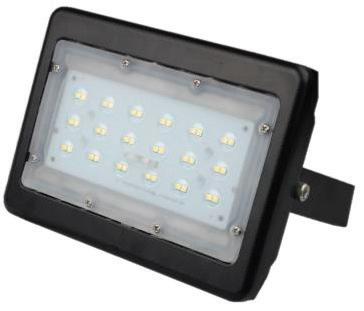





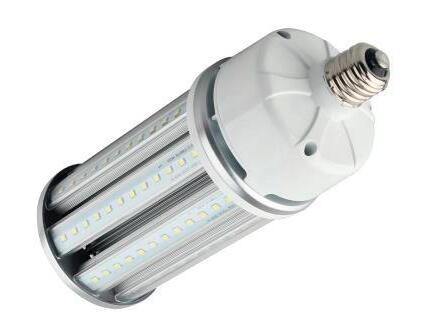

DECEMBER 2023 59 MACHINERY Cowcare SYSTEMS INCREASE PRODUCTION SAVE UP TO 80% ON ENERGY COSTS LED LIGHTING LED HIGH BAY Flood ligh ng Indoor ligh ng Advanced control with dimming and energy reading feature. For a no obliga on quote or more in . forma on Other ligh ng available. Scotland/N. England Wales/Midlands/S. England N. Ireland/ R.O.I John - 07732348225 Will - 07591833853 Fred - 07762800149 Andrew - 07803124235 info@cowcaresystems.com
Smaller systems can integrate batteries and inverters into a relatively compact space.









Prices start to stabilise
J e rally in most dairy commodity prices, both physical and futures, which played out through September and October, has certainly had a stabilising e ect on producer milk prices. Virtually all milk buyers apart from retailers on cost trackers are holding prices steady to end out the year.
con rmed its new price as a guaranteed minimum for December.












As we reported last month, Arla Foods holding its milk price for October, then subsequently for November (with its organic price increasing by 1.77ppl) set the scene to help with price stability. is was followed by First Milk, which was the rst milk buyer in late November to declare its price a hold of 36ppl for our manufacturing standard litre*.
While previously actioning its last 1.5ppl price decrease for November, taking our manufacturing price down to 35.39ppl, the Fresh Milk Company (Lactalis) had
Were it not for this timely rally, it would be fair to point out many milk prices were in danger of being 3-4ppl lower than current levels, with the only question being the amount of time needed to do so, with many buyers hesitant to want to drive milk prices lower for fear of the repercussion of much lower milk supply.
Correlation
Now what we will most likely see is a li in those milk prices before the year end, due to the closer correlation to commodity markets.
However, before too much anticipation is built, this is not referring to a li in milk prices currently in the 35-37ppl range based on our liquid standard*, although it would be welcome,
Waitrose moves for December
JHaving held its milk price for three months, Waitrose has reduced its milk price by 0.75ppl from December.
The reduction follows the 1.4ppl cut from August, taking the total reduction for the year down to 5.45ppl and
our liquid standard litre to 44.55ppl.
At the same time, the company’s organic milk price for our liquid standard decreased by 1ppl following the 1.4ppl cut from August, which takes the price down to 50.6ppl.
60
MILKprices
DECEMBER 2023 Future-proof your farm business, gain insight and exchange knowledge with a Farmers Guardian Farm Futures membership. Become an FG Farm Futures member today Visit farmersguardian.com/membership Call 0330 333 0056 and quote S304 Insight – Quarterly, in-depth, analytical reports into the latest agricultural trends to optimise your farming practices Exchange – A series of digital events focused on learning from real case studies and exchanging knowledge with agricultural thought leaders Weekly Digest email – From the desk of FG’s editor every Sunday morning, discover exclusive insights which impact the business of profitable farming Members’ Lounge – Enjoy an exclusive space for members to network at leading events, such as LAMMA, CropTec, Future Farming Expo Scotland and Farm Business Innovation. Included in your membership: Farmers Guardian delivered directly to your door every week including full digital access. Plus, check out our brand-new features exclusive to Farm Futures members. A one membershipyear is only £289 BUYING LIVESTOCK? SPREAD COSTS & PAY MONTHLY 01827 300 333 www.financeforfarms.co.uk Finance for business use customers only; subject to application, credit, terms and conditions. Finance for Farms is a trading name of Shire Leasing PLC who is authorised and regulated by the Financial Conduct Authority for certain types of consumer credit lending and credit related activities that are regulated under the Consumer Credit Act 1974 and by the Financial Services and Markets Act 2000.
Milk price analyst Stephen Bradley on the latest milk industry developments.

Sainsbury’s cuts 0.14ppl
JSainsbury’s has reduced its Sainsbury’s Dairy Development Group (SDDG) milk price by a further 0.14ppl from December.
The decrease takes its total reduction for the calendar year to 7.01ppl, as well as our liquid standard for our Muller supplier down to 40.49ppl.
Our Arla SDDG supplier receives the same level of decrease to 40.37ppl, after including the company’s 0.12ppl haulage charge.
Both prices include an average bonus of 0.62ppl for herd health and efficiency.
Compared with November,
but rather those prices which have been running much closer to the 30ppl level this summer/ early autumn.
While it is hard to see milk price increases for the mainstream coming around the corner any time soon, this current price stability should be welcomed. e rally itself has built at least a 4-5ppl commodity price cushion to hopefully protect most milk prices from being dragged down further by the previous commodity price lows seen back in summer.
At the same time, a key bell weather for the markets, milk production, is currently positive
the cost tracker puts the cost of December feed, fuel and fertiliser down 0.32ppl (for the consecutive month) to 16.41ppl (feed at 14.12ppl down 0.44ppl from 14.56ppl previously, fertiliser remains unchanged on 1.15ppl, while fuel is up 0.11ppl to 1.13ppl).
Other variable costs increased by 0.057ppl to 7.517ppl and net overheads increased by 0.16ppl to 20.71ppl.
Netting off other income increased from -5.73ppl for November to -5.77ppl for December. This gives a cost tracker total of 38.87ppl.







from a market perspective for sellers, as volumes both here and across Europe struggle to keep up with last year, which should help the current stability to be sustained into early next year. •
Last month’s table
JThe 12-month rolling average for Belton Farm should have been 44.55ppl and not as stated in last month’s league table. This positioned its price incorrectly at the bottom of the manufacturing league table.
* Our Liquid standard litre is 4%b/f & 3.3% protein, for our Manufacturing 4.2%b/f and 3.4% protein and in both cases Bactoscans of 30,000/ml & SCCs of 200,000/ml, with Thermodurics of 500/ml, 1mltrs/yr on EODC (max vehicle accessibility) based on level supply and therefore, before seasonality, (but includes the winter premiums paid in NI) as well as monthly profile adjustments, balancing charges, capital deductions or annual/part annual growth incentive schemes or supplements not directly linked to dairy market price movement.






61
DECEMBER 2023
Cow kennels
Perfect Shelter • Designed for Animal Health
Excellent Ventilation
Shelter from Wind & Rain • Shade from the Sun • Plenty of Fresh Air • Ample Space
Minimum Draught
Many options available Telephone: 01772 785252 www.farmplus.co.uk RECRUITING REPS See website for details Call us on 01258 817372 email: info@tractorsuk.co.uk TRACTORS UK SOLE UK IMPORTER OF TAFE TRACTORS FROM THE BEST PEDIGREE BASIC, SIMPLE & RELIABLE TRIED & TESTED FOR GENERATIONS 08R04B � Drum or oil immersed brakes � Roll bar or cab � 2wd or 4wd � 2 Years’ warranty � Comprehensive parts backup www.tractorsuk.co.uk ✆ 01258 817372 ✉ info@tractorsuk.co.uk BASIC, SIMPLE & RELIABLE www.tractorsuk.co.uk • • 2 Years’ warranty Comprehensive parts backup • • Oil immersed brakes 2WD or 4WD
•
•
•
•
•
Latest milk prices from
Notes to table Prices for both Liquid & Manufacturing tables paid for a producer sending 1mltrs/yr on EODC (max vehicle size accessibility) with Bactoscans of 30,000/ml and SCC’s of 200,000/ml with Thermodurics of 500/ml. Excludes capital retentions or AHDB levies, profile adjustments from level supply, seasonality, balancing and A&B price schemes (includes the winter premiums paid in NI). Excludes annual / part annual growth incentive schemes or supplements not directly linked to dairy market price movement. Liquid price for milk contains 4% b/f and 3.3% protein. Manufacturing price for milk containing 4.2%/b/f and 3.4% prot. All prices for non-aligned prices are before monthly retail supplements. (i) Jul’23 prices before seasonality or B pricing
62
MILK PRICES
B
(iii) Table ranked on simple rolling 12mth average of monthly prices Sept’22 to Aug’23). (i) v (ii) The difference Aug’23 compared with Jul’23. UK Arla Farmers 0.09ppl decrease from Jul’23 includes the 1.185ppkg Sustainability Incentive and forecast 13th payment of 1.24ppkg (1.277ppl) based on our liquid std litre. UK Arla Farmers 0.09ppl decrease for Jul’23 includes the 1.236ppkg Sustainability Incentive and forecast 13th payment of 1.29ppkg (1.329ppl) based on our manufacturing std litre. UK Arla Farmers hold for Aug includes the 1.185ppkg Sustainability Incentive and forecast 13th payment of 1.24ppkg (1.277ppl) based on our liquid std litre. UK Arla Farmers hold for Aug includes the 1.236ppkg Sustainability Incentive and forecast 13th payment of 1.29ppkg (1.329ppl) based on our manufacturing std litre. Arla Direct price for July includes the 0.35ppl additional decrease from the netting effect of the price reducing from the 5th June putting the total decrease for the month at 2.13ppl. First Milk price includes 0.5ppl Member Premium accrued as a 13th payment paid Apr’24. First Milk Haverfordwest Tesco Cheese Group includes 2ppl retailer premium averaged as 1.5ppl based on seasonal profile. Fresh Milk Company price before Morrisons monthly cheese supplement (payment made in Dec’22 of 0.072ppl for Jul’22 to Dec’22 period). MMG Direct price includes 1ppl Premium paid annually in arrears to Direct/Organic farms meeting specific Müller Direct criteria (Quarterly payments from Apr’22). Crediton Dairy price includes FarmMetrics Scheme Bonus of 0.5ppl paid monthly. South Caernarfon price includes flat 0.4ppl annual member bonus paid monthly. ‡ Price includes 12mth average rolling profile fixed at 0.57ppl. * UK Milk Futures Equivalent (UKMFE) net to producer includes 5% processor margin and allowing 2.43ppl ex-farm haulage Jul’23 and 2.44ppl for Aug’23 + milk testing. ** Ave delivered spot milk net to producer allows 3ppl covering haulage + milk testing and margin. (iv) Latest confirmed milk price at the time of going to press. UK Arla Farmers hold for Sept includes the new 1.185ppkg Sustainability Incentive and forecast 13th payment of 1.24ppkg
on our liquid std litre. UK Arla Farmers hold for Sept includes
1.236ppkg Sustainability Incentive
13th
1.29ppkg
based on our manufacturing std litre. UK Arla Farmers 0.09ppl increase from Oct’23 includes 1.359ppkg (1.400ppl) Sustainability Incentive and forecast 13th payment of 1.24ppkg (1.277ppl) based on our liquid std litre. UK Arla Farmers 0.09ppl increase for Oct’23 includes 1.417ppkg (1.460ppl) Sustainability Incentive and forecast 13th payment of 1.29ppkg (1.329ppl) based on our manufacturing std litre. UK Arla Farmers hold for Nov’23 includes 1.359ppkg (1.400ppl) Sustainability Incentive and forecast 13th payment of 1.24ppkg (1.277ppl) based on our liquid std litre. UK Arla Farmers hold for Nov’23 includes 1.417ppkg (1.460ppl) Sustainability Incentive and forecast 13th payment of 1.29ppkg (1.329ppl) based on our manufacturing std litre. Direct Premium for Direct/Organic farms meeting specific Müller Direct criteria confirmed as 1ppl for 2023 and paid quarterly, Apr’23, Jul’23, Oct’23 & Jan’24. All prices are before any additional monthly retail supplements. Milkprices.com cannot take any responsibility for losses arising. Copyright: Milkprices.com Jul’23 Aug’23 12mth Diff Latest 4.0/3.3 4.0/3.3 Ave Aug’23 Confirmed Before Before Sept’22 v Milk Seas’lty Seas’lty Aug’23 Jul’23 Price LIQUID PRICES (4% b/f & 3.3% prot) (i) (ii) (iii) (i) v (ii) (iv) Müller Milk Group – M&S 48.50 47.16 50.97 -1.34 44.80 Müller Milk Group – Waitrose 46.70 45.30 48.52 -1.40 44.55 Müller Milk Group – Tesco 43.51 41.83 45.41 -1.68 41.73 Arla Foods – Tesco 43.26 41.58 45.16 -1.68 41.48 Müller Milk Group – Sainsbury’s 41.33 40.76 44.83 -0.57 40.49 Müller Milk Group – The Co-op Dairy Group 40.95 39.86 44.73 -1.09 39.57 Arla Foods – Sainsbury’s 41.21 40.64 44.71 -0.57 40.37 UK Arla Farmers – Morrisons (Grazing) 35.36 35.36 44.26 N/C 35.45 Freshways 36.00 36.00 44.17 N/C 35.00 Blackmore Vale Dairy 38.03 38.03 44.09 N/C 37.00 UK Arla Farmers – Tesco 35.16 35.16 44.06 N/C 35.25 UK Arla Farmers – Morrisons 35.13 35.13 44.03 N/C 35.22 Crediton Dairy 37.00 37.00 44.00 N/C 37.00 Müller Milk Group – Müller Direct 38.00 37.00 43.96 -1.00 36.50 Müller Milk Group – Müller Direct (Scotland) 37.79 36.79 43.75 -1.00 36.29 Dale Farm GB (Kendal) 36.93 36.43 43.69 -0.50 36.18 Yew Tree Dairy 37.00 36.00 43.58 -1.00 36.00 Paynes Farms Dairies 36.50 36.00 43.33 -0.50 35.00 UK Arla Farmers 33.74 33.74 42.64 N/C 33.83 Meadow Foods Lakes 35.00 34.00 41.88 -1.00 33.00 Meadow Foods 35.00 34.00 41.88 -1.00 33.00 Grahams Dairies 36.00 36.00 41.50 N/C 35.00 Dale Farm NI 31.93 31.43 40.81 -0.50 31.43 Simple Average 38.26 37.62 44.17 -0.65 Simple Average (excl. retail contracts) 36.07 35.57 43.02 -0.50 MANUFACTURING PRICES (4.2% b/f & 3.4% prot) First Milk – Haverfordwest Tesco Cheese Group 38.35 38.35 46.17 N/C 37.50 Barber’s Cheesemakers 37.04 37.79 45.02 0.75 36.14 The Fresh Milk Company – Level Profile ‡ 37.51 37.51 44.94 N/C 35.84 Wensleydale Dairy Products 36.84 36.96 44.91 0.12 33.58 Saputo Dairy UK – Davidstow 37.00 37.50 44.87 N/C 35.50 Wyke Farms 37.77 37.77 44.85 N/C 36.11 First Milk 36.85 36.85 44.67 N/C 36.00 Parkham Farms Tesco 37.25 37.25 44.39 N/C 37.25 The Fresh Milk Company (Lactalis) 36.94 36.94 44.37 N/C 35.39 UK Arla Farmers 35.12 35.12 44.36 N/C 35.21 Belton Farm 37.05 37.05 43.68 N/C 35.30 South Caernarfon 36.50 35.50 43.61 -1.00 34.00 Arla Foods – Direct Manufacturing 32.67 32.67 43.12 N/C 32.67 Glanbia – Llangefni (Constituent) 34.00 34.00 42.54 N/C 34.00 Dale Farm NI 32.92 32.42 41.75 -0.50 32.42 Simple Average 36.25 36.25 44.22 -0.04 Simple Average (excl. retail contracts) 36.02 36.01 44.05 -0.05 ‘B’ Price Indicators StoneXMilkprices.com UKMFE (gross) 32.81 31.51 37.89 -1.30 *StoneXMilkprices.com UKMFE (net) 28.74 27.50 33.44 -1.24 **Delivered spot milk (net to the producer) 30.40 33.62 3.22
(ii) Aug’23 prices before seasonality or
pricing
(1.277ppl) based
the new
and forecast
payment of
(1.329ppl)
DECEMBER 2023



Winter Teat Dip Selection
How can Kersia help to protect teat skin condition?
NOVODIP
• An excellent post teat dip product
• Chlorhexidine and lactic acid
• A broad spectrum teat disinfectant
• Provides a barrier dip for extended protection between milkings
• Low consumption - economical to use
AVAILABLE AS: 25L, 200L & l000L (IBC)

• Formulated with skin-kind ingredients to improve skin teat condition www.kersia.uk
Scan the QR code to learn more from the Kersia team

T: 01576 205 480 E: enquiries.uk@kersia-group.com










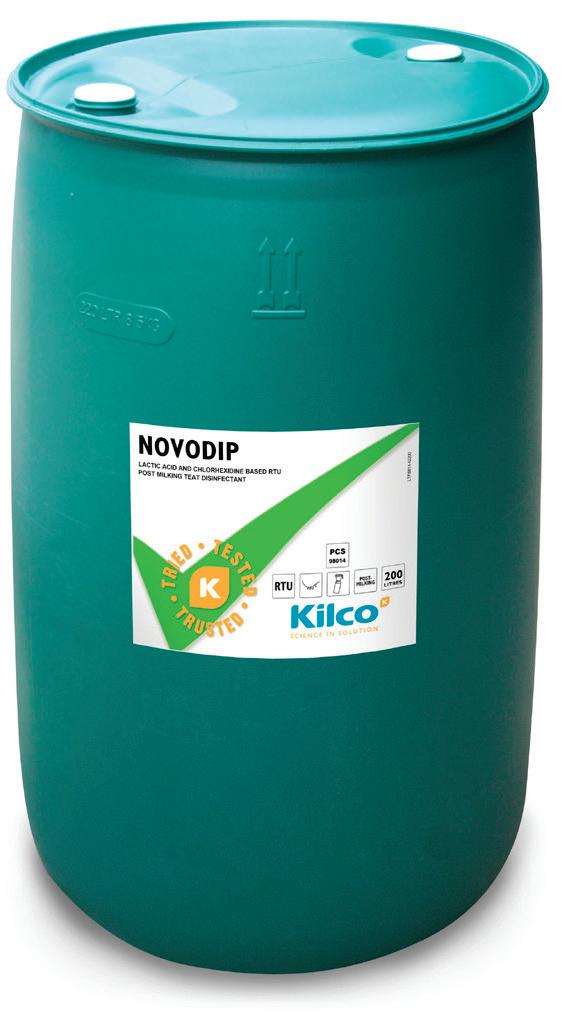


HEATSTRESS?
The climate in the barn is the key!


THE
SOLUTION: ABBIFAN 140-XXP-2
The latest motor technology now applied on our fans! Direct drive.
DC-permanent magnetic motor
40-70% energy savings
No frequency control needed
No motor protection switch needed
No special wiring needed
No maintenance
Mains: 230/400V 50Hz

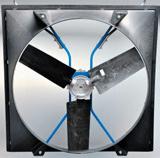
CROSS
VENTILATION blows fresh outside air in your barn!
Simpler installation
Less electric wiring
No obstacles inside
No restlessness when doing maintenance
Shorter suspension of the fans
Lower total investment
Airflow in length of cubicles
UK commodity prices trending up
UK butter prices have increased in line with EU prices to £4,450/ tonne, with cream at around £2.00/kg now, having been in the doldrums over summer at £1.60-£1.70/ kg. Like butter, it is at its highest price since last December.
Mild/mature Cheddar and mozzarella prices (£/tonne)
But while butter and SMP have been increasing slowly and steadily over the last few weeks, Cheddar has not, with plentiful stocks, a lack of demand and consumers trading out of brands all acting as an anchor to price improvements.
However, falling milk volumes (not least in Ireland), the availability of cheap parcels drying up and rapidly rising Gouda prices have all had a positive effect on mild Cheddar prices. That has increased £150/t since early October to £3,300/t, with forward prospects higher for Q1 and Q2 next year.
Mozzarella looks reasonably stable at £3,200/t.
Spot milk is still in the high 30p range and touching 40p for those who need it.
Futures prices posting positive gains
JThe futures prices are rising in line with real market values – or are helping to drive them up. On average over the next six months, EU butter and SMP are converting into a milk price
of just over 35p, with New Zealand futures a penny less.
Q2 averages
But Q2 averages are at more than 36p for the EU. Many UK processors should be able
to pay 3-4p more than the futures, however. Although this might depend on the relative fortunes of the Cheddar markets, as that may well act as a brake on rising prices.
Prices stabilise as price drops virtually stop
JThe latest official Defra milk price for September is 36.22ppl at 4.21% fat and 3.37% protein. This is a 0.16p increase on last month, due to milk quality rises, not any lifts in farmgate prices. There is little difference in the quality corrected price.
www.abbi-aerotech.com
www.rumitechs.co.uk
Ph: 07714 846987
On a non-aligned basis, November’s price has stabilised at 34.4p, which
is slightly down on October, with December’s price stable at the same level. So far only one processor has cut for December, apart from the retail pools.
If prices remain the same for Q4, the average Defra price will be 39.2p for the year – the second highest after 2022.
The latest AMPE figure for October is 34.53p, which
is up 5.71p on July. After an allowance for a margin and additional supply chain costs, a reasonable farmgate equivalent would be 30.53p.
MCVE
MCVE is at 34.58p, before costs and a margin, which is up 1.19p. The farmgate equivalent is very similar to the AMPE price.
DECEMBER 2023 64 MILK ANALYSIS
NEW! NEW!
Oct Nov Dec Jan 21 Feb Mar Apr May Jun Jul Aug Sep Oct Nov Dec Jan 22 Feb Mar Apr May Jun Jul Aug Sep Oct Nov Dec Jan 23 Feb Mar Apr May Jun Jul Aug Sep Oct Nov 5,500 5,000 4,500 4,000 3,500 3,000 2,500 2,000 Mild Cheddar Mature Cheddar Mozzarella


Falling milk volumes, the availability of cheap parcels drying up and rapidly rising Gouda prices have all had a positive effect on mild Cheddar prices.
Commodity prices rally on the back of improved sentiment
JCommodity markets have continued to increase, although there is a long way to go before they lift enough to put a significant amount of money on milk prices for most.
The Dutch Dairy Board’s butter price rocketed €220/ tonne (£192/t) in the second week of November to €5,350/t (£4,663/t), which makes it nine weeks of increases in a row.
The price has increased by more than €1,000/t (£872/t) in that period, to the highest level since last December.
Unfortunately, Dutch SMP has fallen €50/t (£44/t) in the first two weeks of November to €2,550/t (£2,222/t). The combination of butter and SMP now converts into a milk price of around 33.5p.
However, at the time of writing, buyers were stepping back from the market and there was a Mexican stand-off, with buyers uncomfortable with paying the rising prices and sellers unwilling to drop their prices as they could see them increasing further. It was not clear which party would win out.
There is also some nervousness

in the market as to what would happen in Q1, which is never a good time to sell dairy products.
Thus it is not yet clear to what degree prices will either hold or increase further.
By Farmers, For Farmers

Benefits for your farm


Accurate forecasting of long-term energy costs
Security, with reduced reliance on National Grid

Increase profitability of unused or under-utilised land
Tax exemptions and eligibility for capital allowance
Clean, sustainable, noise and waste free energy
Excellent return on investment












860644 info@caplor.co.uk
01432
Butter prices (€/tonne) Jan 22 Feb Mar Apr May Jun Jul Aug Sep Oct Nov Dec Jan 23 Feb Mar Apr May Jun Jul Aug Sep Oct Nov 8,300 7,300 6,300 5,300 4,300 3,300 2,300 German Dutch French Oceania US
NEWProducts
This month, we feature a new robot configuration from GEA, a downloadable step-by-step guide and mobility videos from Ceva Animal Health, plus a two litre, reusable colostrum bag which reduces costs per use.
AHV launches milk recording data service
JA new milk recording data analysis service, MPR, has been developed by Animal Health Vision (AHV) to provide a precise method of identifying cows with udder health challenges.
It uses an algorithm to analyse milk recording data from two different perspectives – udder health and energy status. The software also recommends a specific course of action.
The monitoring and analysis software identifies cows which are struggling to cope with energy demands or fighting udder health challenges. Individual cows are then discussed with the farmer and an appropriate strategy agreed. AHV subsequently tracks the success of cleansings and feeds the findings back. The service is free to AHV clients.
rMore information from 01769 772 070, or uk@ ahvint.com
Got a new product?
JNew products are featured in each issue of Dairy Farmer. Please send details and pictures to Katie Fallon at katie.fallon@ agriconnect.com, or call 07815 003 227.
New robot for larger herds
GEA has further boosted the efficiency of its robots for milking large herds with a new system configuration on the DairyRobot R9500 automated milking system.
The master-secondary configuration allows up to eight boxes to be connected to a single main milk line as well as up to 16 boxes to one tank, resulting in substantial energy and water savings in multi-robot installations.
Following testing earlier this year, based on 100 litres of tank milk, electricity consumption was reduced by up to one-third and water usage decreased by approximately 13% compared to the previous model.
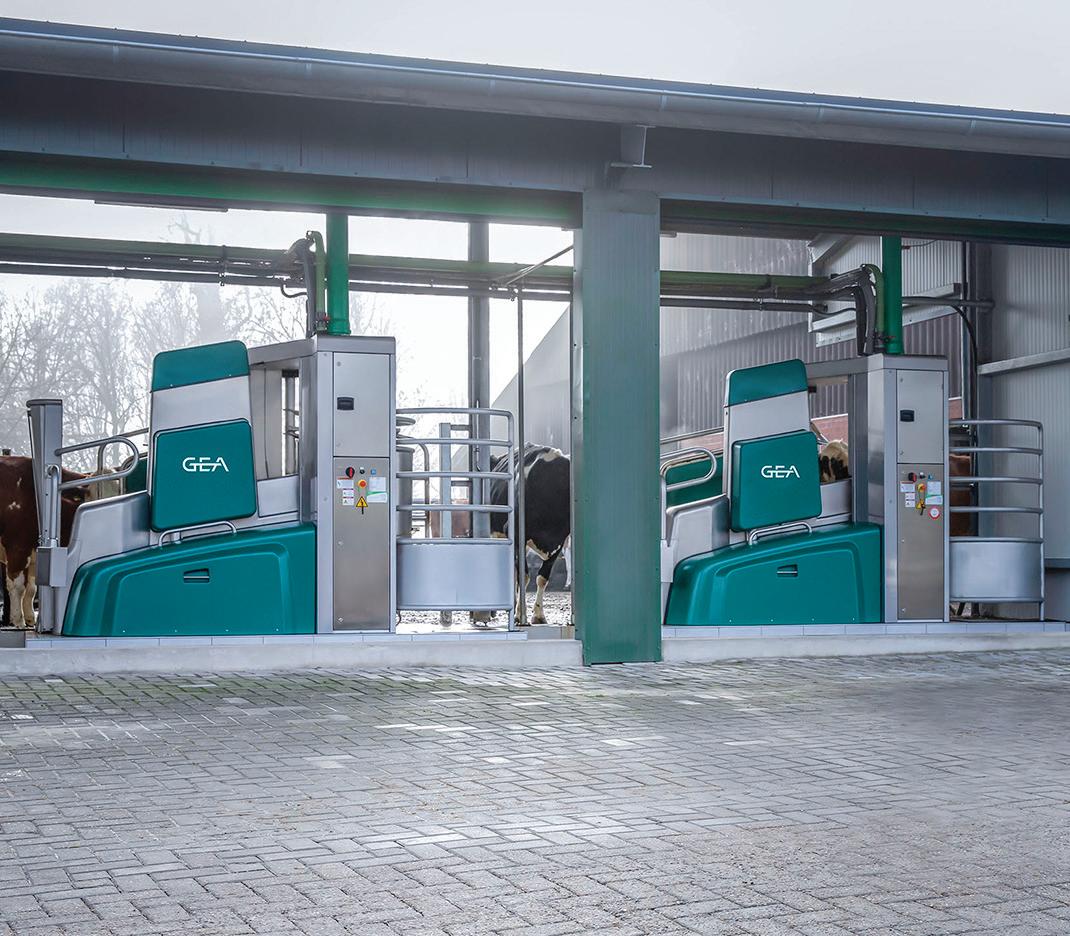
Further testing with a multibox system featuring two robots demonstrated power consumption reductions of up to 29%, with water usage dropping by as much as 18%.
In terms of power consumption, the GEA DairyRobot R9500 in a multi-box system is the most economical DLGtested automated milking system on the market.
Testing for early disease detection
J Diagnostics testing company
MI:RNA has developed a new AI-empowered testing method for early disease detection.
The new technology is showing preliminary data of 73% sensitivity and 71% specificity in identifying Johne’s disease. With the potential to detect early stages of infection and predict the outcome of the disease, MI:RNA uses
microRNA assay technology which manages the immune system and immune responses and acts as a regulator for disease progression or resolution.
rMore information from lilian. schmalenstroer@gea.com

It will allow vets and farmers to easily test for a variety of conditions, as well as Johne’s disease. Target areas include heart and kidney disease, osteoarthritis and bovine tuberculosis, with tests carried out by means of blood and in the future, milk or urine.
rMore information from chirene@hottinroof. co.uk or 07733 449 317
66
The new GEA robot milking system aims to improve efficiency.
DECEMBER 2023
Two-litre colostrum bag launched
JDairy Spares has introduced a smaller two-litre sized Trusti Colostrum Bag, ideal for saving smaller volumes of colostrum. Taking up less space in the fridge or freezer than half-filled standard bags, the new bag is also re-usable, which significantly reduces the cost per use.
The bags are suitably robust to provide five uses, making them a more cost-effective and environmentally friendly choice than single-use colostrum bags.
Features include a large surface area to speed up freezing and thawing, a robust handle for holding or hanging, and a wide neck for faster filling and easier cleaning.

price of £45 plus VAT and £195 plus VAT, respectively.
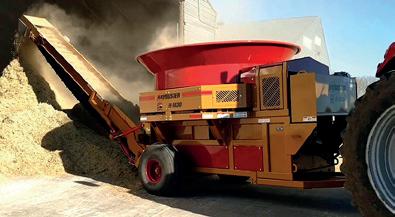
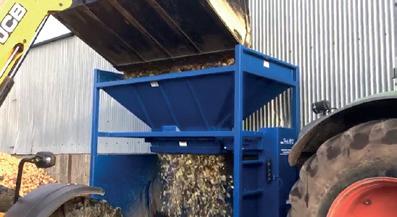



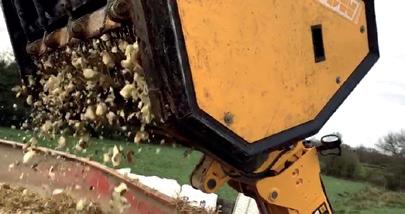

The new two-litre size of Trusti Colostrum Bag is available in packs of 10 or 50, with a recommended retail importance of using a NSAID with a zero milk withhold.
rMore information from 01948 667 676, or marketing@dairyspares.com
Mobility videos and lameness tips
JA new step-by-step guide and a series of mobility improvement training videos have been launched to help promote best practice in the management of dairy cattle lameness.
Produced by Ceva Animal Health, the downloadable guide and videos are designed to be used by farmers, vets, foot trimmers, mobility scorers and nutritional consultants, to emphasise the importance of working together to improve herd mobility.
The step-by-step guide features advice on reviewing whole herd mobility by an independent accredited mobility scorer, seeking veterinary advice or contacting a mobility mentor.
The guide also includes tips for the successful use of non-steroidal anti-inflammatory drugs (NSAID) including the
The lameness management videos cover the benefits of regular mobility scoring, prioritising lameness prevention in heifers and maintaining successes with practical and effective lameness treatment and prevention programmes across the whole herd.
rMore information from jessica.henman@vitacomms. com or 01488 683 862




















67
NEW PRODUCTS
DECEMBER 2023 Lowlander ® Manure Spreaders Twin Vertical Auger TVA | 6 – 40 tonnes Horizontal Beater & Spinning Disc HBD | 8 – 40 tonnes bunning spreaders www.gtbunning.co.uk Tel: + 44 (0) 1362 860352 3 Year Warranty | Details available upon request Feed Processing Specialists Please visit www.enegis.co.uk for more photos or call 01789 205132 or 07721 442979 Tub Grinders - Exclusive UK Distributor of Haybuster & Rotogrind Grinders. - Range of models from 5t - 25t / hour output. - New, used & refurbished machines available. - Ideal for straw, hay, green waste, roots, biogas feeds etc Root Choppers & Cleaners - Loader, 3 point linkage, free standing PTO and electric drive available - UK Distributor of VDW range of choppers, cleaners & feed dispensing equipment - Output from 10t/hour to over 120t/hour available Diet Feeders - Largest stock of mixers in the UKover 50 ma chines in current stock - Refurbished, used & nearly new units available - New Mini Mixer available - Diet feeder parts available- Blades, Conveyor belts, gearboxes, weigh cells. - All feeders undergo 30 point service - Finance available subject to terms - Nationwide delivery available Current Used Stock: - Trioliet 20 x 2 - Strautmann 10, 20m - Bvl 10, 12, 15, 20m - Kuhn 12, 14, 27 - Siloking 14 x 2, 14 duo, 18m - Shelbourne Reynolds 13, 19 - Hi Spec 12, 16, 20 - JF 18, 22m - Redrock 14,16 - Rotogrind 760 x 4 - Farmhand Tub grinder - Enegis Multi chop 4 - VdW 2.4m root chopper bucket - VdW 2.4m mixing bucket - VdW Duo Compact loader straw blower on pin & cone - Profi root Chopper x 2 Used Diet Feeders always wanted
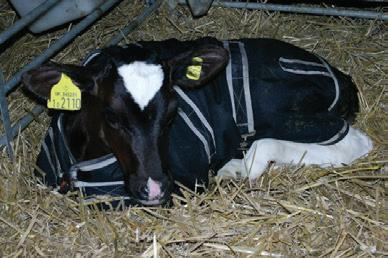







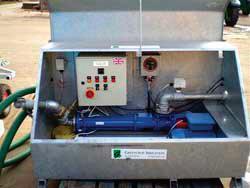


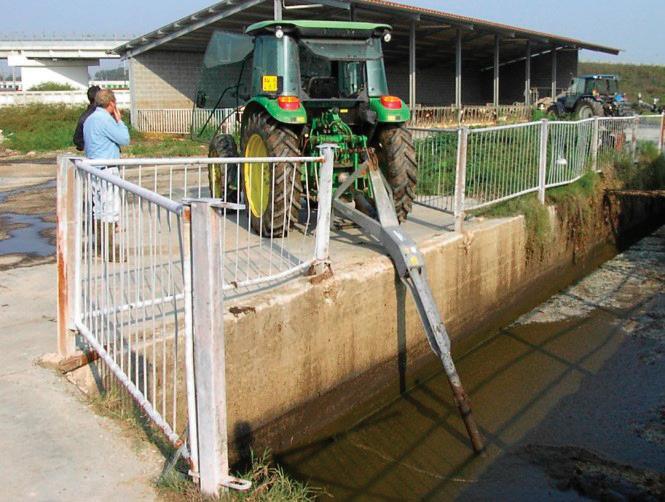








Equipment & Accessories SEPCOM The unique separator Slurry pumps & lagoon mixers 01328 701992 | enquiries@greencrop.co.uk | www.greencrop.co.uk Multicam dirty water irrigator Slurry pump Pump in a box CLASSIFIED TELEPHONE: 01772 799400 Building Services Professional Services SPRAY FOAM INSULATION To Crop & Livestock Stores, Poultry Sheds, Cattle & Pig Buildings, Workshops & Barns. Frost & Condensation Protection. Temperature Control Energy Saving Tel: 01405 812682 www.webstersinsulation.com info@webstersinsulation.com DECEMBER 2023 68 WELL ESTABLISHED AND PROFITABLE CONCRETE GROOVING BUSINESS OVER THIRTY YEARS. With a nationwide client base, including farms, markets, show grounds, institutional government organisations; having earned a fine reputation for quality and service. Possible to run from any location, an exciting opportunity to expand the business for an existing agricultural contractor or those looking to run their own business. Existing and ongoing order book. For sale as a going concern For further details contact Anthony Mosley Tel (01822) 833 204 Delaval mobile milking bale for hire/sale. Delaval Blue Diamond 32/32 fast exit MM25s. Save energy, Ice Builders : Bulk Milk Tanks. Heavy duty replacement troughs for most parlours. Delaval VMS Robots : Milk meters, keypads, feeders etc. Everything for the Dairy Farmer Call Vic/Tracey Brown Tel: 01260 226261 www.milkingequipment.com Milking Equipment Tel: 01635 253344 Email: sales@raytradeuk.co.uk Web: www.raytradeuk.co.uk CLASSIFIED TELEPHONE: 01772 799400 To Advertise In






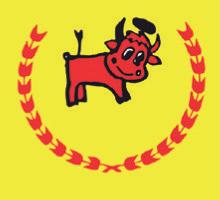







69 DECEMBER 2023 Livestock Services FARM HEALTH SOLUTIONS Ask about Herd Health Analysis T . 01756 749444 W . www.crossgateshealth.co.uk APPLE CIDER VINEGAR (ACV) - ACTS AS A RUMEN TONIC -IMPROVES BUTTER FAT AND MILK PRODUCTION -ACV ACTS AS A FANTASTIC IMMUNE ENHANCER -REDUCES HIGH CELL COUNTS - PREVENTS MASTITIS Nationwide (01948) 662910/663143 george@greenfieldsrise.f9.co.uk CALF DEFENDER is an energised Calf Milk with anextensive package of health promoting ingredients tostimulate the immune system and promote a health gut. For further information contact Speak to Katie Robinson today and start converting our readers to your customers. 01772 799500 | fgclassified@farmersguardian.com Published February 16, 2024 Advertising opportunities now available in our DAIRY SUPPLEMENT Dairy Tel. +44 (0)1387 750459 E: info@britmilk co uk | W: www britmilk co uk Calf Jacket Calf Jacket BRITMILK “Qu alit y wit h ou t Comp romis e” f rom • Quality breathable/ water repellent materials to maintain body heat • Strong metal buckles for Longer life • Crossover straps for secure fit • Machine washable
‘It’s a merry-go-round where one sector supports the other’
This month, Roger Evans discusses the price of ewes, reminisces about some of the mobile phone technology he used to have, and talks about the perils of coming into contact with a hornet.
Iknow that the price of ewes is nothing to do with dairy farming, but to me it has always been a barometer of where farming is. The folk who buy ewes at the big sales in autumn may have to sell some beef cattle to free up some money to buy those ewes. The people who buy those cattle have to take into considerations the price of cereals that winter –do they feed them to the cattle or sell them?
It’s a sort of merry-go-round where one sector supports the other.
There seemed to be a good demand at the early sales, which in itself defies all logic as the sheep industry seems to have the threat of cheaper lamb imports from the southern hemisphere hanging over it.
I sometimes think the ewe trade is driven by the good demand for cull sheep. I often think the cull ewe trade is the only one which the supermarkets have not got involved in. That in itself is a story. Somewhere in this cycle is the value of the beef calves we produce.
I had an amusing message from a reader who, like me, struggles with modern technology. Just like me he enlists the help of his grandchildren to help him. And just like me, they fix a snag so quickly that he can’t learn how to fix it himself the next time it happens.
Blackberries
I was for many years on the board of one of the dairy co-ops. It used to loan us devices called Blackberries, but mine was always going wrong.
We had an IT department, so I used to take it there. They were always intrigued that when they took my Blackberry apart, there was always a piece of straw in there.
They usually fixed it by taking the battery out and putting it back in again. Taking the battery out never worked for me.
If I had time I used to go an hour early to fetch the cows for afternoon milking and I used to take a long handled brushing hook with me.
The idea was that I would cut off the weeds that the tractor and topper couldn’t reach, along the boundaries for example.
We have a small stream which wanders down the one boundary and, on the one afternoon, I can remember I was cutting thistles which grew on the banks. They were very fine thistles and I was trying not to think if this was the same thistle I had cut the previous year and all the previous years as well.
Nosiness
My cutting didn’t last long, because in no time at all I was surrounded by cows. My cows were very nosey (I wonder where they got that from?) and they would come to see what I was doing. It wasn’t safe to continue using the hook.
I’d never bought my cows one of those brushes which would scratch them. I always thought they had plenty of trees to rub against.
On this occasion they were rubbing against me, perhaps I look like one of those brushes. Then a hornet appeared and all the cows put their tails up and bolted.
The hornet had given me some space, but other than that I didn’t think of it.
A few days ago, as I went to bed, I switched the bedroom light on and there was a hornet there. I tried to swat it, but it was too quick for me.
I got into bed, I switched the main light off and put my bedside light on. By that time, I had
GOODEvans
70 DECEMBER 2023
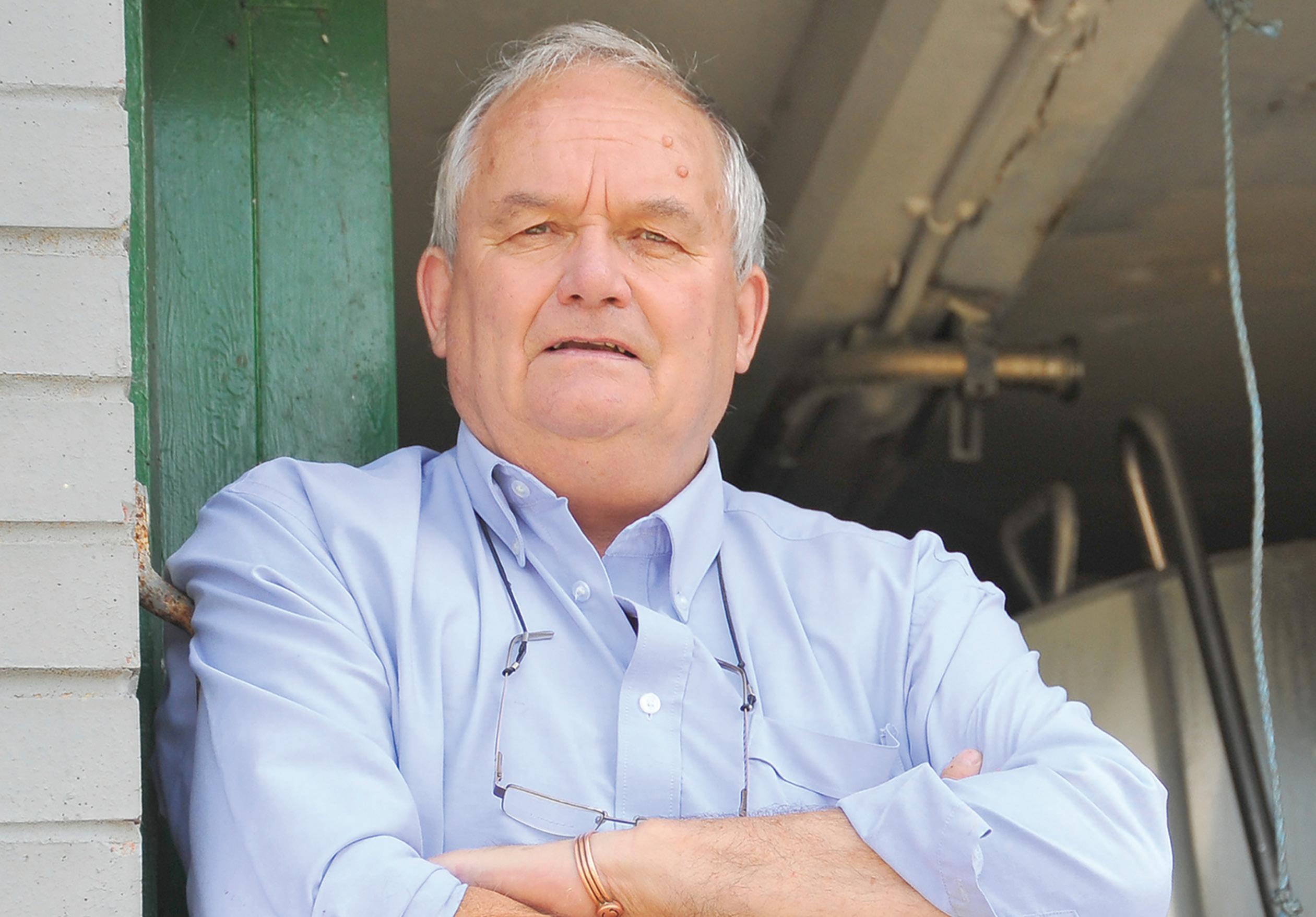
“I don’t know much about hornets, do they die if they sting someone?
decided my best defence was darkness. e hornet le the main light and landed on my bedside table. By this time, it was only a couple of feet away. It seemed to be saying: ‘you can switch the light o , but eventually it will get light and I will have you then’.
I switched the bedside light o , but I could still hear the hornet whirring its indignation.
At one time it landed on my pillow, which was quite scary.
Dozed off
I must confess I didn’t sleep much, but I must have dozed o and when I awoke it was light outside. ere was no sign of the hornet
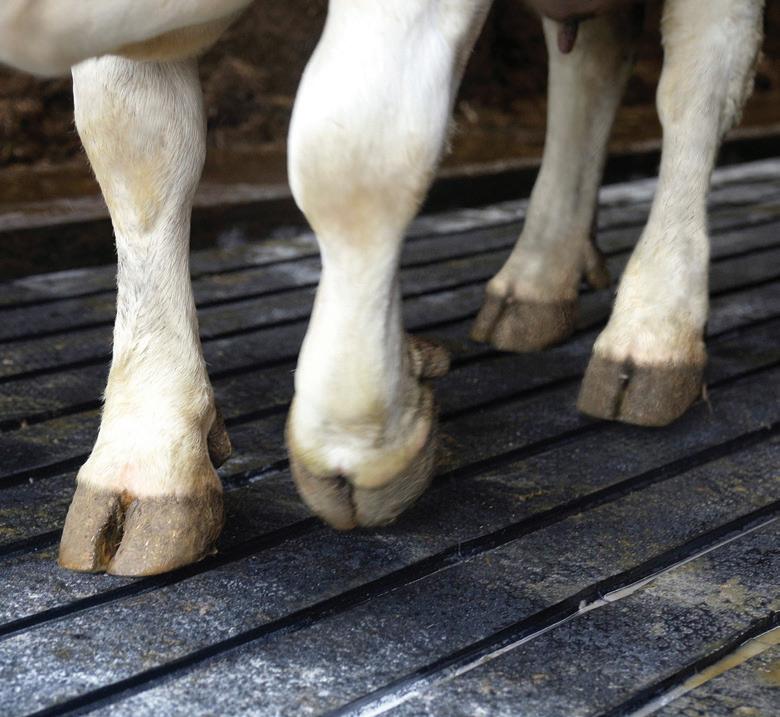

so I got dressed. But the hornet was hiding among my clothes and it stung my foot. Not recommended.
Sting in the tail
I don’t know much about hornets, do they die if they sting someone? Hope so.
Do you remember the warble y which used to a ect our ca le? e eradication of the warble y was a triumph for common sense. It probably wouldn’t be allowed today, it might a ect some ne ecological balance. ere would be pressure groups dedicated to saving the warble y and it would be a part of their rewilding programme.






Hope so MADE IN GERMANY 71 DECEMBER 2023
Self-sufficiency in UK milk production is being eroded as output fails to keep up with the increase in population. Cedric Porter reports.
Milk output falls behind UK population growth
At the start of 1993, the population of the UK was at 57.856 million people, based on Government and UN estimates. e nation’s dairy cows produced 13.905 billion litres of milk, according to Defra data. at was the equivalent of 241 litres of milk for every person in the country.
Over the next decade, that gure stayed mainly stable at 242 litres in 1998 and 237 litres in 2003. But by 2008 it had fallen to 218 litres, and in 2013 was at 207 litres a head.
At the start of 2023, production was at 14.781bn litres and the population had grown to 67.624m people, which was the equivalent of
0 220 litres per person; an increase on 10 years before of 6.3%, but down two litres on the 2018 gure.
Dutch, Irish and Kiwi expansion
JThe drop in UK milk availability for its population contrasts with major dairy producing and exporting nations. Over the last 30 years, Irish milk production has jumped by 73%, while the population is up by 42%, with the amount of milk produced per person in the country up by 21% to 1,750 litres.
Dutch milk production has risen by 29% in the last 30 years – more than double of its population rate growth, resulting in a 14.5% increase in output per person to 780 litres.
But the most dramatic changes have been in New Zealand, where production has soared by almost 170% since the early 1990s, compared to a 35% increase in population, meaning a doubling in the amount of milk
available per person at a colossal 3,990 litres.
Crucially, production growth in all three countries appears to have peaked, with policies designed to limit an increase in production and manage a decline to more sustainable levels because of environmental concerns.
There were 1.842 million dairy cows in 2022, according to Defra. That was 2.6% more than the decade before, but 45% fewer than the peak in 1983.
New Zealand dairy cow numbers have fallen by 8.4% from their 2014 peak of 6.968m.
Irish dairy cattle numbers have increased by over 50% since 2010 to 1.647m. In that time, the Dutch dairy herd has increased by 14.5% to 1.57m.
Over the last 30 years, annual milk production has increased by 6.9%, but population growth has outstripped that at 17.4%, resulting in an 8.9% drop in production per head.
In the most recent gures, milk
production is growing at half the rate of population growth.
e gap is likely to widen as population continues to increase at 0.4% a year, but lower milk prices and reducing pro ts mean that producers are cu ing back production.
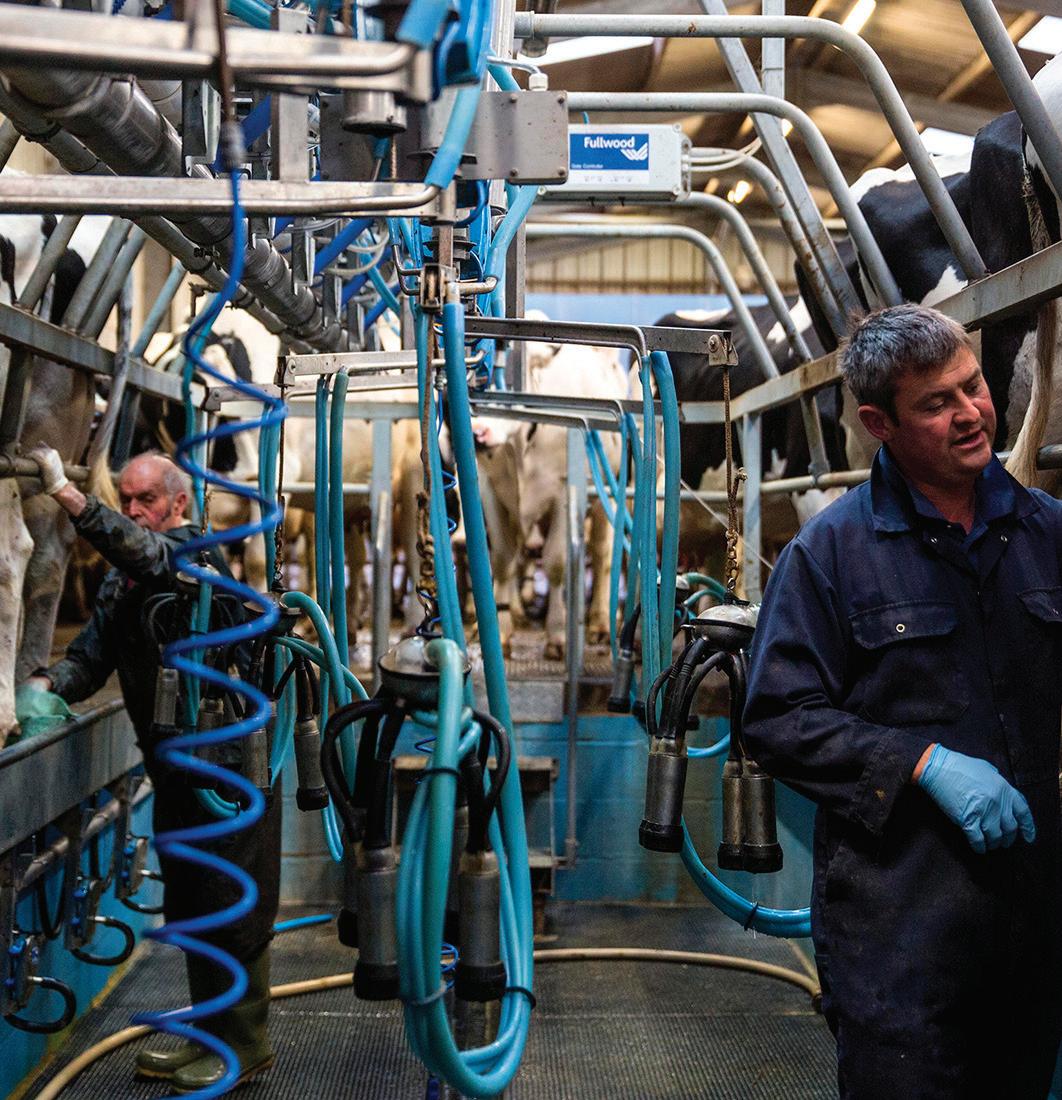
The drop in UK milk availability for its population contrasts with major dairy producing and exporting nations.


DECEMBER 2023 72 BUSINESS CLINIC
SOURCE : Defra Number of UK dairy cows in ‘000s 3,500 3,000 2,500 2,000 1,500 1,000 500
1980 1982 1984 1986 1988 1990 1992 1994 1996 1998 2000 2002 2004 2006 2008 2010 2012 2014 2016 2018 2020 2022 PICTURE :
Getty
Is greater self-sufficiency important?
JWhile greater dairy selfsufficiency may be important from UK food security and dairy industry profitability points of view, it should not exclude looking at opportunities to export more, says John Allen, managing director of Kite Consulting.
He says: “The UK dairy industry has traditionally been focused on supplying the UK market, especially liquid sales. But that has put pressure on returns in what is a very competitive market and meant that the UK has missed out on the growing higher value global market for cheese and milk powders.
“More than 90% of UK dairy sales by value are in the UK. Compare that with Ireland, the Netherlands and New Zealand, where the vast majority of sales are outside those countries.”
He says he believes the UK has an opportunity to build greater sales at home and abroad, but that will take strategic thinking among policymakers and the dairy industry.
“There is a danger that the UK adopts similar measures to those taken in Ireland, New Zealand and the Netherlands to restrict supply to help improve the environment, but there are not the same sustainability issues here as there are in those countries, and UK producers and dairies are making great strides in improving the way they produce milk more sustainably.
“Given the reduction in cow numbers over the last 40 years, there is scope for a controlled increase in output.
“In fact, it is right for the world
for the UK to produce more dairy nutrition, since we need it for the growing population and we produce some of the most sustainable dairy nutrition in the world,” he says.
Mr Allen applauds the efforts of exporters who have increased cheese exports. In the first eight months of this year, the UK exported 114,515 tonnes of cheese worth £525.8 million. That was 2.4% lower by volume, but 6% up in value.
Compared to 10 years ago, cheese exports have increased by 42% by volume and are up more than 90% by value. There has been a shift to more non-EU sales, where markets are growing faster. In that time, cheese imports have remained steady at about 300,000t, but increased in value by 43% to almost £1.332 billion.
However, in a recent report, Mr Allen and his team warned UK retailers that taking UK cheese production for granted could result in it being increasingly difficult to access the British cheese that British shoppers want.
The report said: “Retailers who have understanding and empathy, and who are prepared to work with their supplier, will find they will go the extra mile for them. In contrast, those who do not care (and they do not have to) will increasingly see cheesemakers supply their products elsewhere.
“These retailers will lose out, because over time they will lose the best suppliers and the best products. They will be left with average products, from average factories, with average service levels.”






BUSINESS CLINIC
DIGEST-IT A BIOLOGICAL SLURRY AND AD DIGESTATE ADDITIVE Designed to increase nitrogen levels and reduce ammonia emissions t: 03333 239 230 e: enquiries@originfertilisers.co.uk www.originfertilisers.co.uk Available from Origin Fertilisers distributors @originfert • Independently proven to increase total N by 22%1 • Reduces surface crusting • Reduces fuel costs due to pumping a thinner, more workable slurry
Decreases on-farm ammonia emissions from slurry by 31%3
19% increase in first cut grass silage yield2 1Kingshay Dairy Consultant 27 year replicated yield comparison study on a commerical farm in Ireland 3Mountbellow Agricultural College, Ireland
•
•
Grass growth modelling technology looks to provide farmers with a three-week growth forecast and reliable dry matter mass cover measurements. Dairy Farmer reports.
New technology aims to save time and money
With funding from Innovate UK, artificial intelligence and climate technology firm Agribot, together with Agri-EPI Centre, launched the Grasslands Modelling for Improved Utilisation project earlier this year.
The two-year project will focus on the development of a grassland modelling solution; a new technology which gives farmers grass growth measurements with a level of accuracy that was previously unattainable.
The new technology, which will be available to farmers via an app, is said to save both time and money, together with improved productivity helping to lower the dairy herd’s carbon footprint.
Agribot founder Chris Knight explains the technology has been in development for several years, initially focusing on the arable sector before being repurposed for the dairy herd, looking specifically at grass management.
Distinguishing itself from previous grass growth forecasting models, Mr Knight explains the technology combines the use of innovative
With [...] increasingly erratic weather patterns [...] this technology is now more essential

Synthetic Aperture Radar (SAR) – a form of radar which can easily pass through clouds – with a novel twoweek probabilistic weather model.
As a result, the technology can provide year-round reliable data on the dry matter mass cover in an identified grass field. He explains this data will allow farmers to make more informed decisions about their own fields and enhance farm productivity.
Mr Knight says: “With the world experiencing increasingly erratic weather patterns, and with 40% of English agricultural land dedicated to temporary and permanent grasslands, this technology is now more essential than ever.”
He says the technology is helping to change this by addressing the problem in three stages: using real-time satellite radar data to find out what is happening now; creating a two- to three-day weather forecast; preparing a two- to three-week growth forecast for grass, based on long-range weather and localised climate models.
Mr Knight explains that by using the radar satellite to estimate the dry matter mass, farmers are not required to do as many regular
field walks and can not only plan the fields which the cows should be grazing, but also when fertiliser should be applied.
He says the two main benefits of this technology to farmers are the savings in both time and money.
“Farmers will save time as they are not having to do as many paddock walks, if any at all. And the second benefit is saving money,” he says.
Efficiency
“It costs 3p to produce a litre of milk from grass, whereas it costs 13p to produce a litre of milk from cows housed all year round. So, we are ultimately aiming to keep the cows in the field for as long as they possibly can and increase the efficiency of the paddock.”
To develop the technology, Agribot and Agri-EPI Centre have worked closely with several farmers including a Leicestershire dairy farm, Agri-EPI Centre’s satellite farms and the Cumbria Farm Network.
Mr Knight explains the farms have been carrying out plate measure readings, funded by Innovate UK, to help collaborate the satellite AI model and calculate the dry matter mass.
He says: “The satellites come back with their own measurements which we have to turn into real numbers, and it is the data being given by these farmers which has allowed us to do that. We are at the stage where we have the science and technology working, so it is now about validating that with famers and making it into a product they can use.”
Rob Morrison, head of dairy at Agri-EPI, says that farmers armed with knowledge about rainfall patterns and grass growth will have the ability to proactively manage resources, minimise waste and significantly reduce costs.
He says: “Increasing the utilisation of just 1% of grassland in the UK could increase the annual profitability of the UK dairy and livestock sector by £22 million.”
With the project’s test farms excited to see the benefits from the technology very soon, plans are in place to engage with the wider AgriEPI network to increase adoption.
Mr Knight says the project aims to have the technology in a small number of farmers’ hands by next spring, before making it commercially available in the near future.
DECEMBER 2023 74 RESEARCH
The use of radar satellite to estimate dry matter could eliminate the need for frequent plate metering.
CHRIS KNIGHT
PICTURE : Ruth Rees Photography
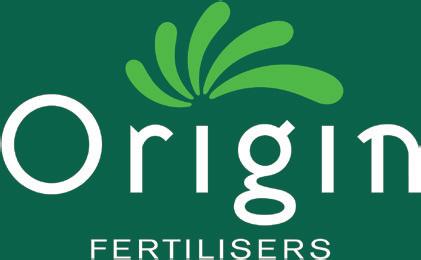
More than a urease inhibitor

>80% reduction in ammonia volatilisation1
>50% reduction in nitrous oxide emissions2
Performance equal to or better than nitrates3
Zero impact on reproduction of earthworms4

>45% reduction in nitrate losses5
Zero impact on freshwater fish mortality6
Plus a shelf life of 12 months and stable in NPK blends







Air Soil Water
GB ADAS field study 7 and 14 days and Ireland UCD lab study compared to urea 2. California Dept of Food & Agriculture compared to nitrates 3. Trials in Europe, Ireland, GB and Iceland
Eurofins Ecotoxicologie France 2020 at x10 application rate
NIAB TAG and John Innes Centre, GB, compared tp nitrates
Eurofins Expertises Environnementales France, 2016, at x10 agronomic dose Talk to us about protected urea t: 03333 239 230 e: enquiries@originfertilisers.co.uk www.originfertilisers.co.uk
1.
4.
5.
6.
Lets Think Big Together

Everything we do at DeLaval is about helping dairy farmers sustainably and profitably milk cows. That is why we don’t just have one type of system, but we have all types of systems, which means we can make sure you get the system that is right for you.

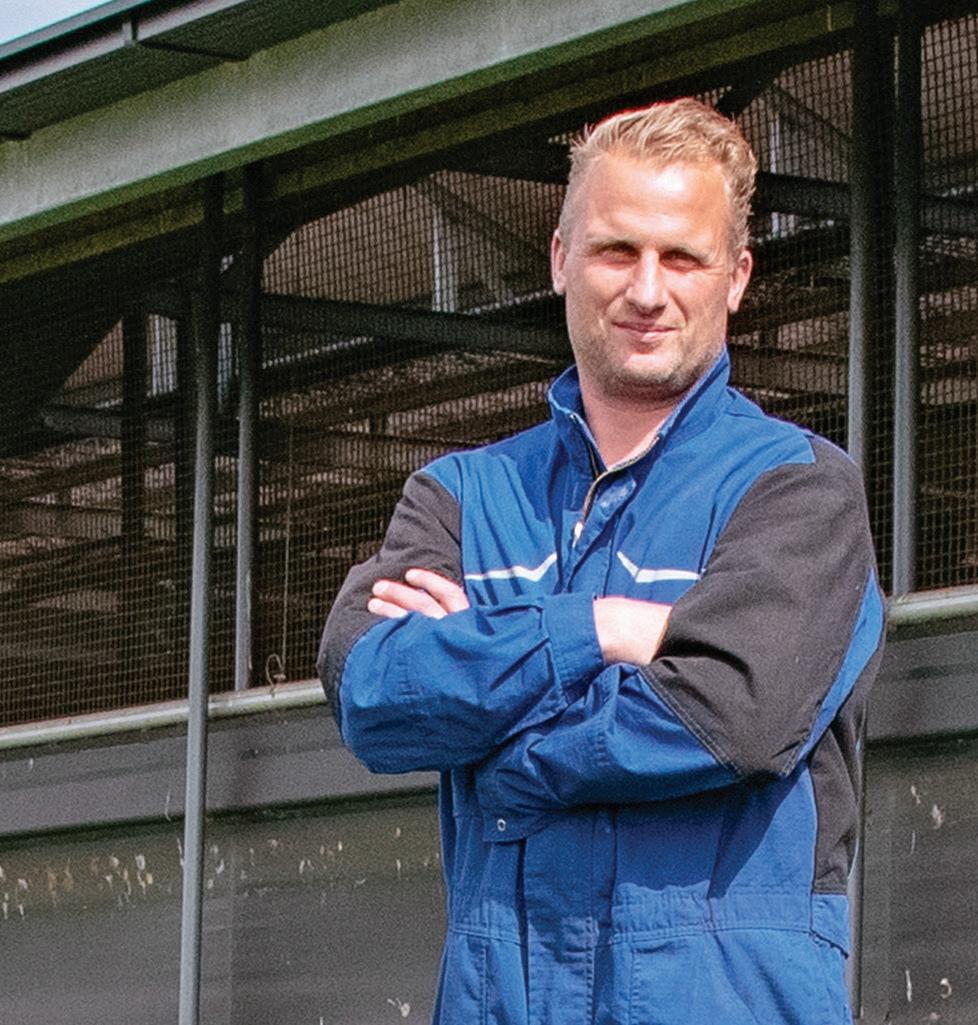
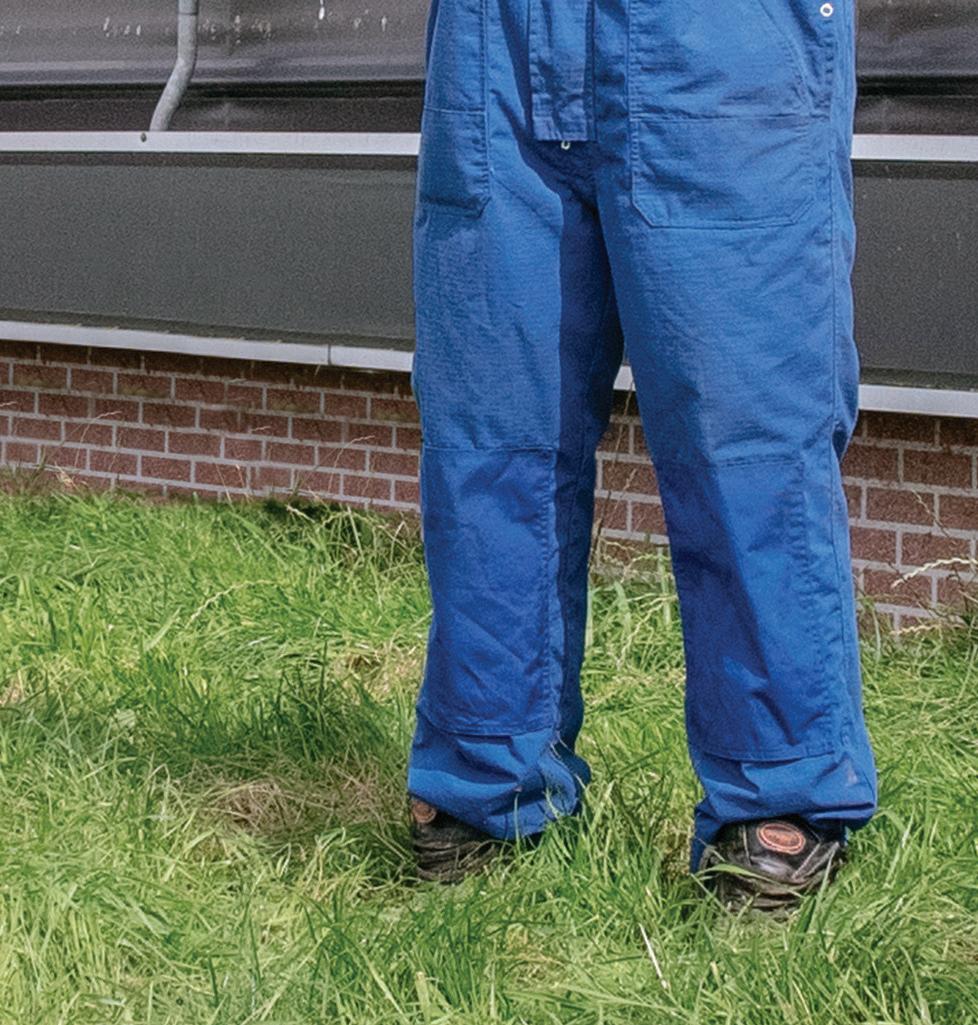


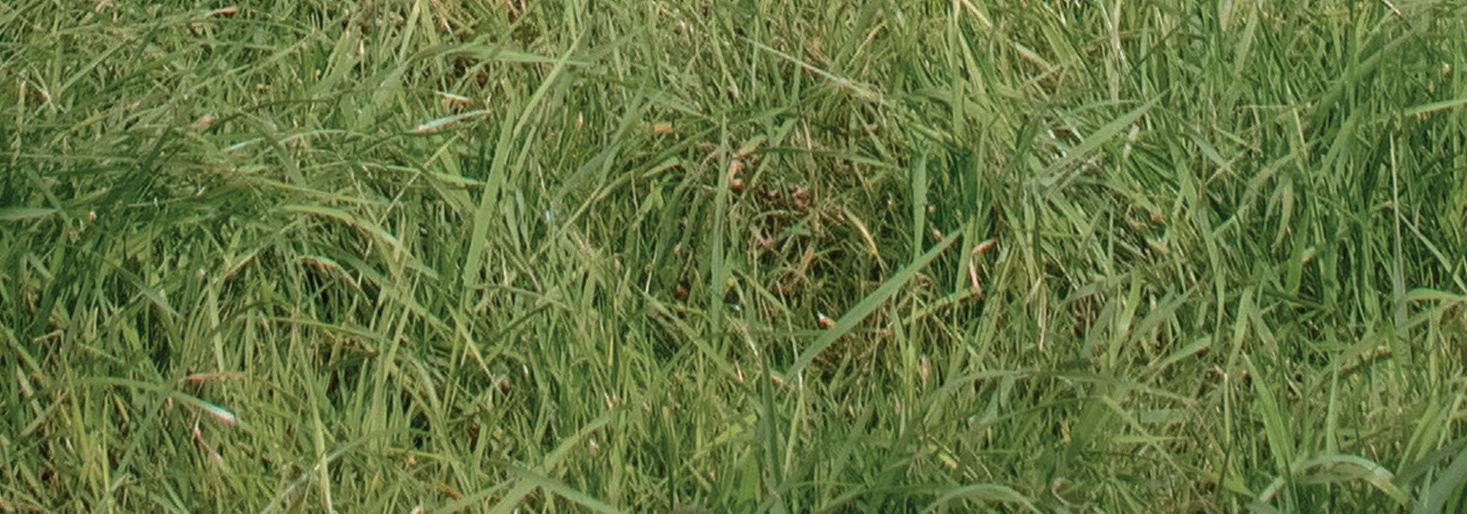
delaval.com
bigger? Sign up for a free consulation today A System Designed Around You Scan here to find out more
Thinking









































































































































































 Robert Kelly
Robert Kelly










 Prof Nina Von Keyserlingk
Prof Nina Von Keyserlingk










































































































































































































































































































































































































































































































































































































